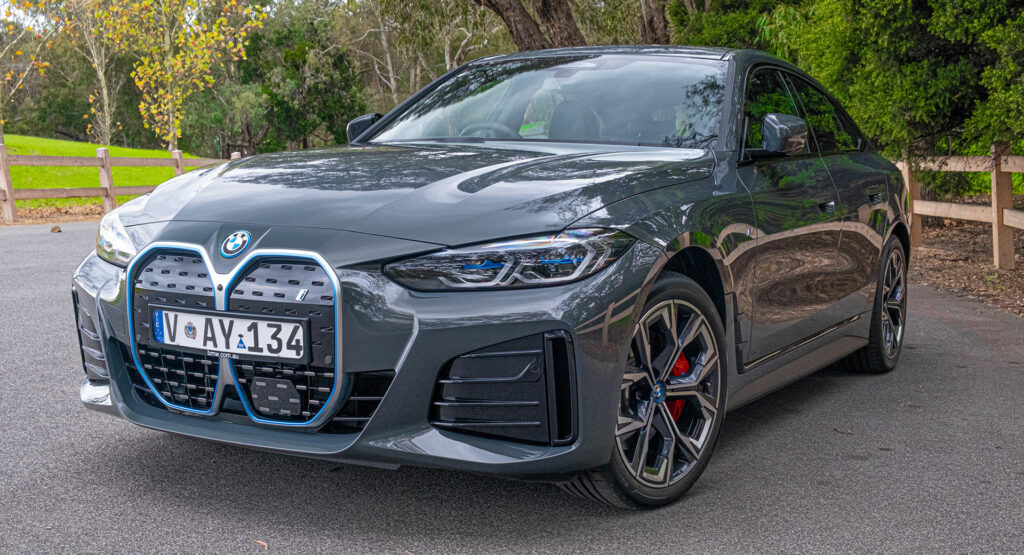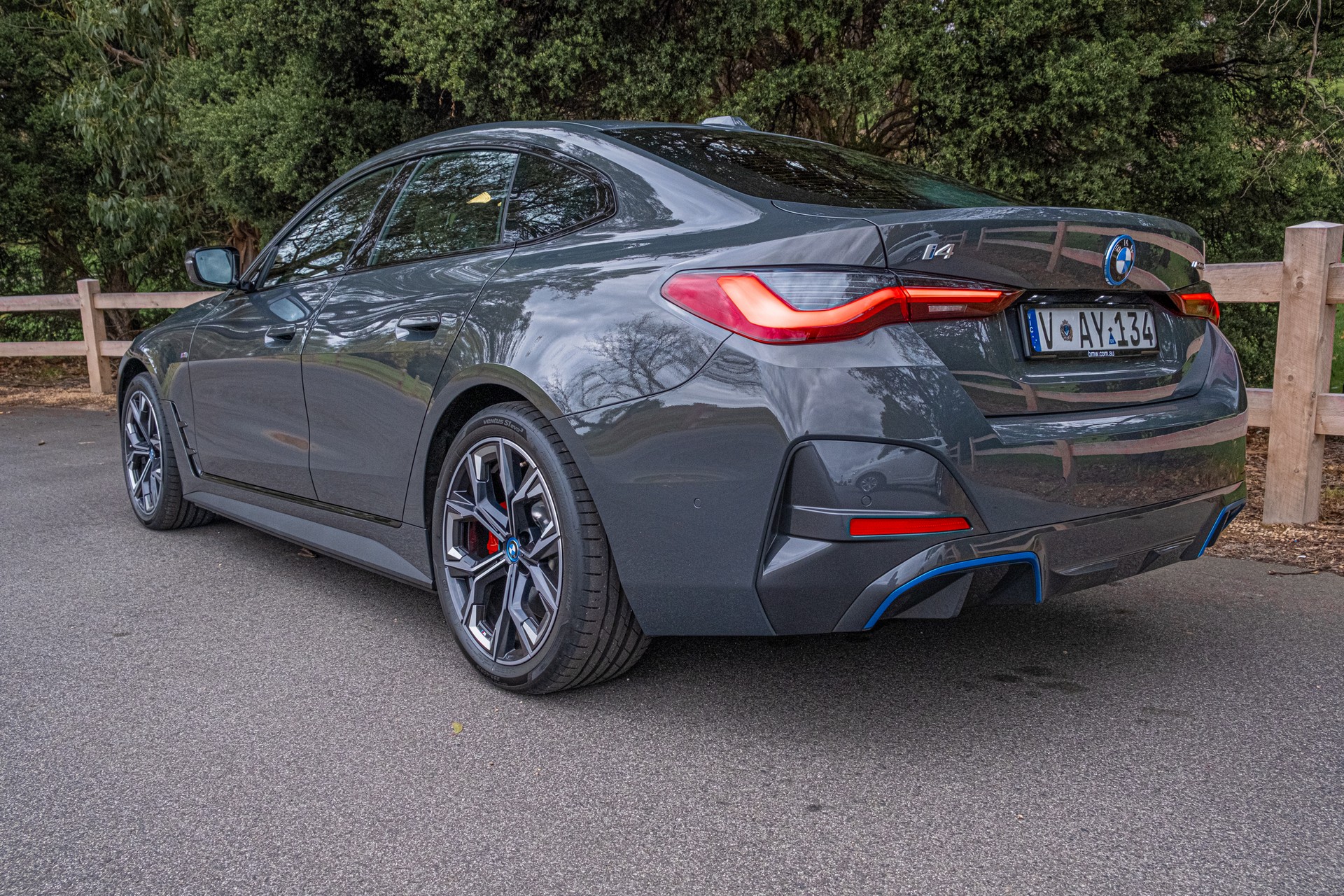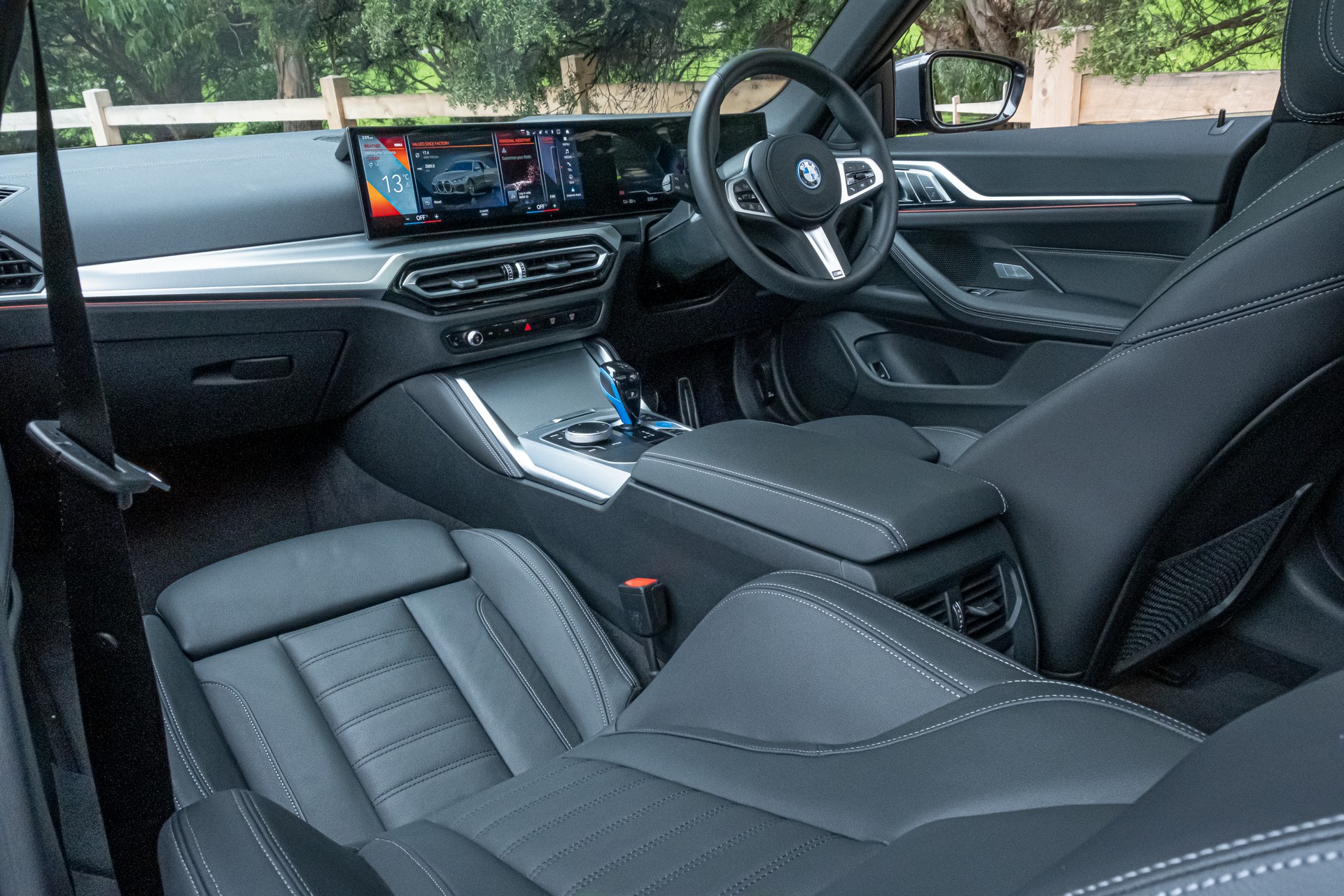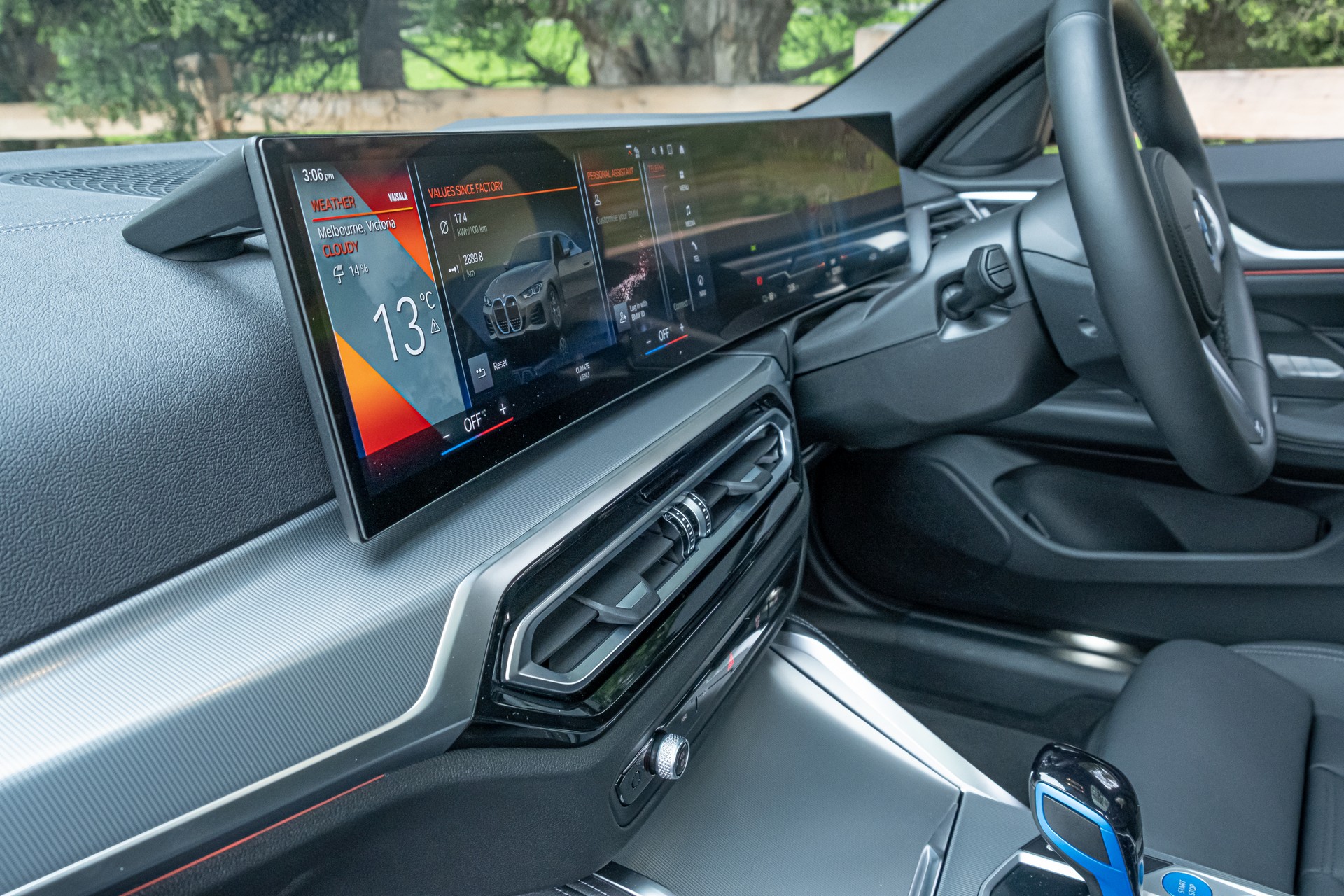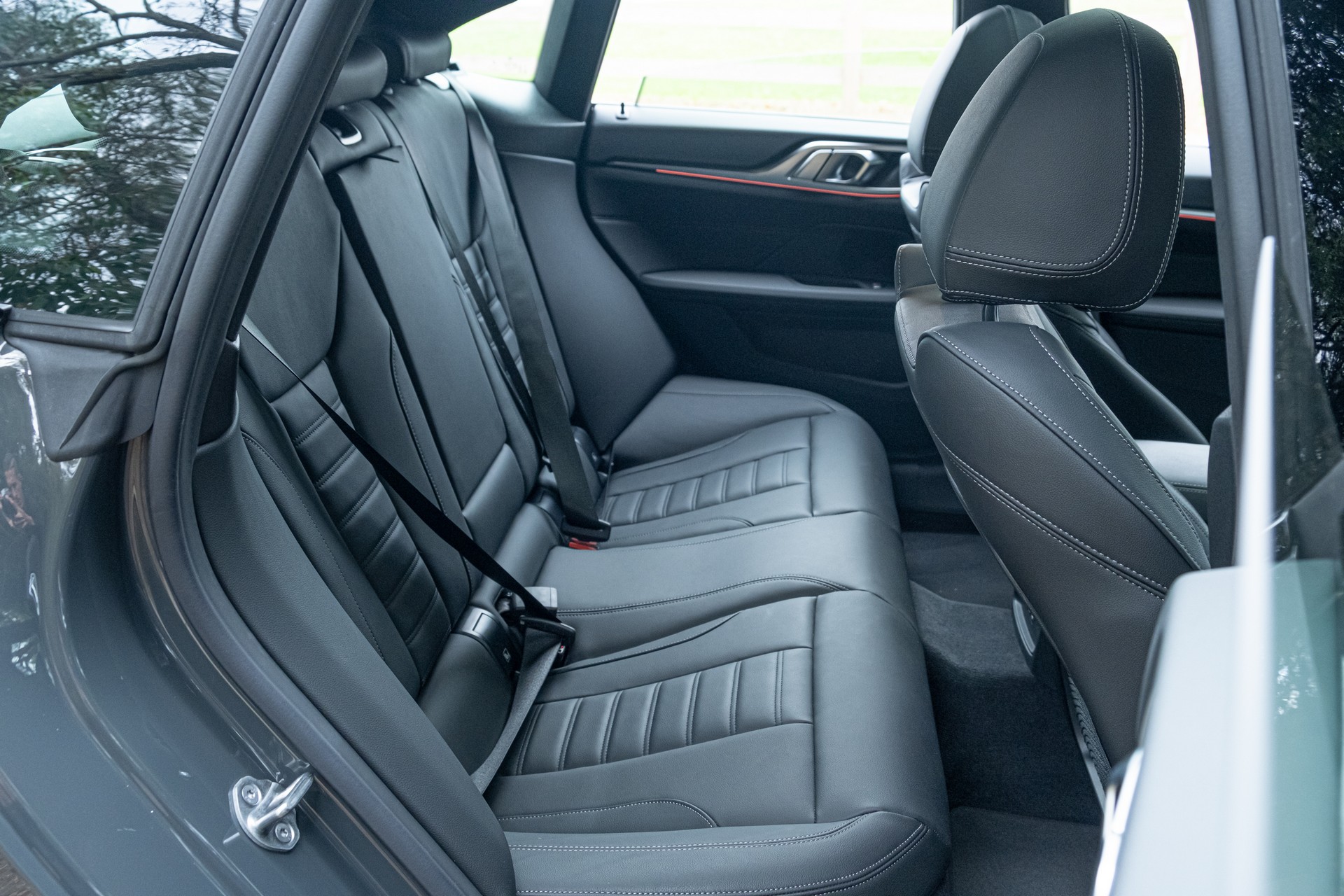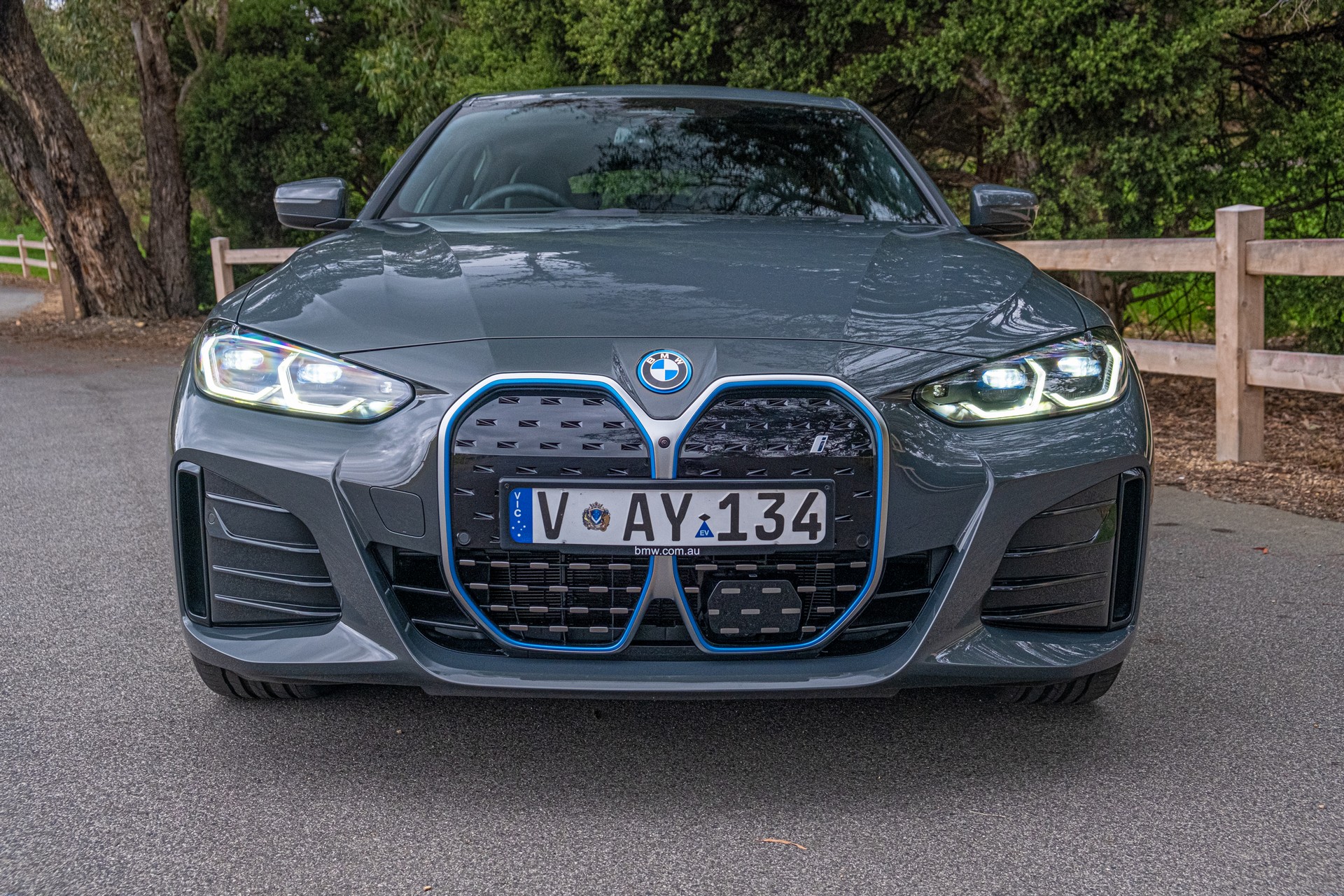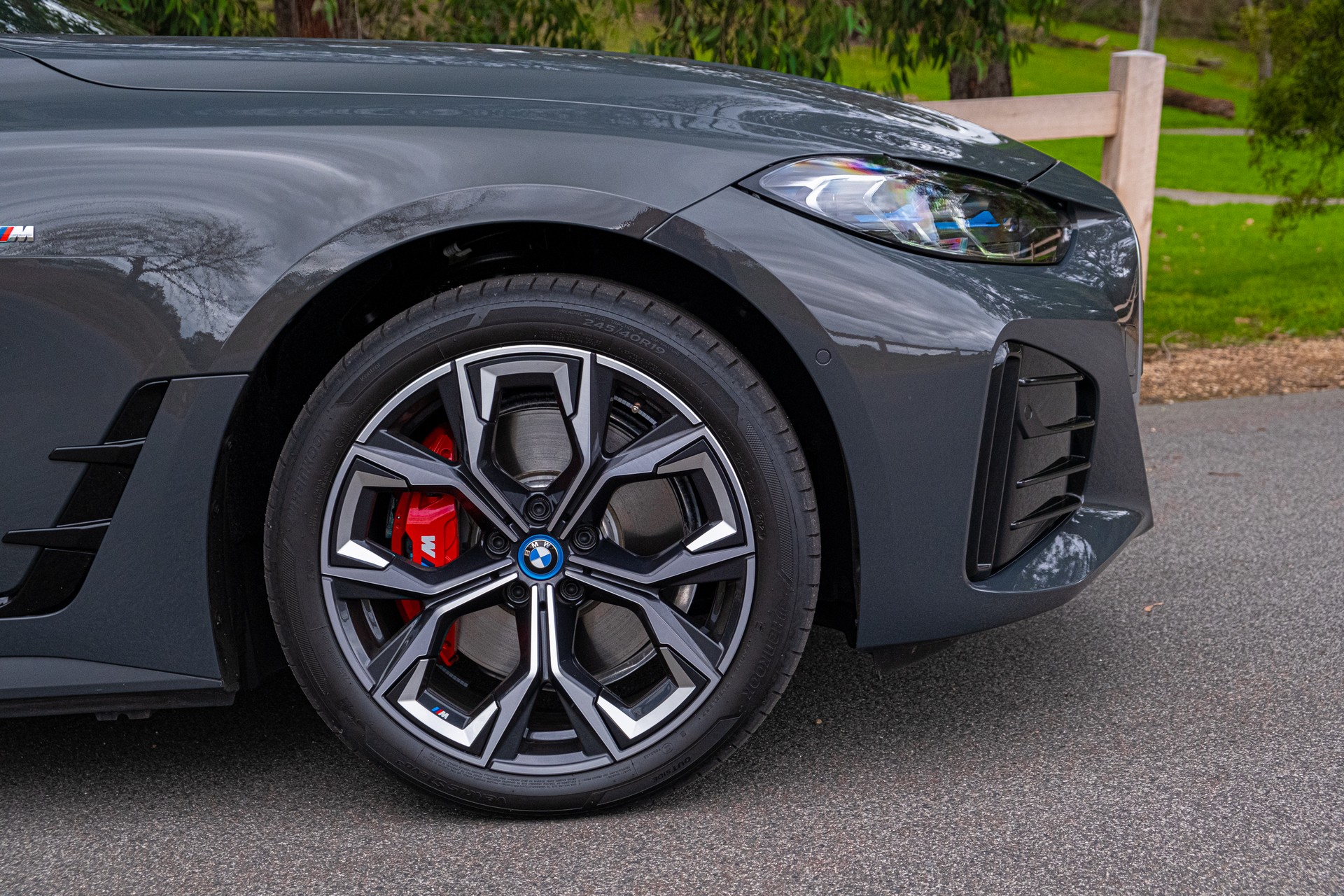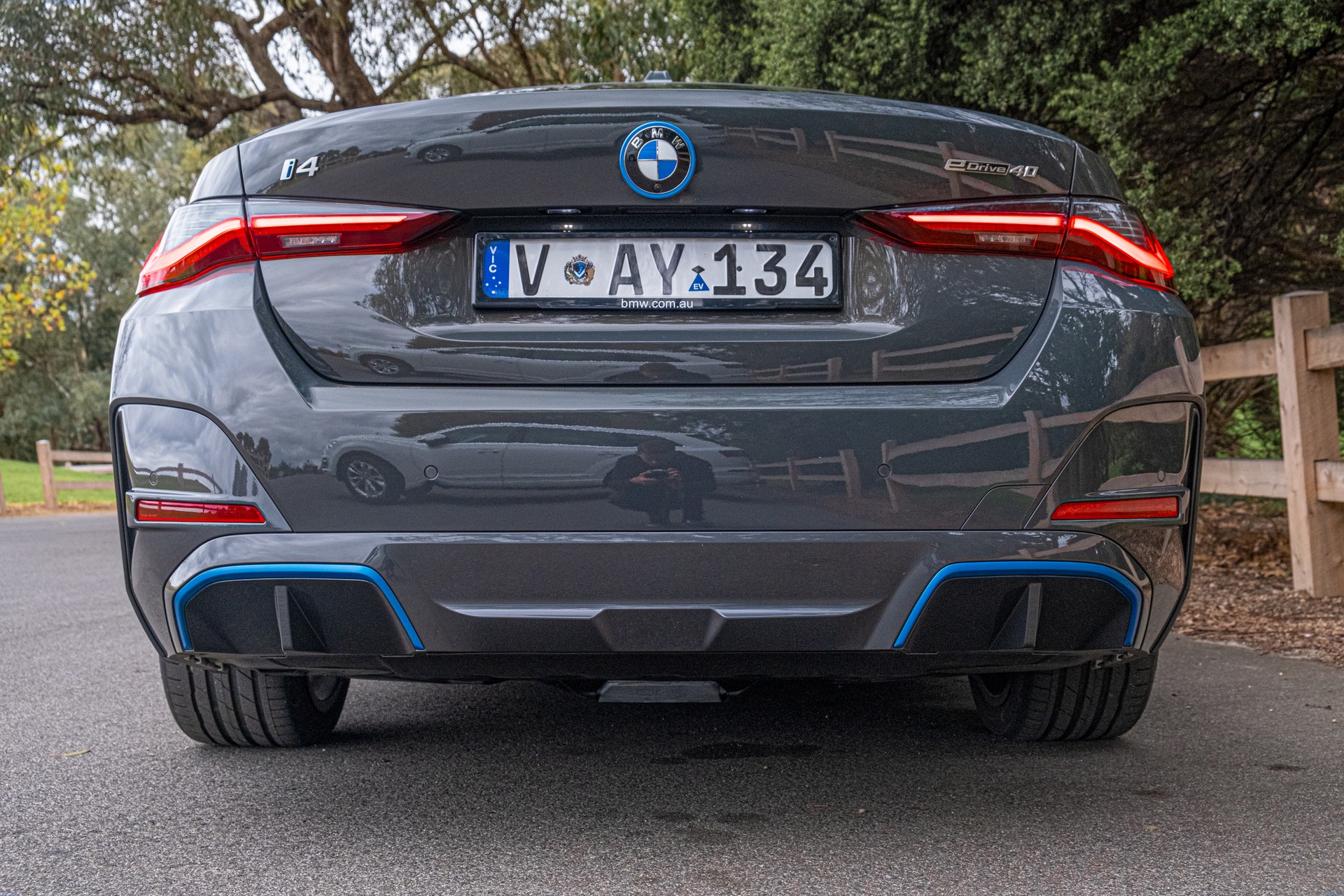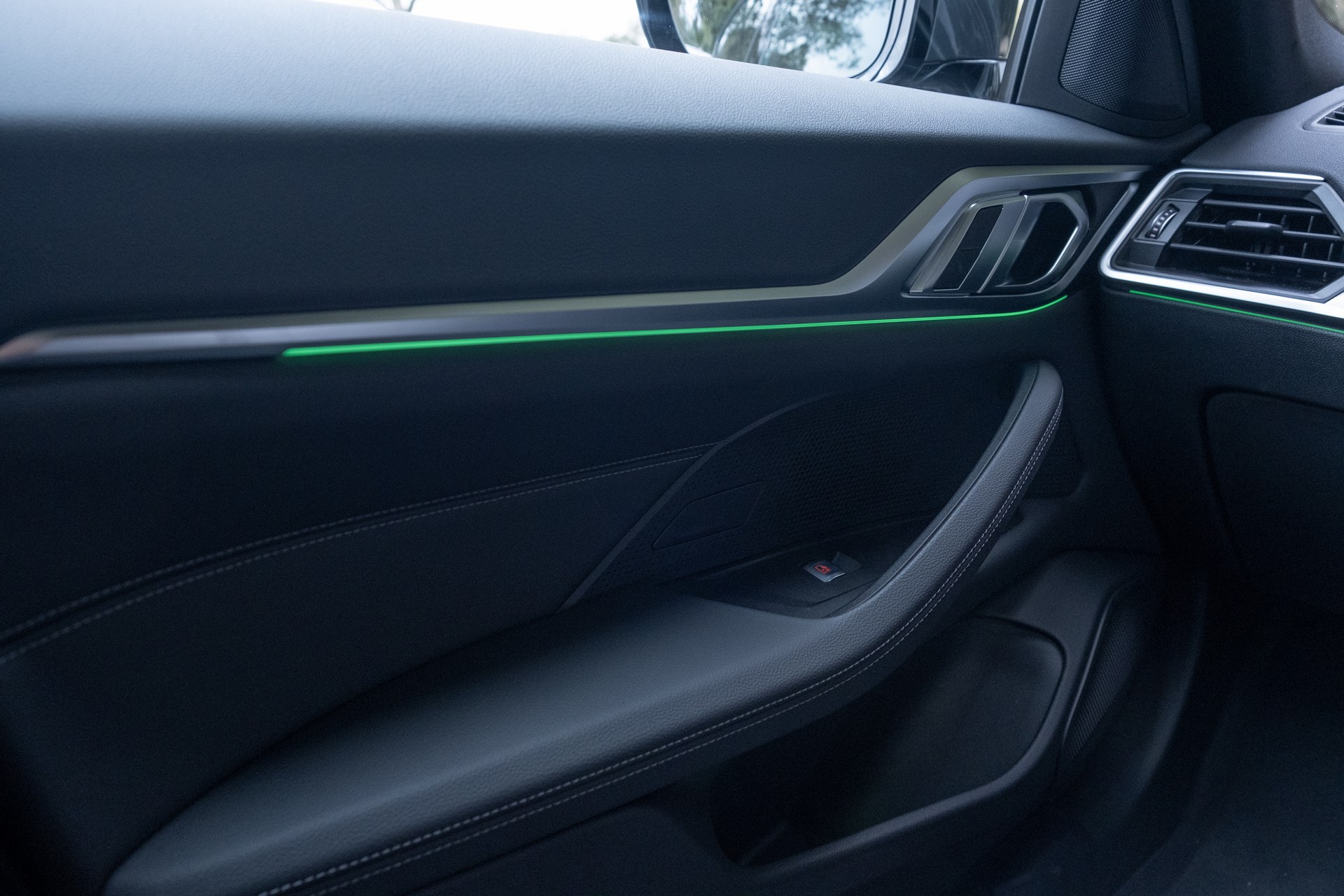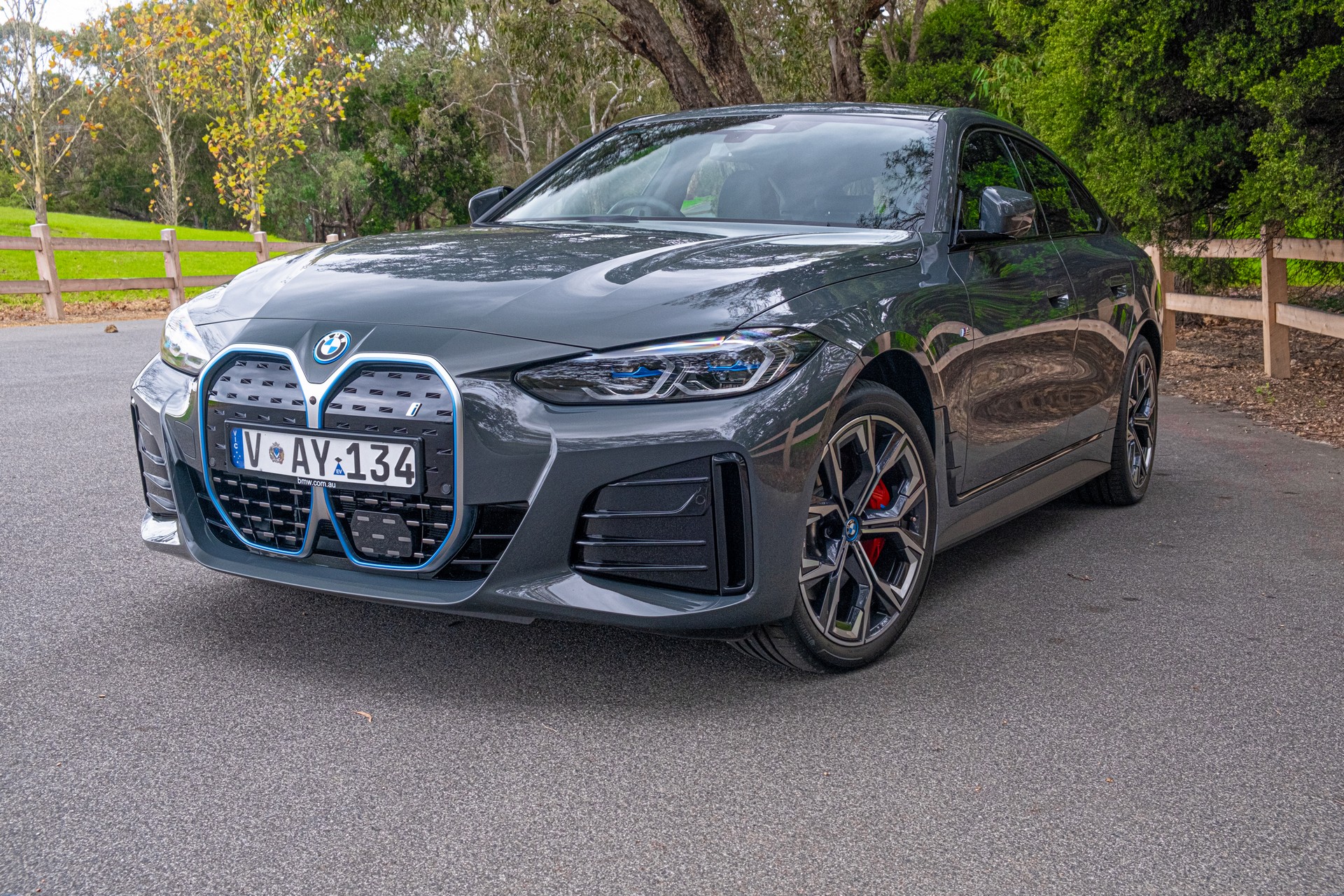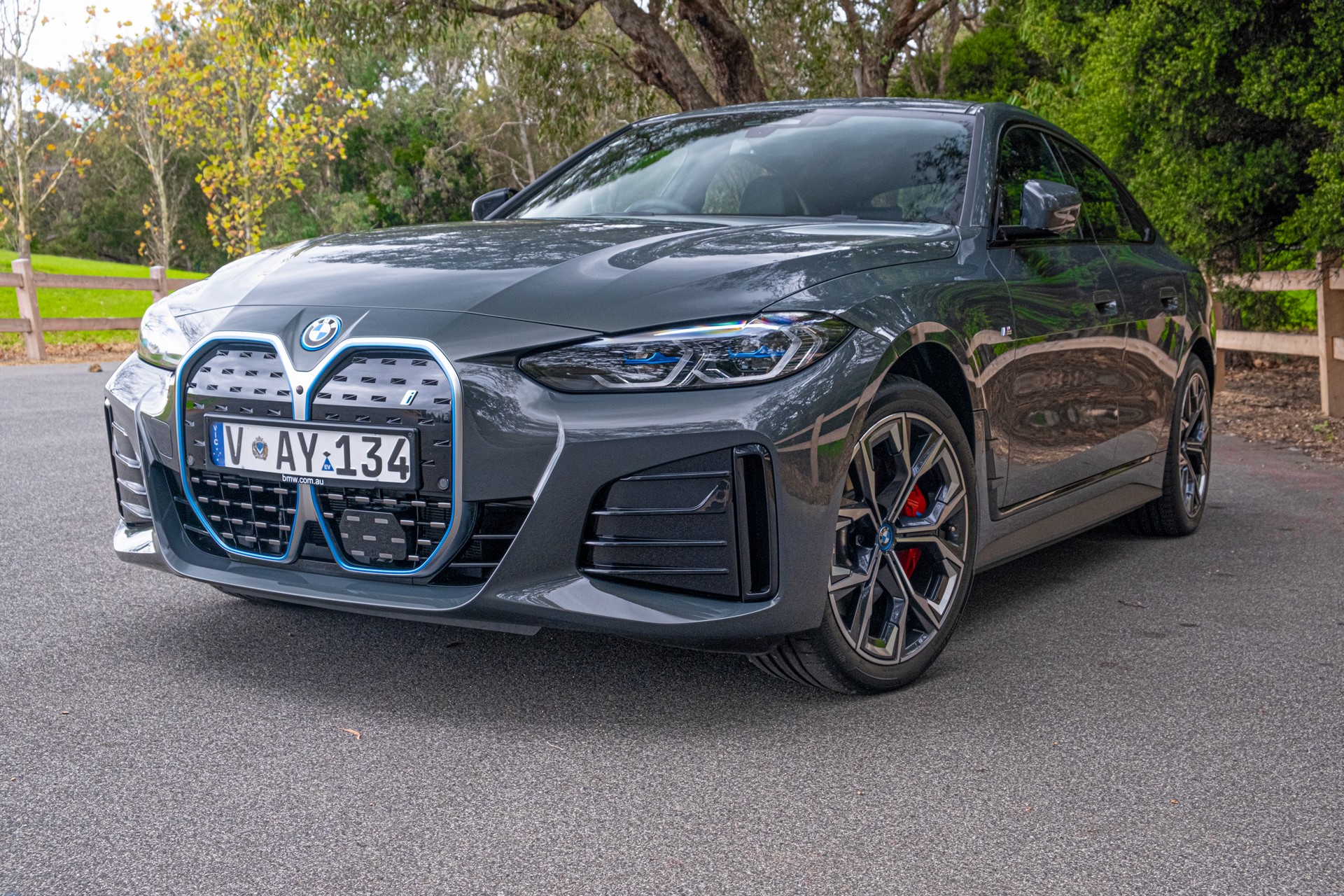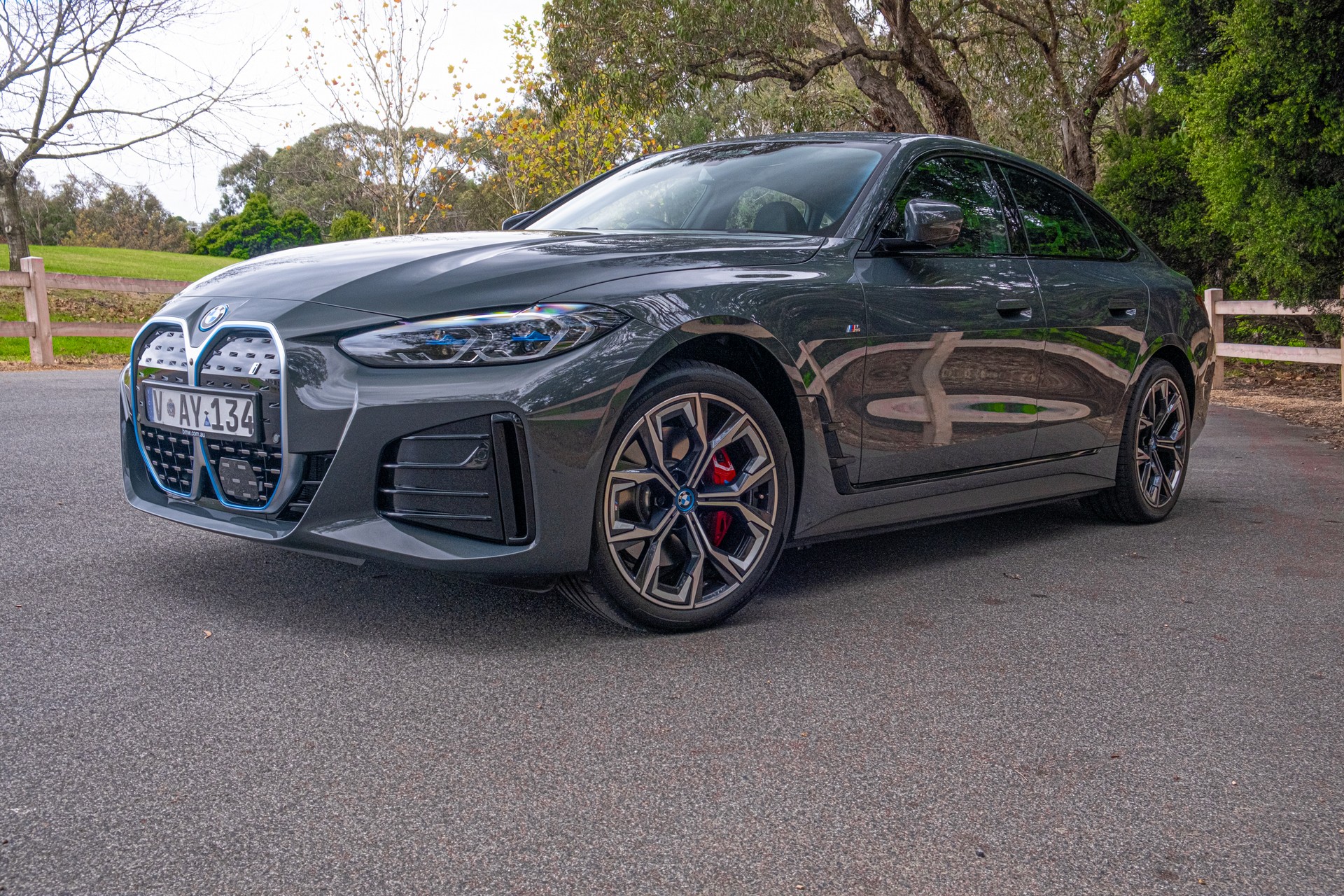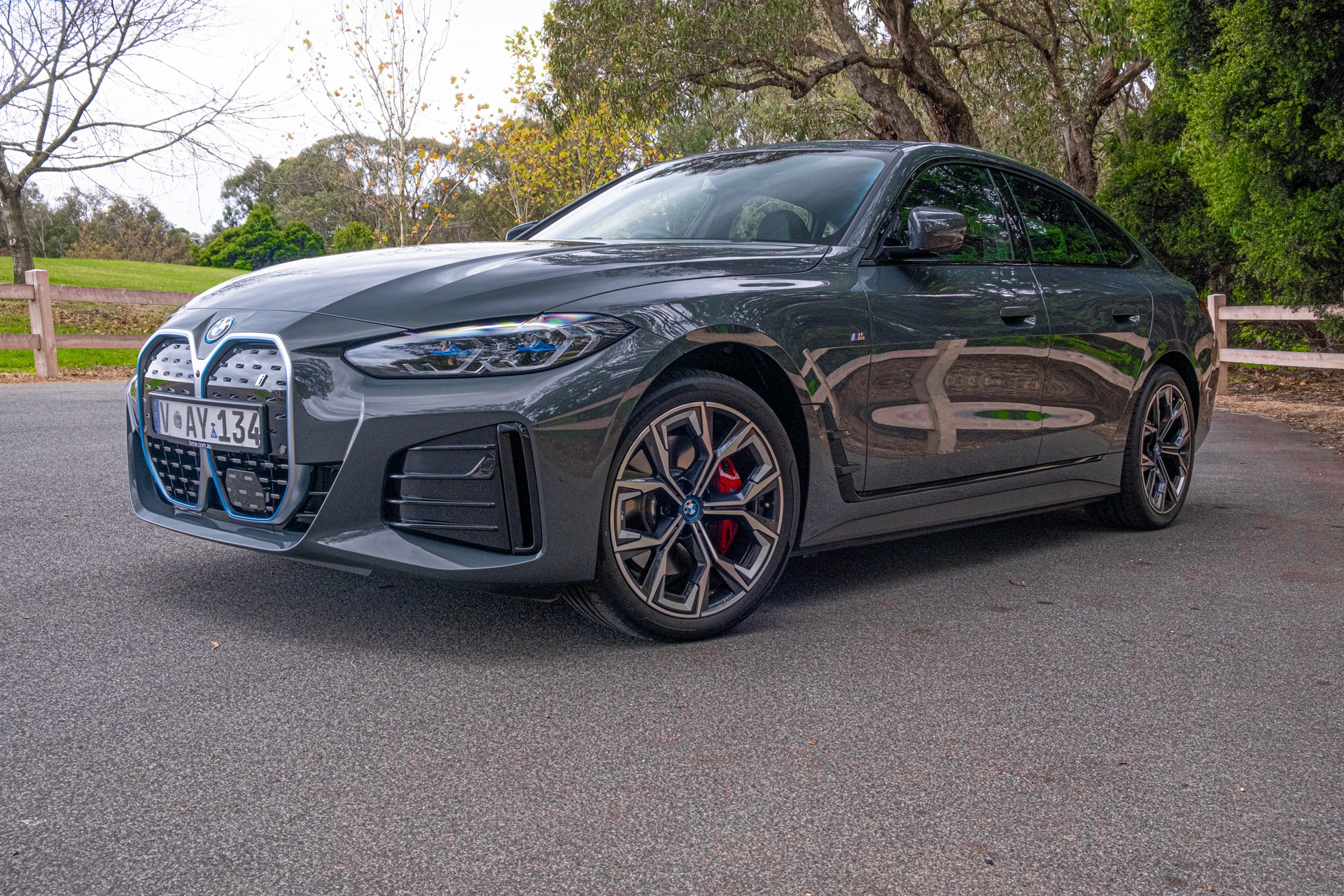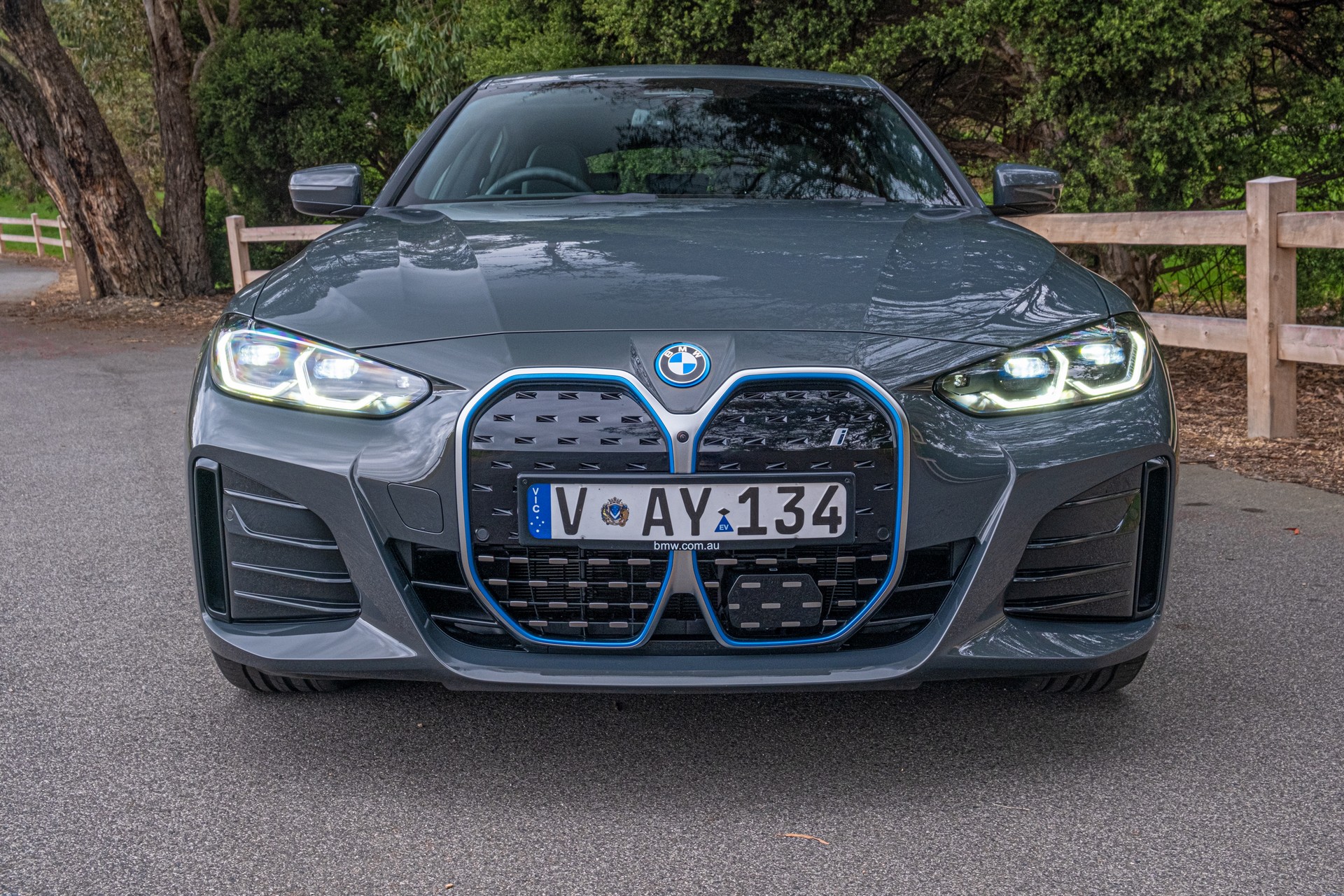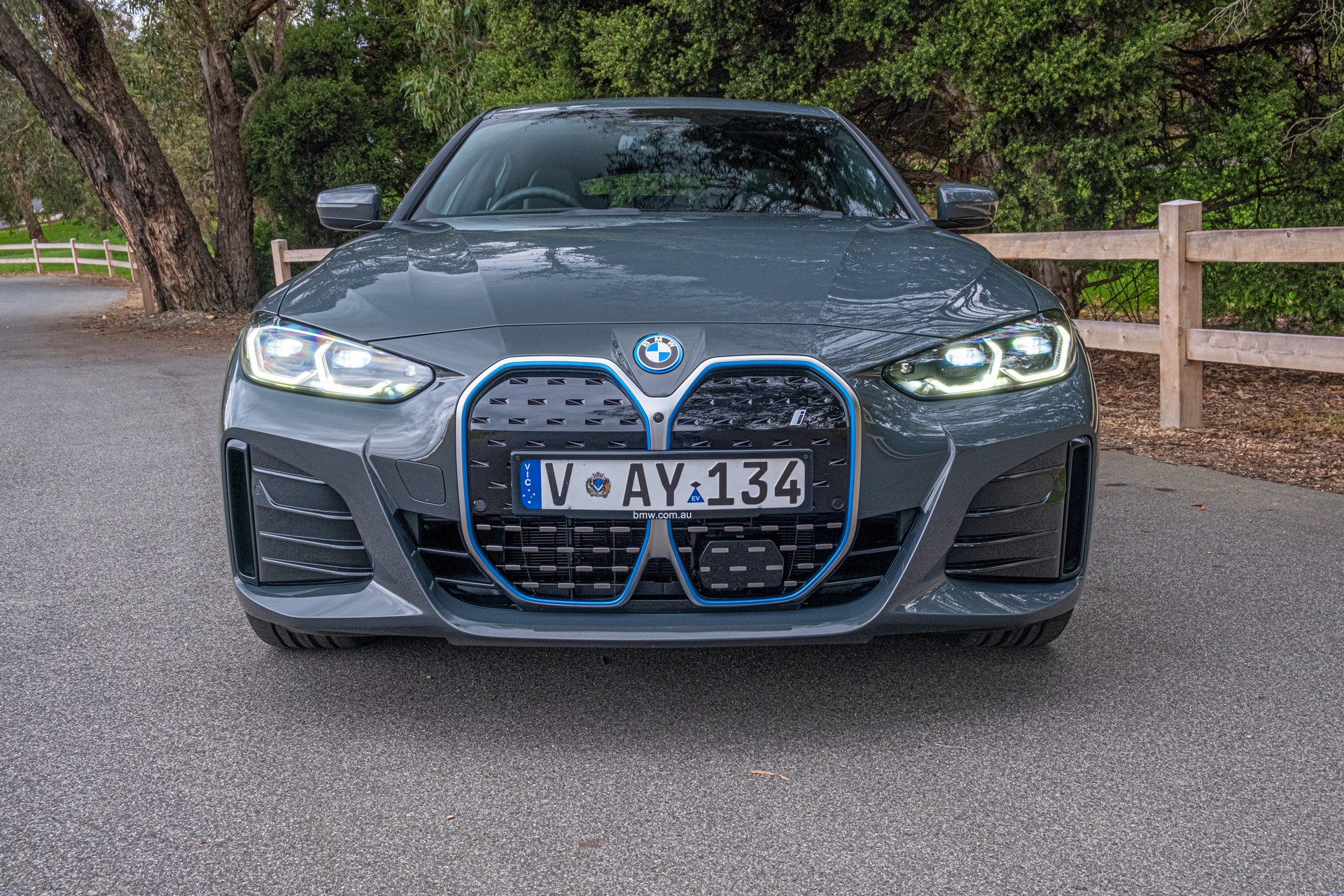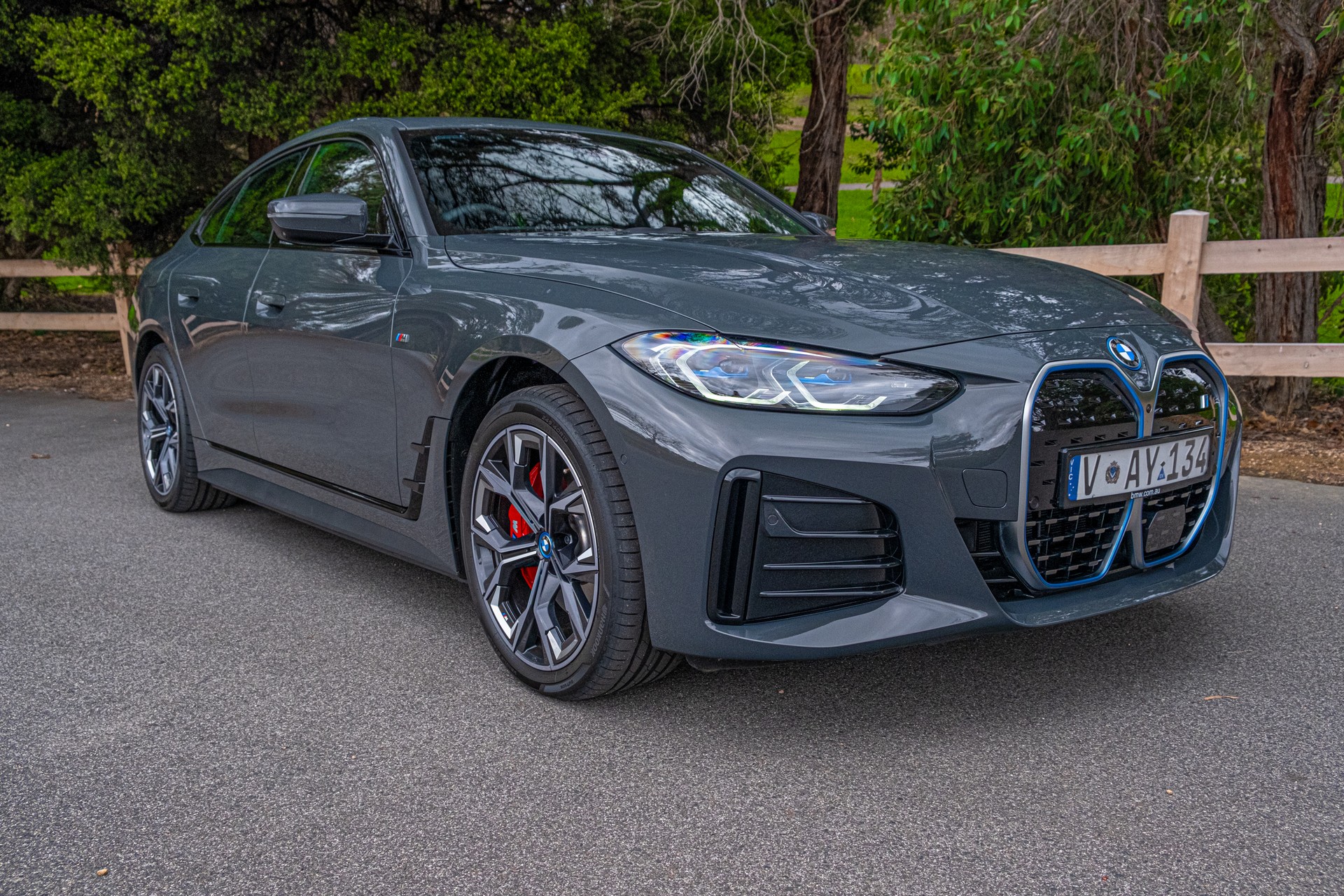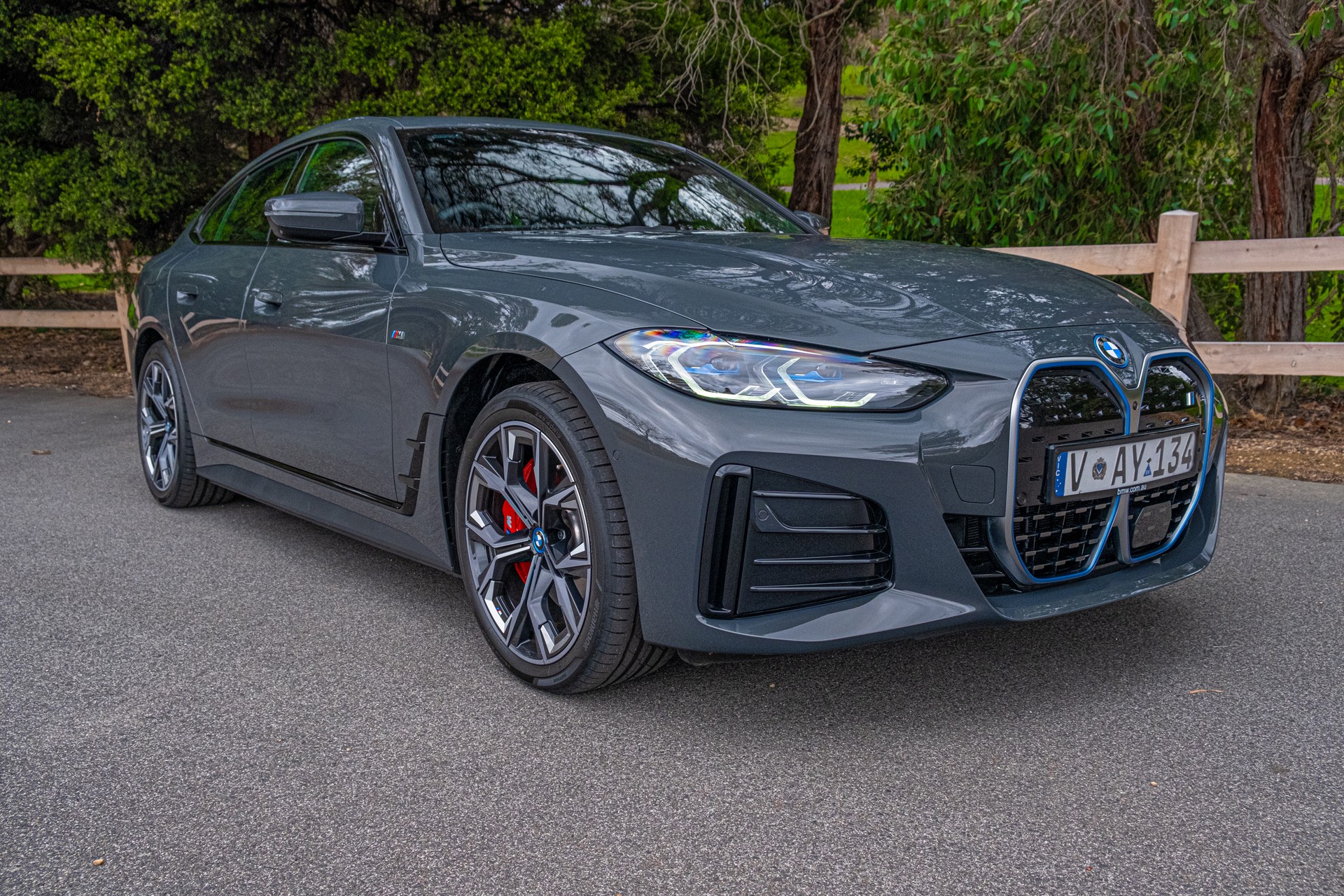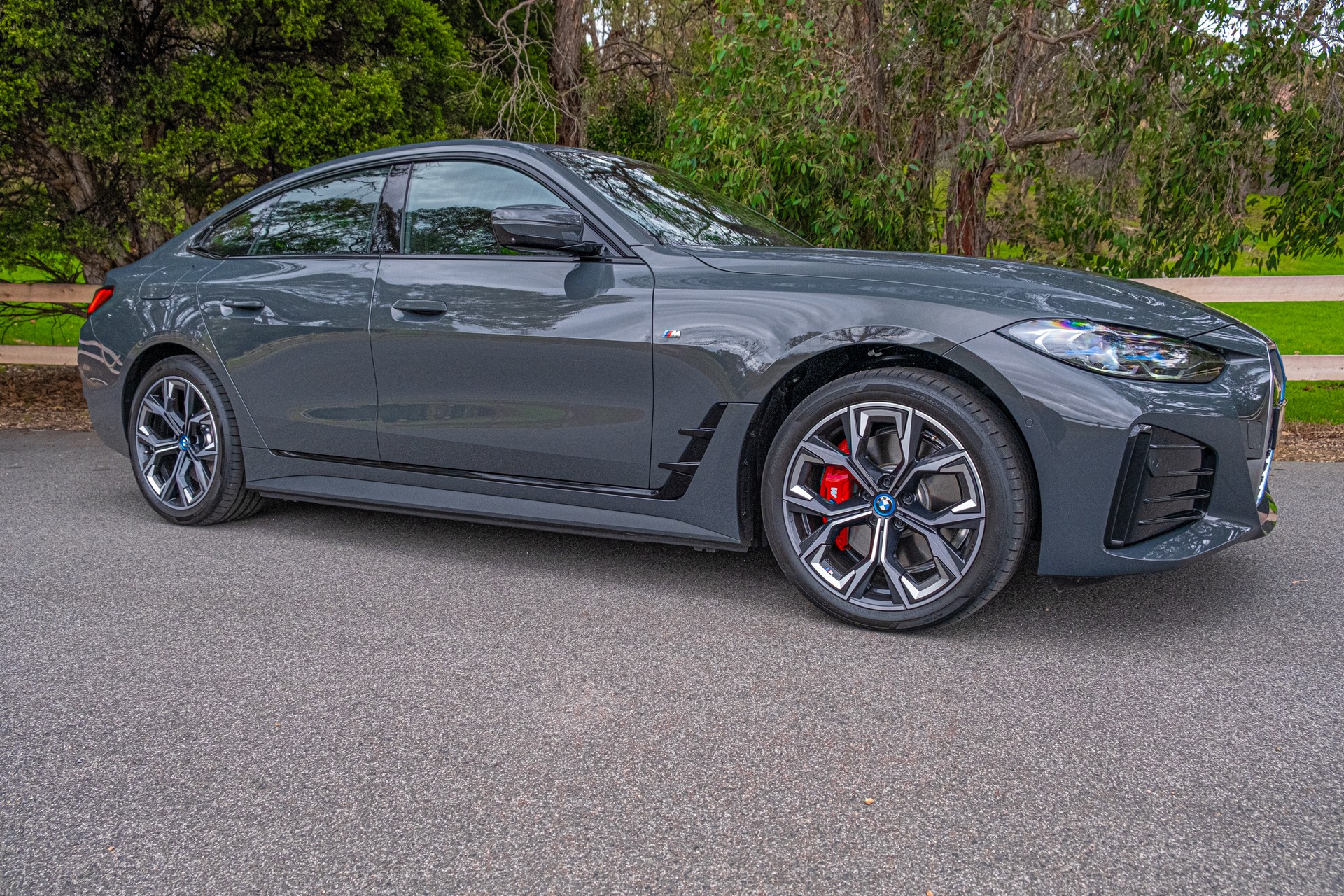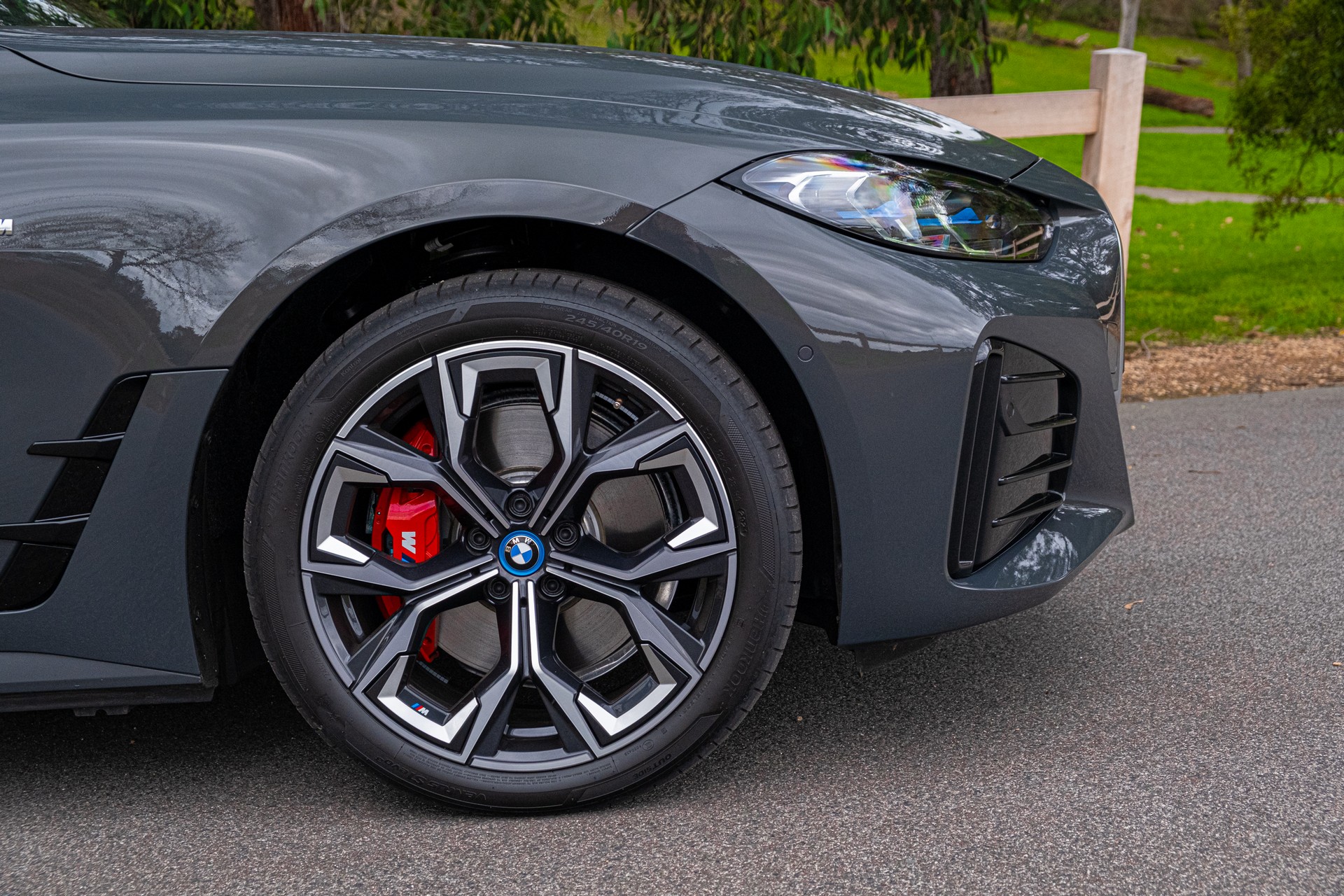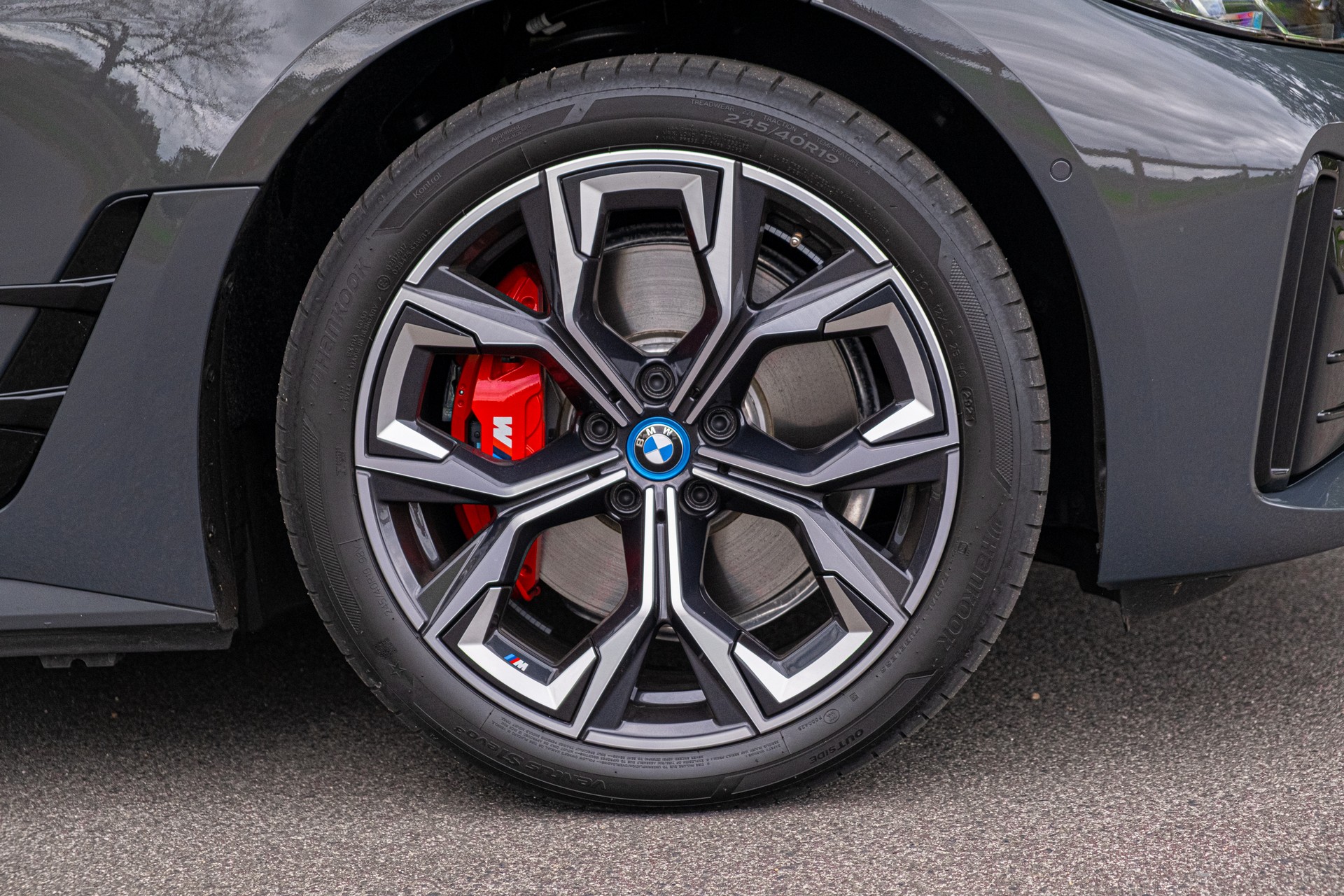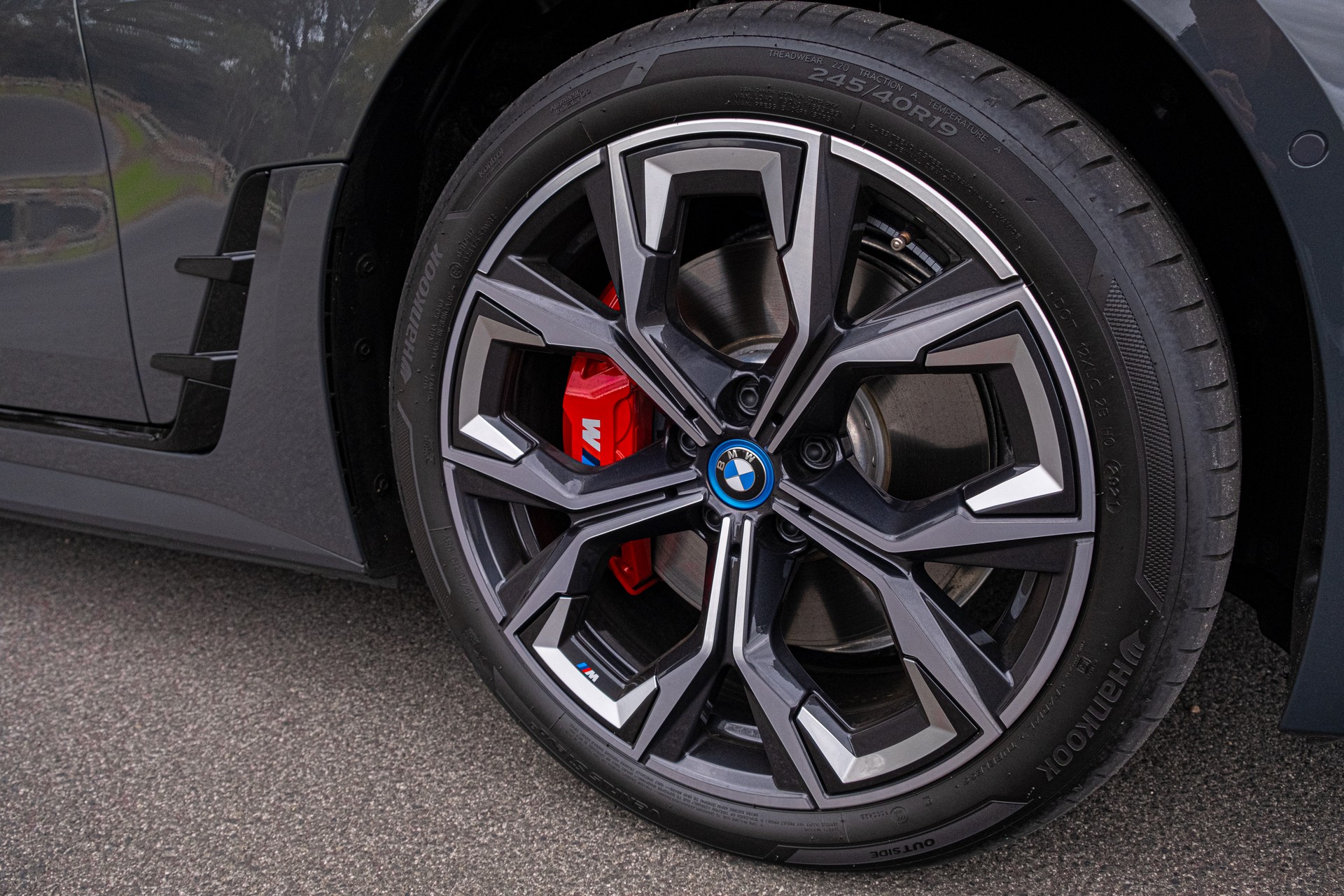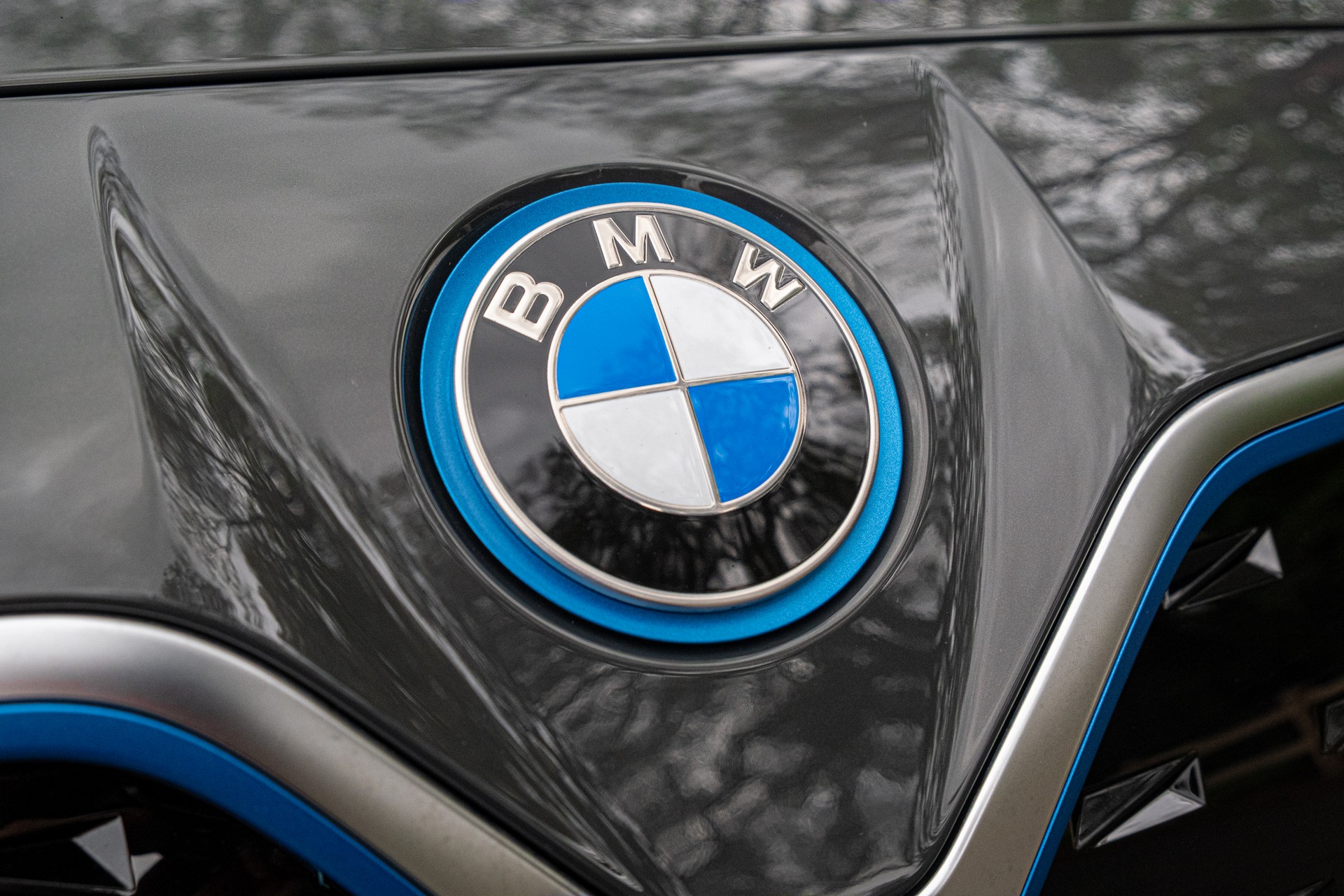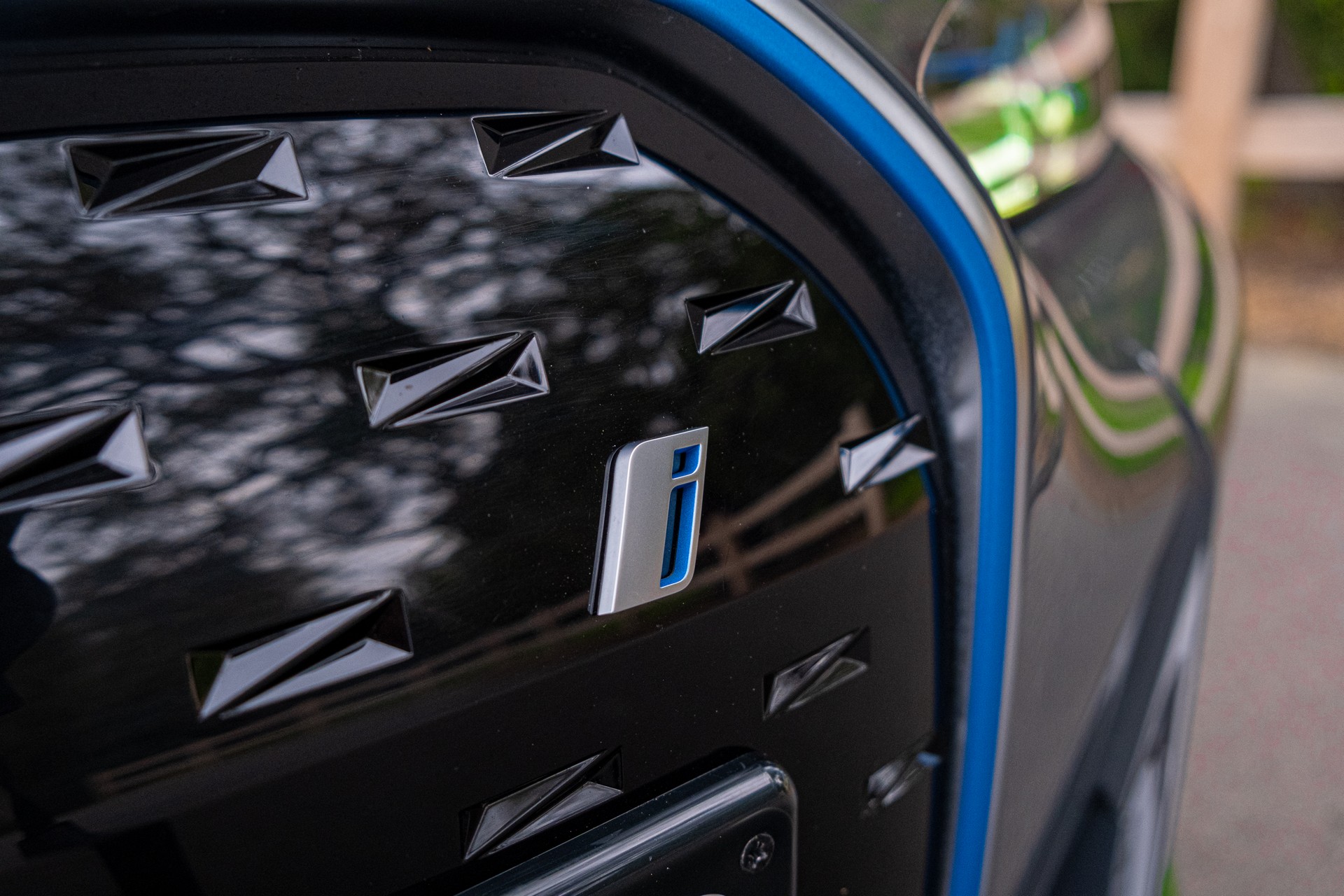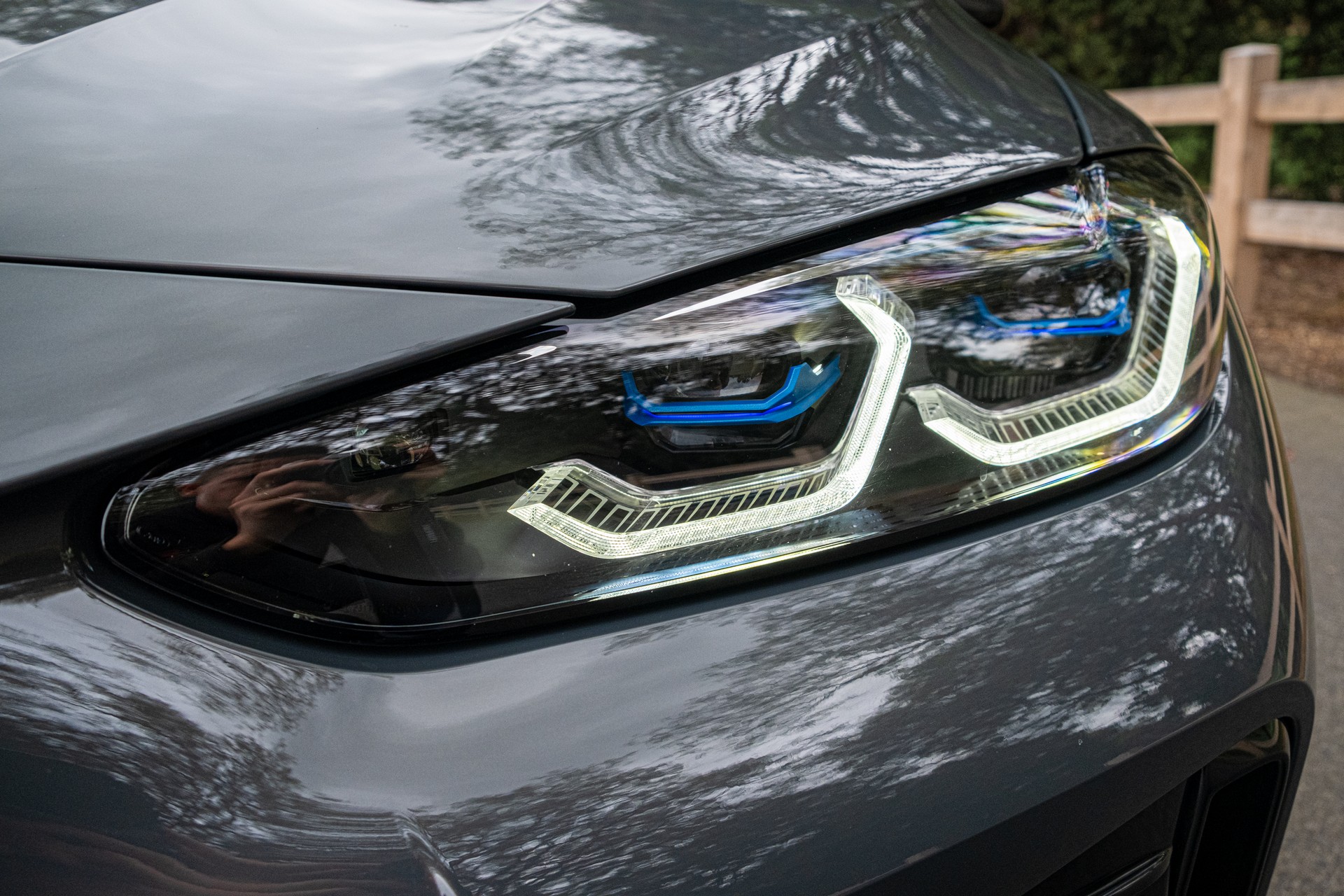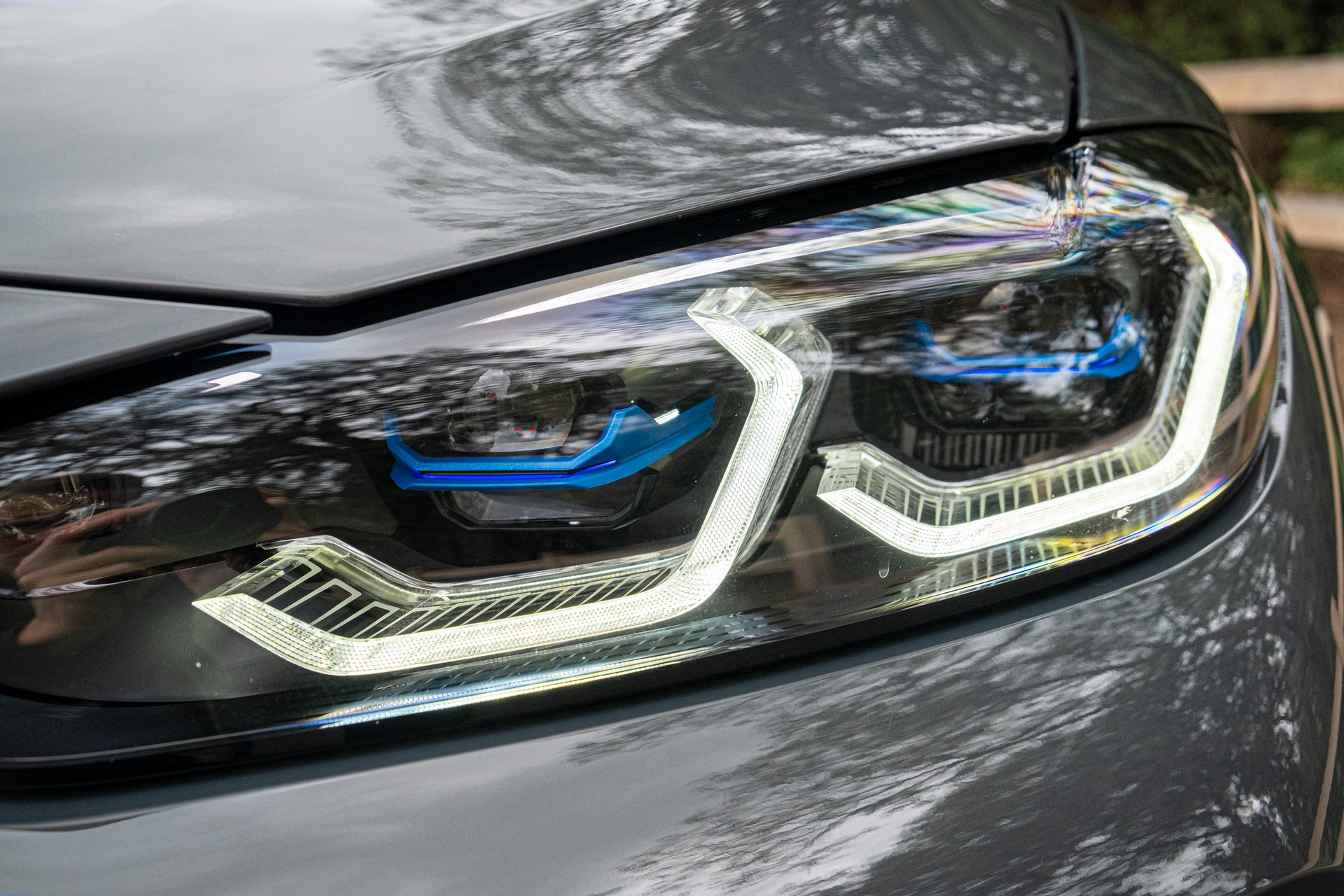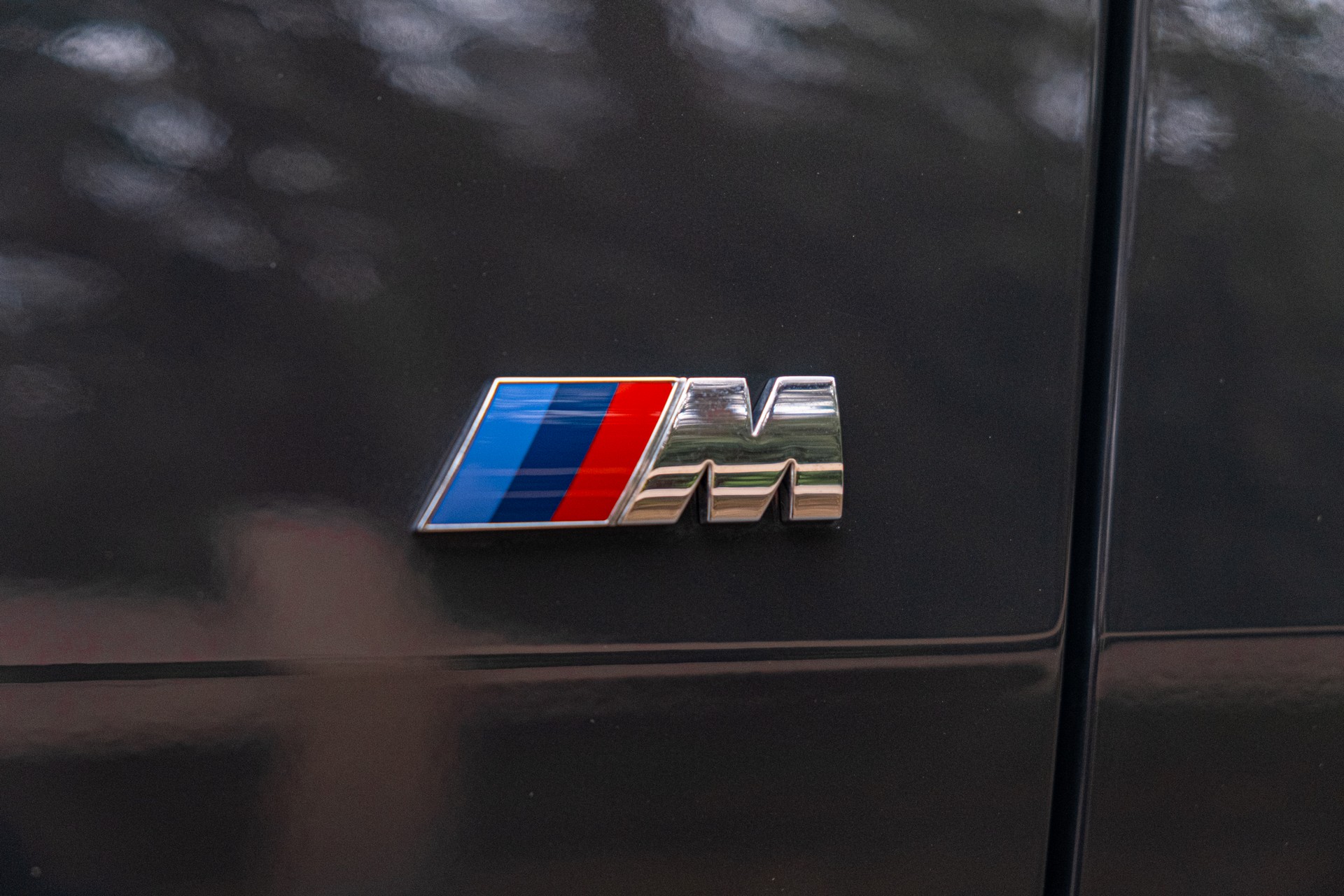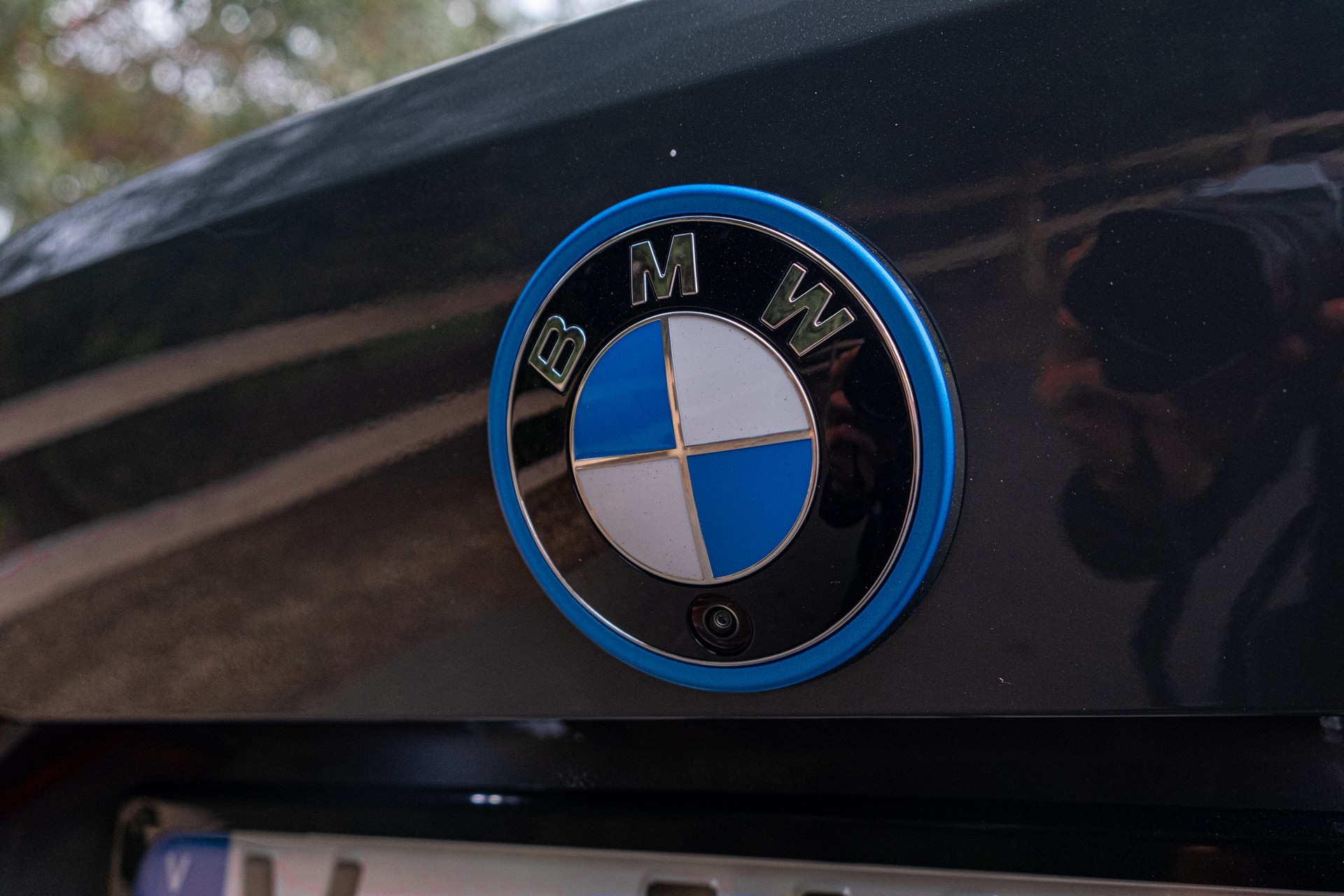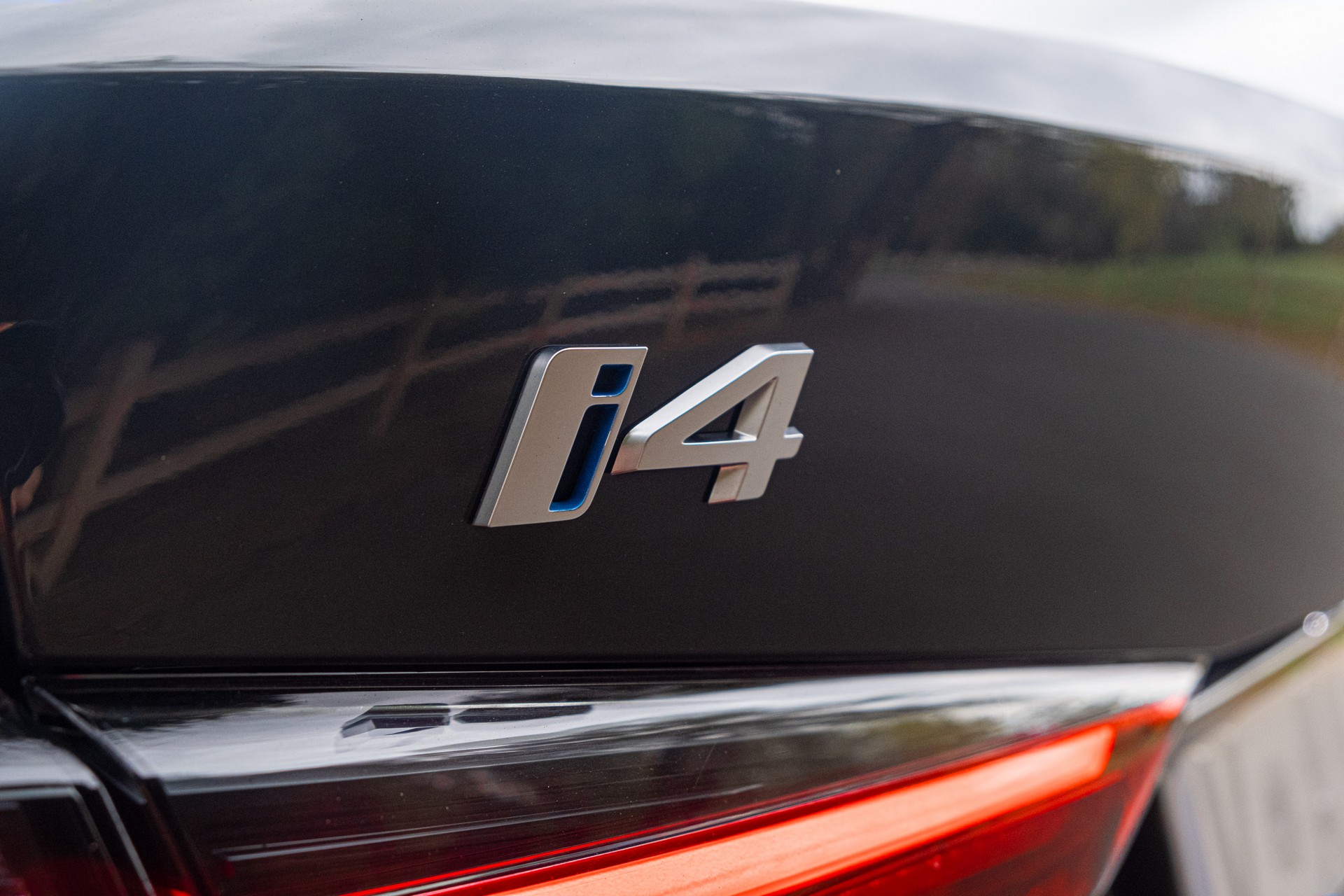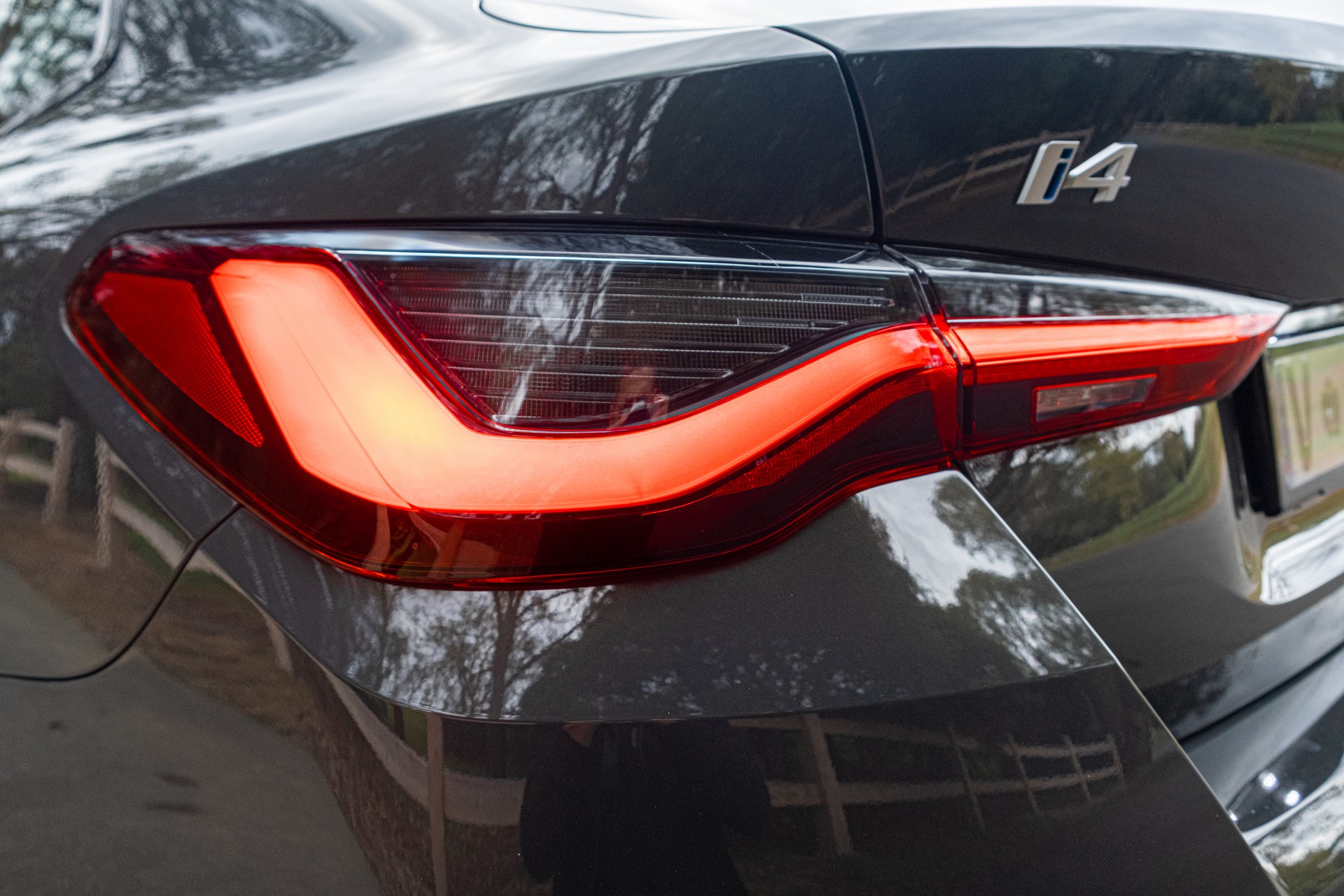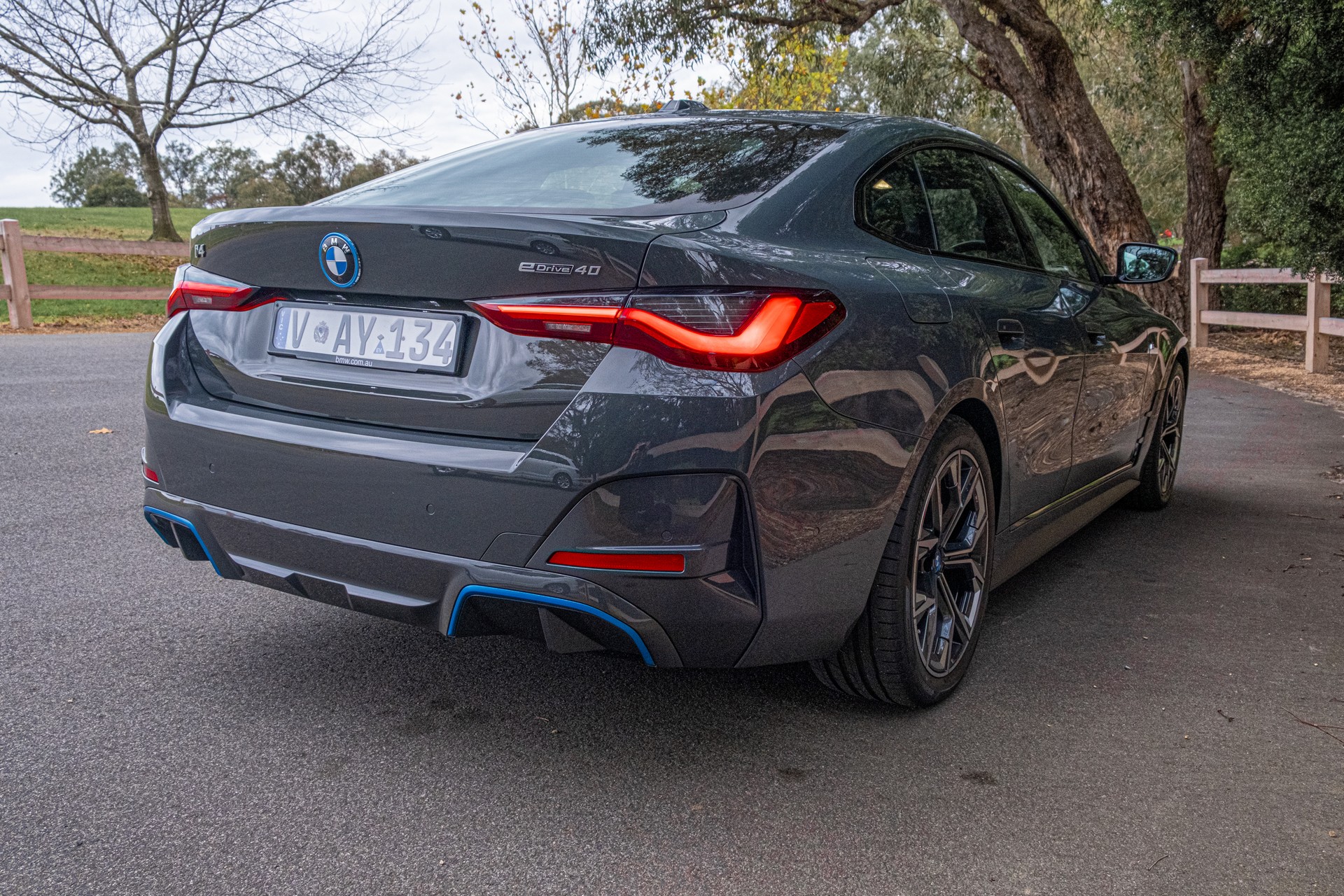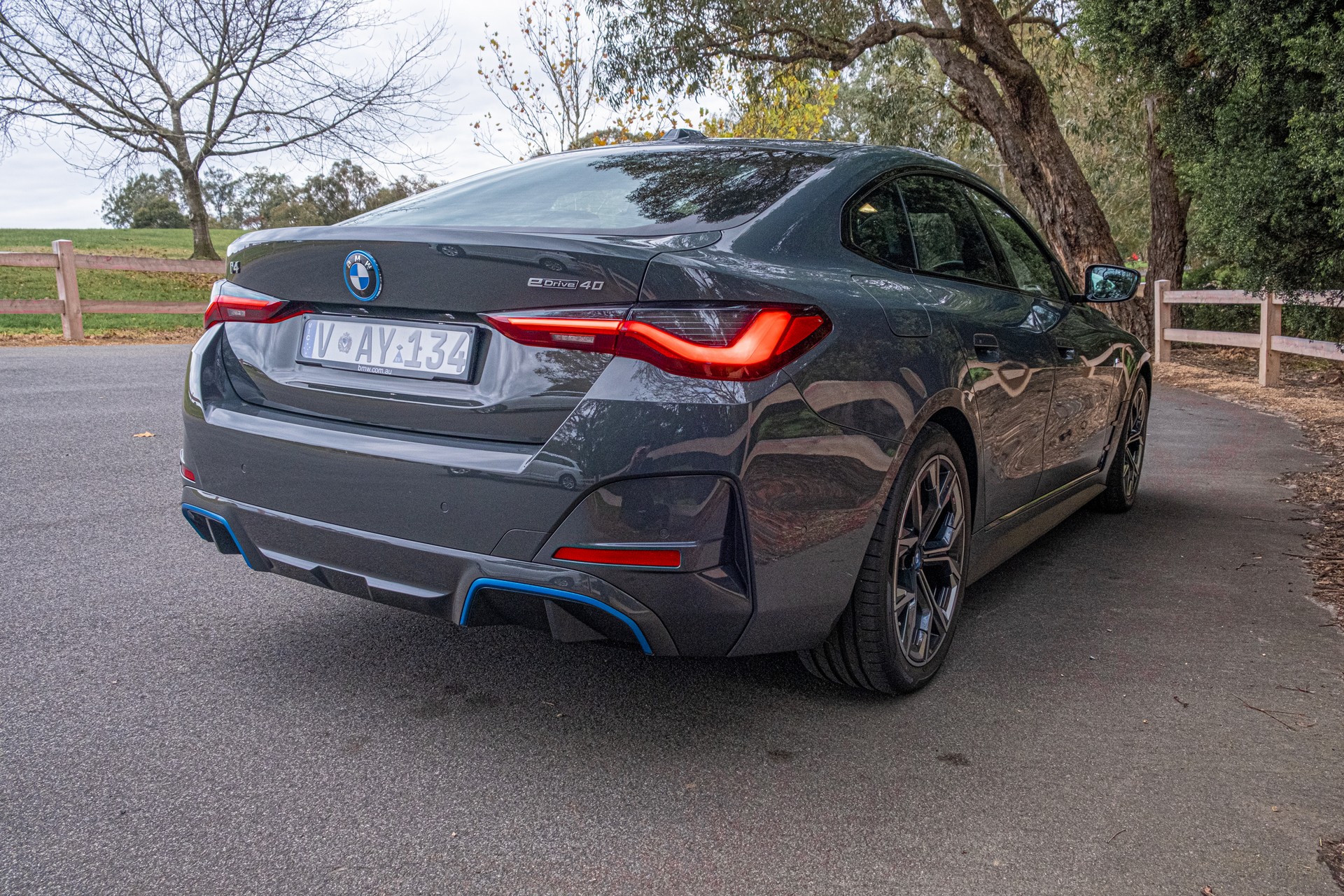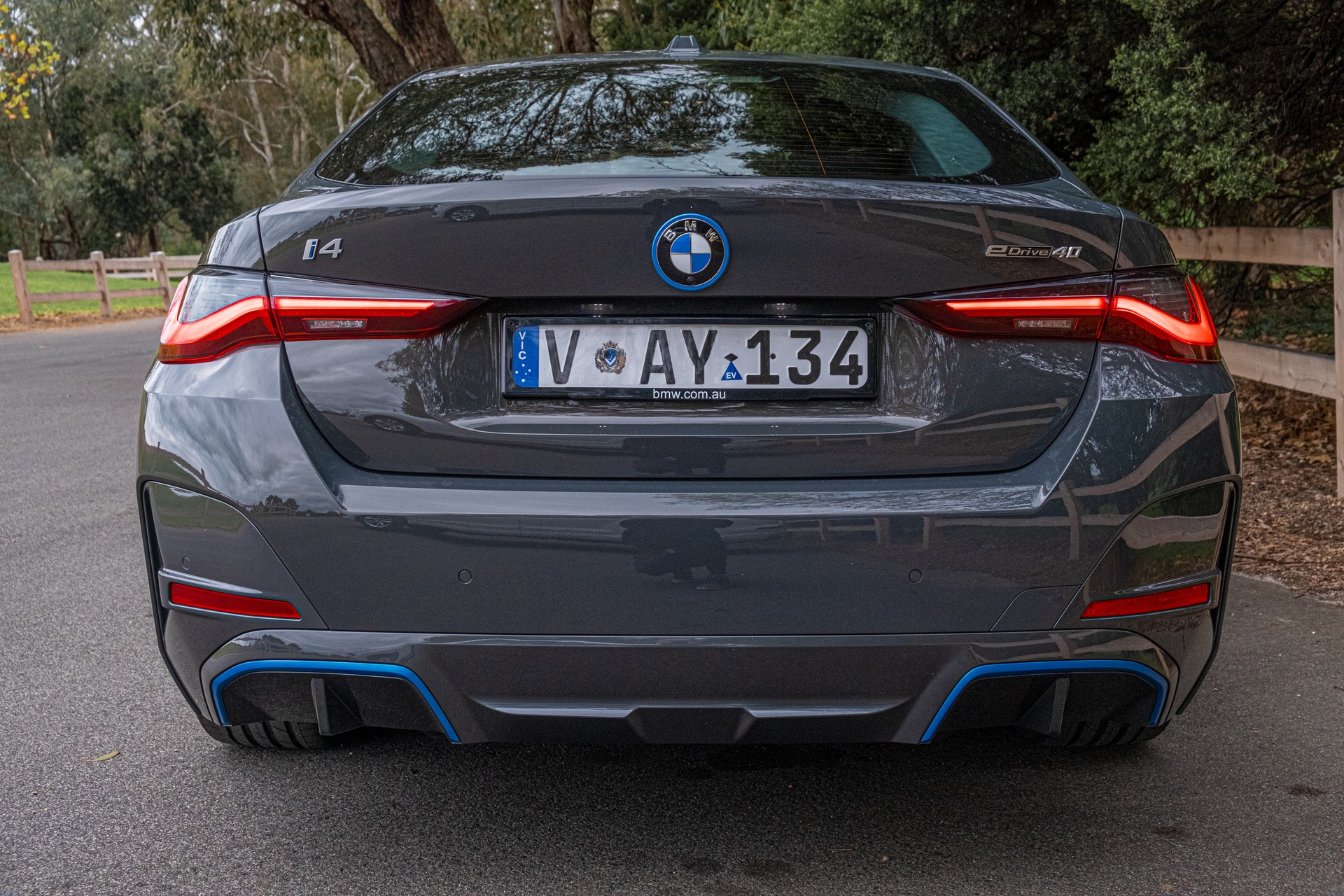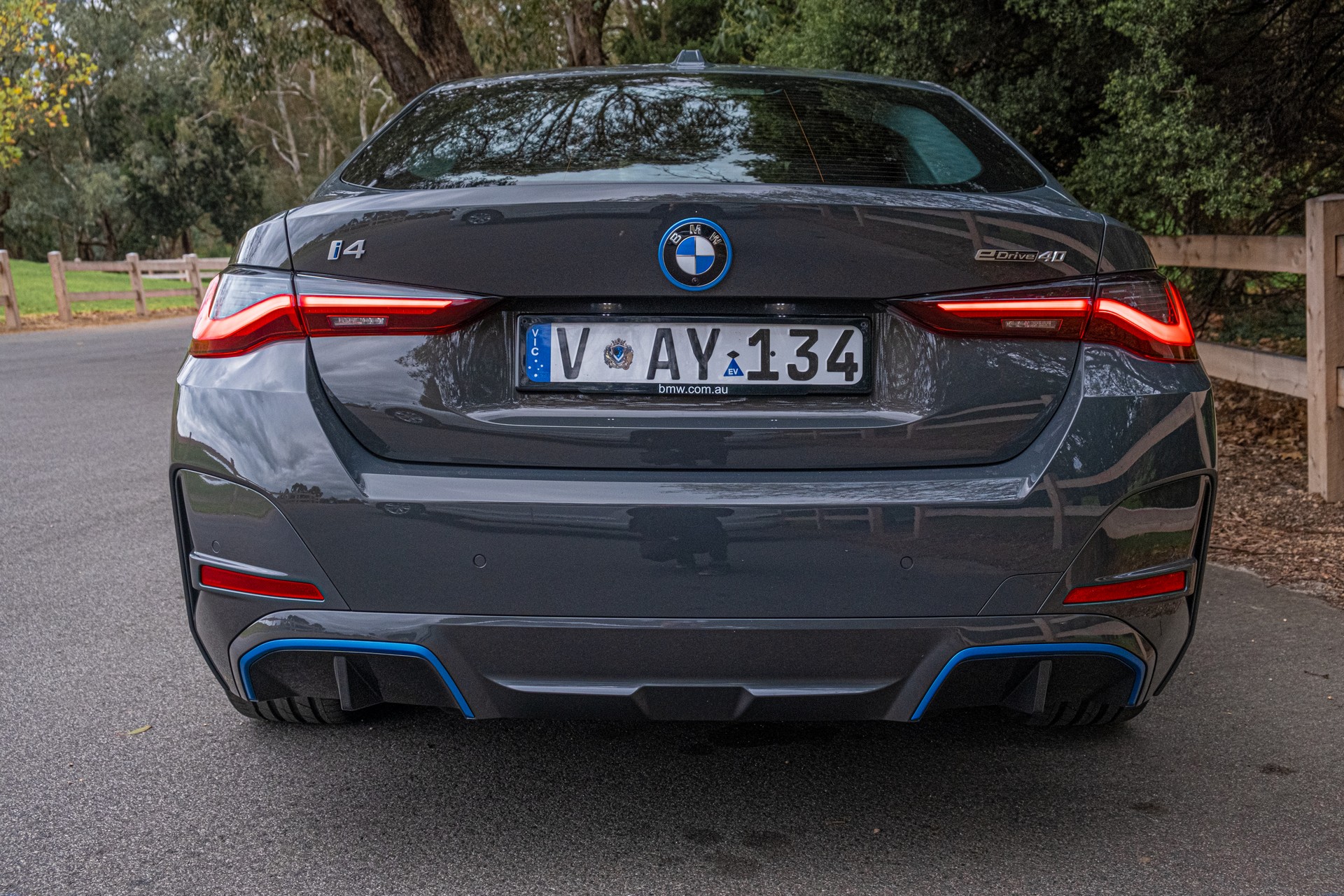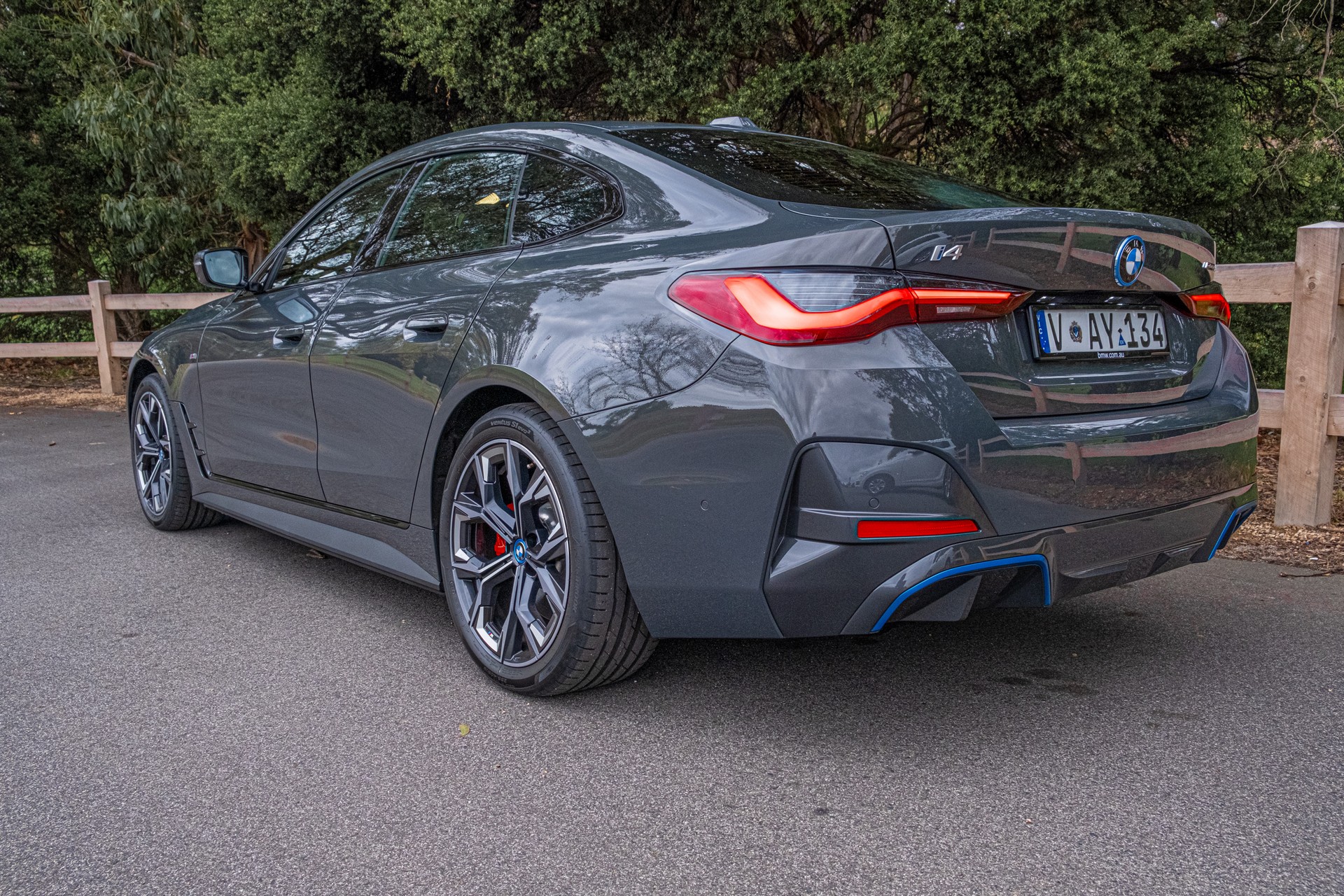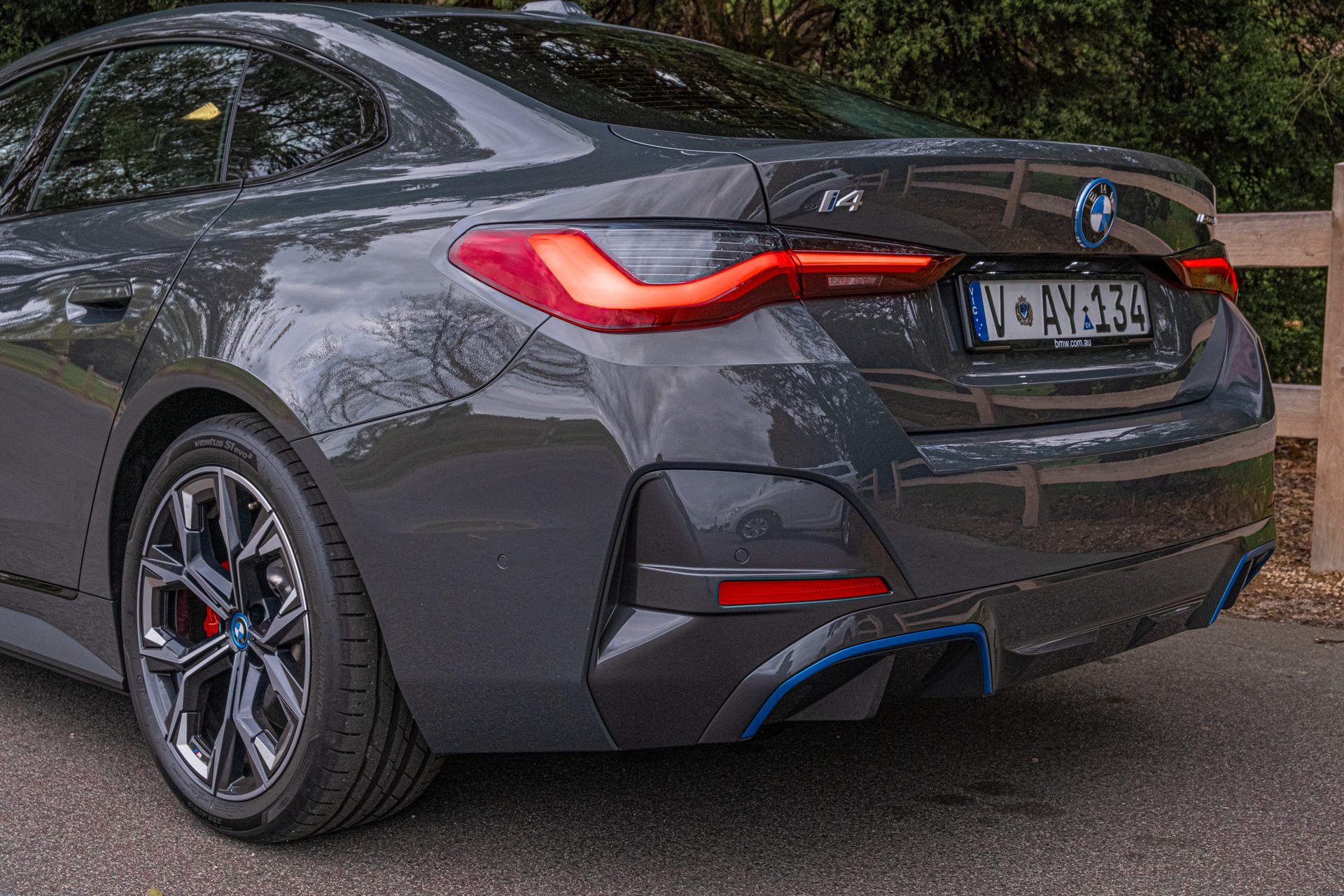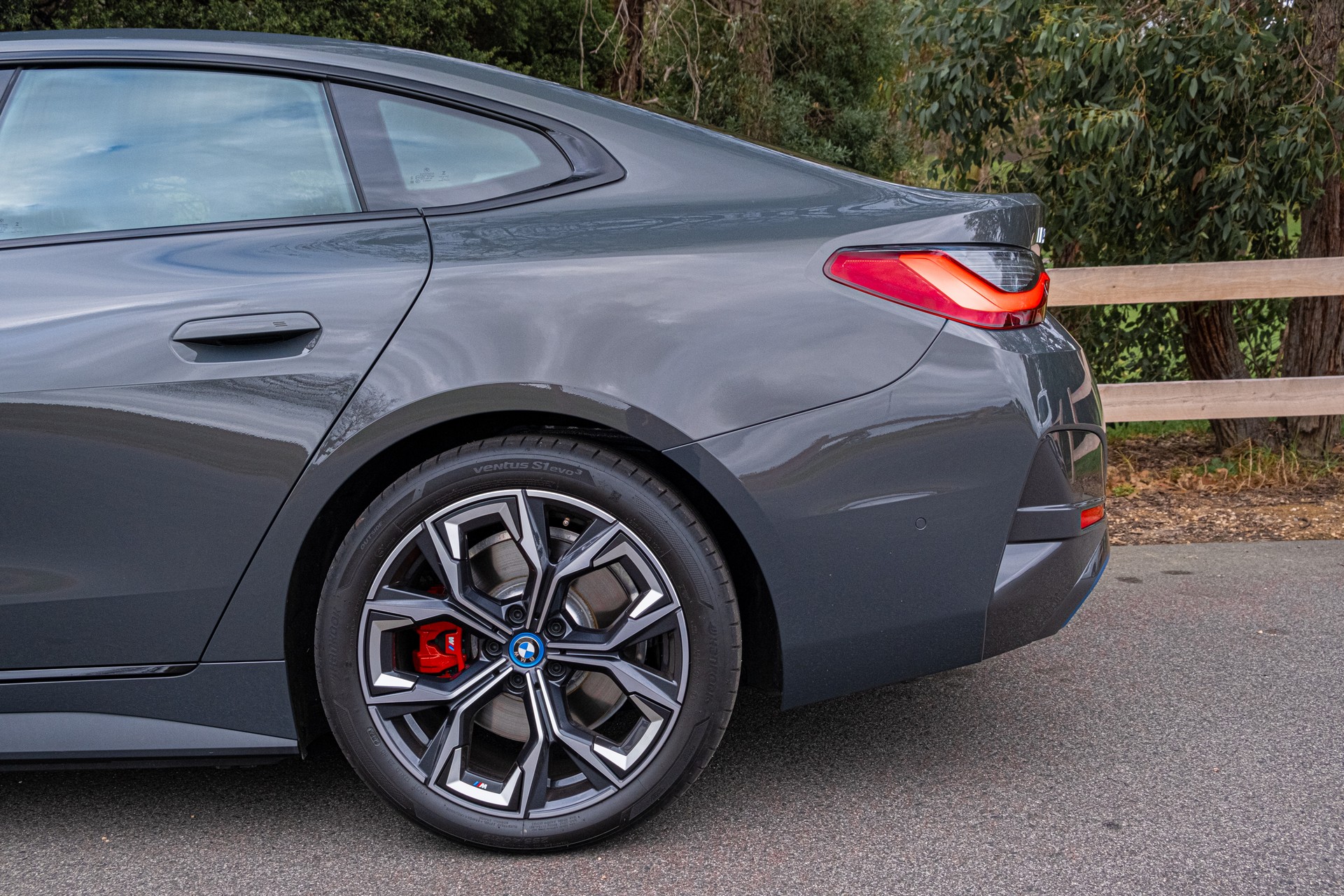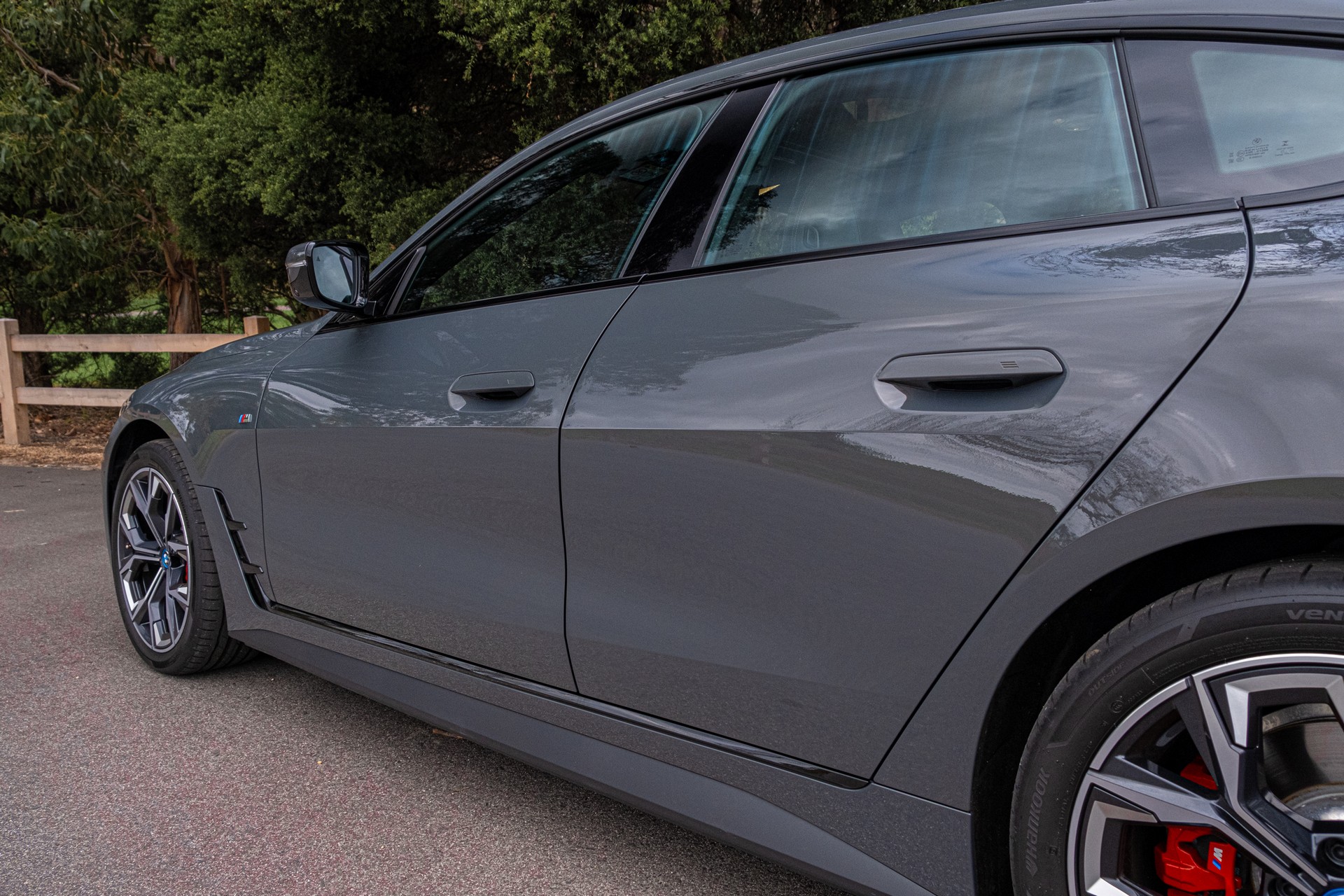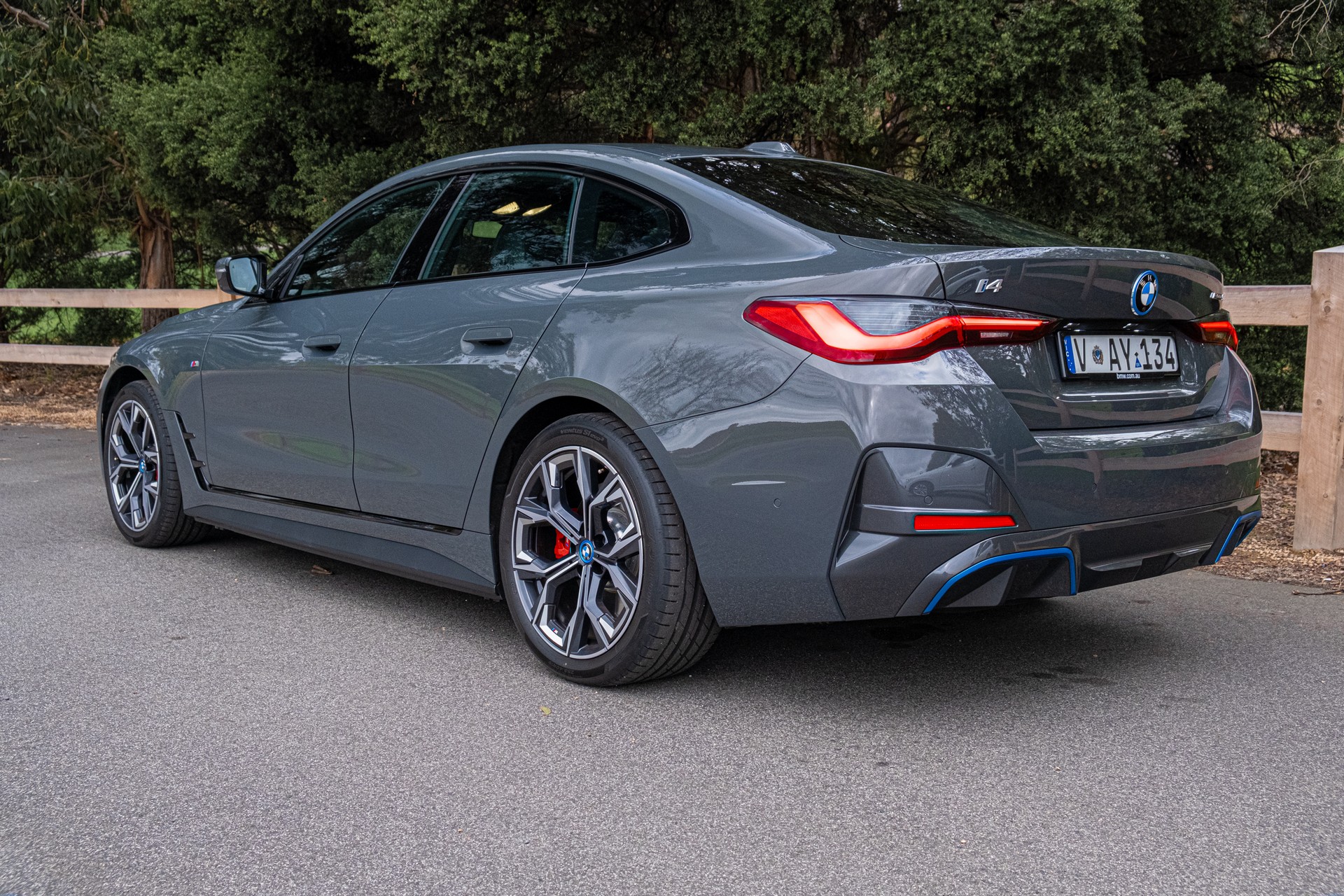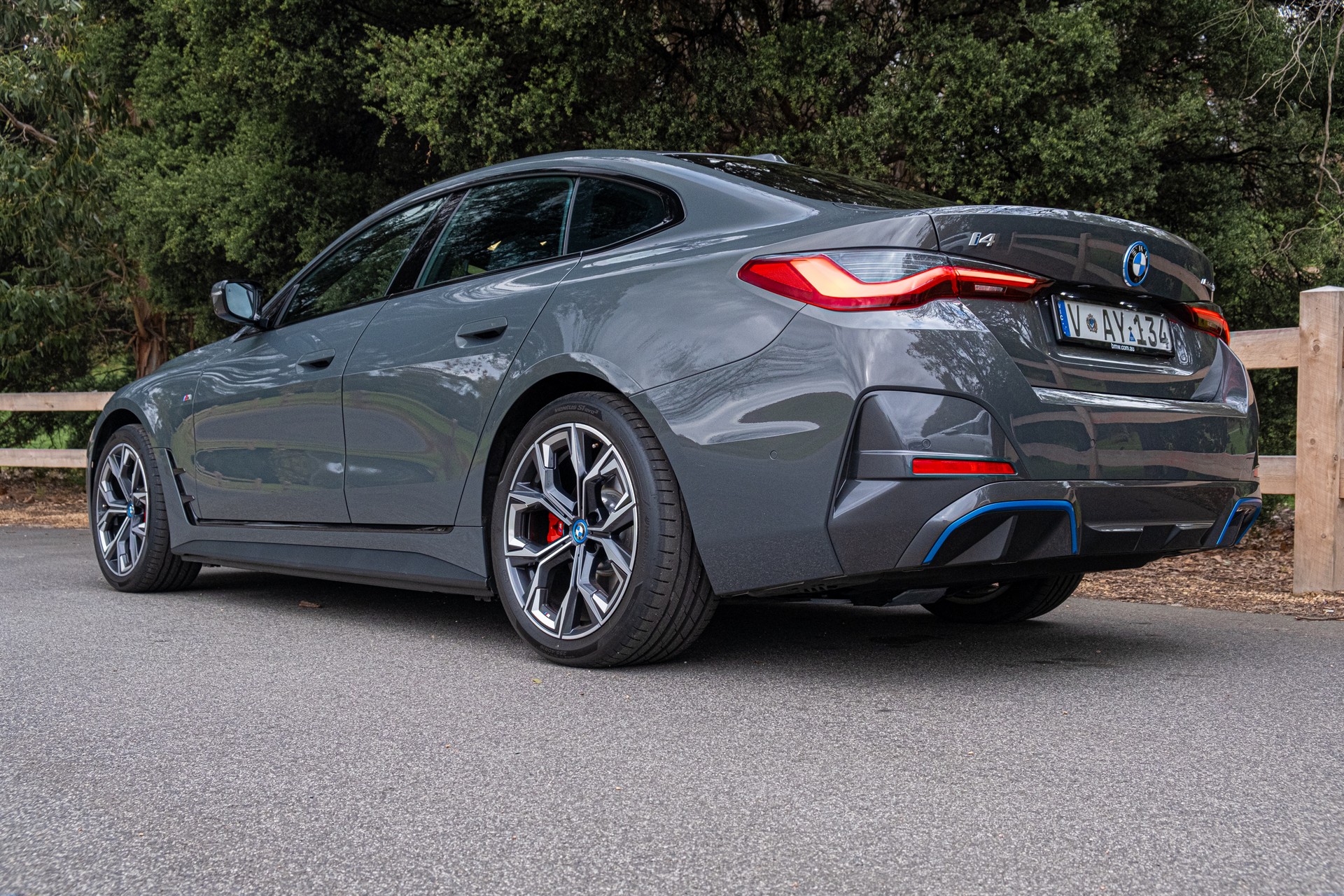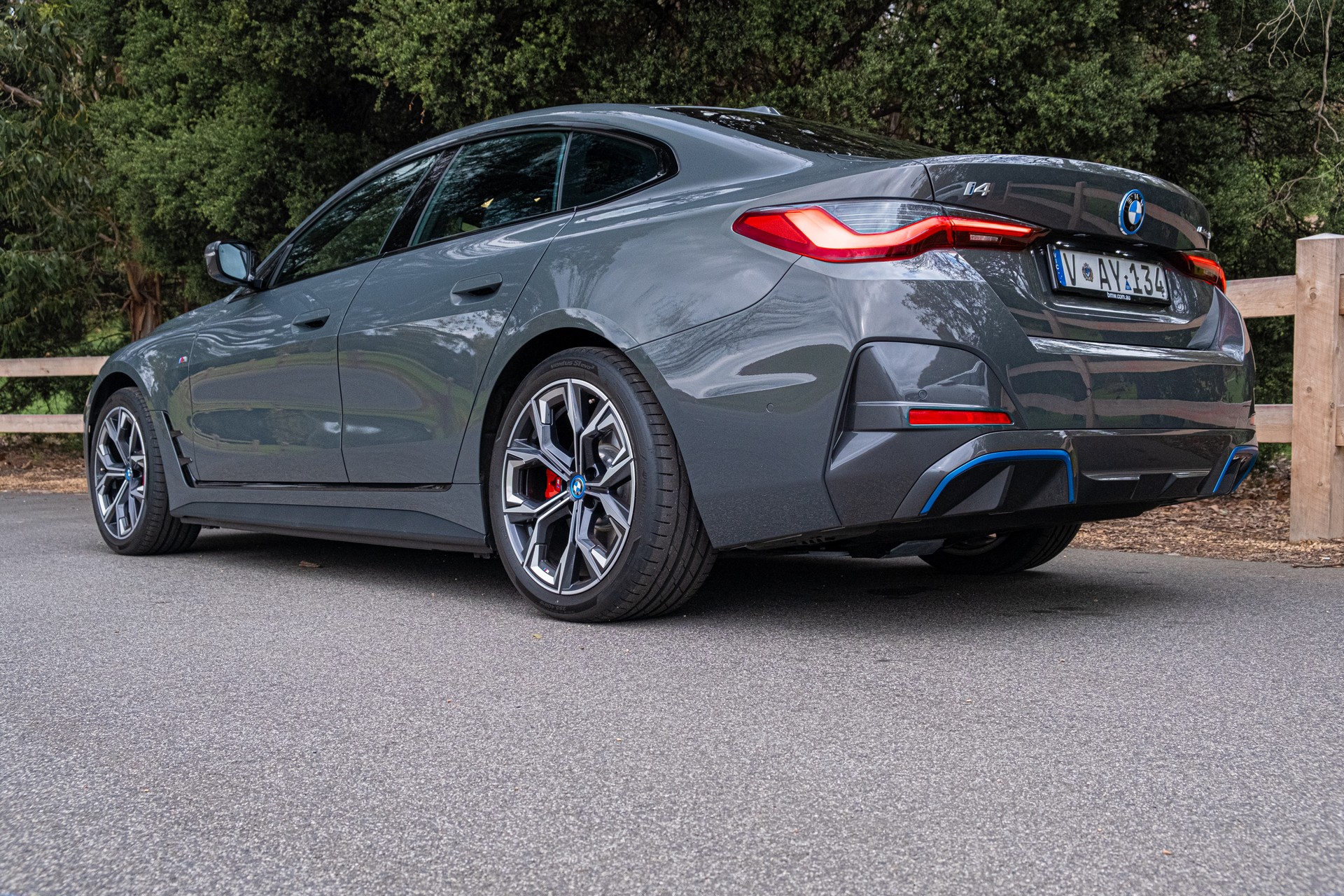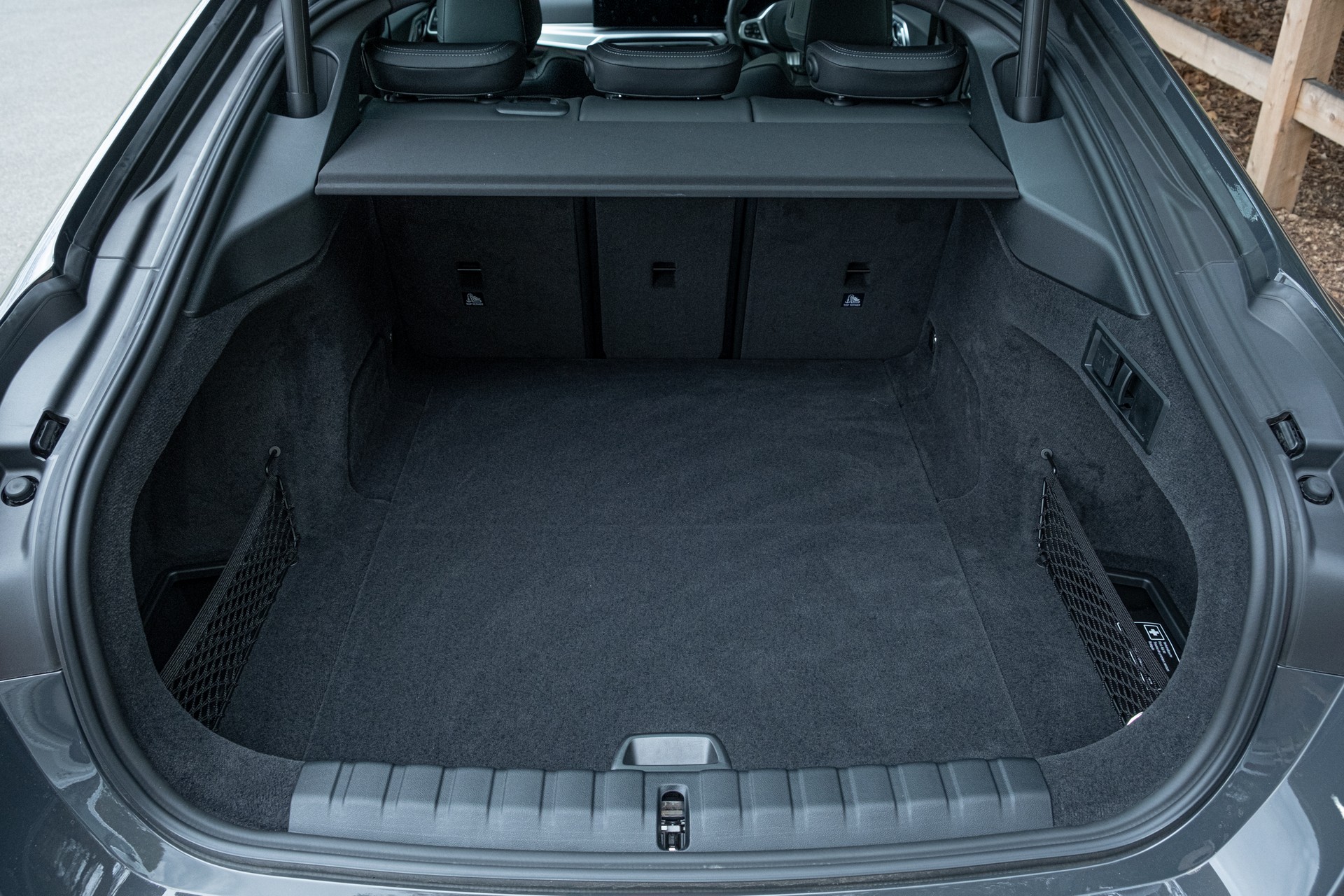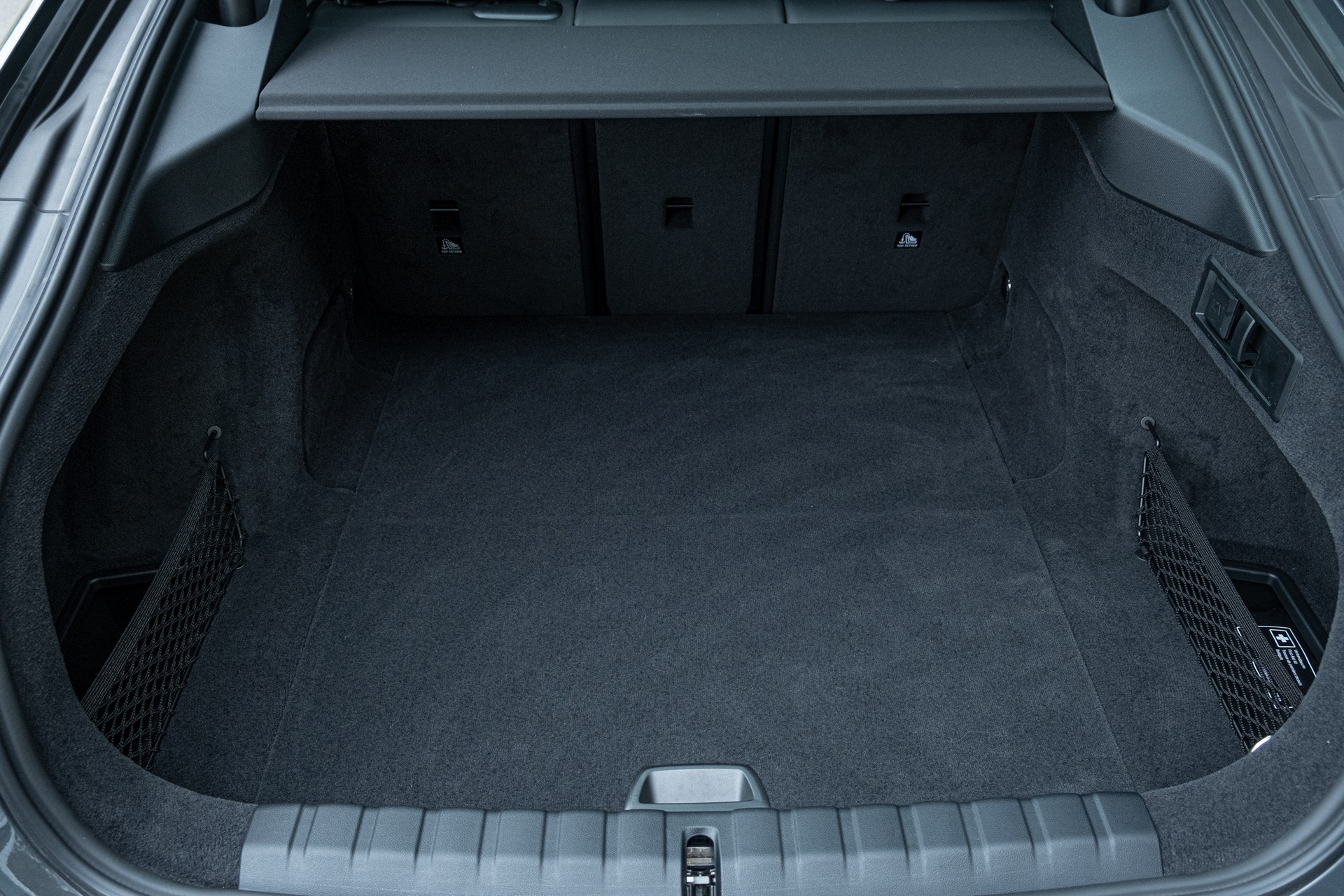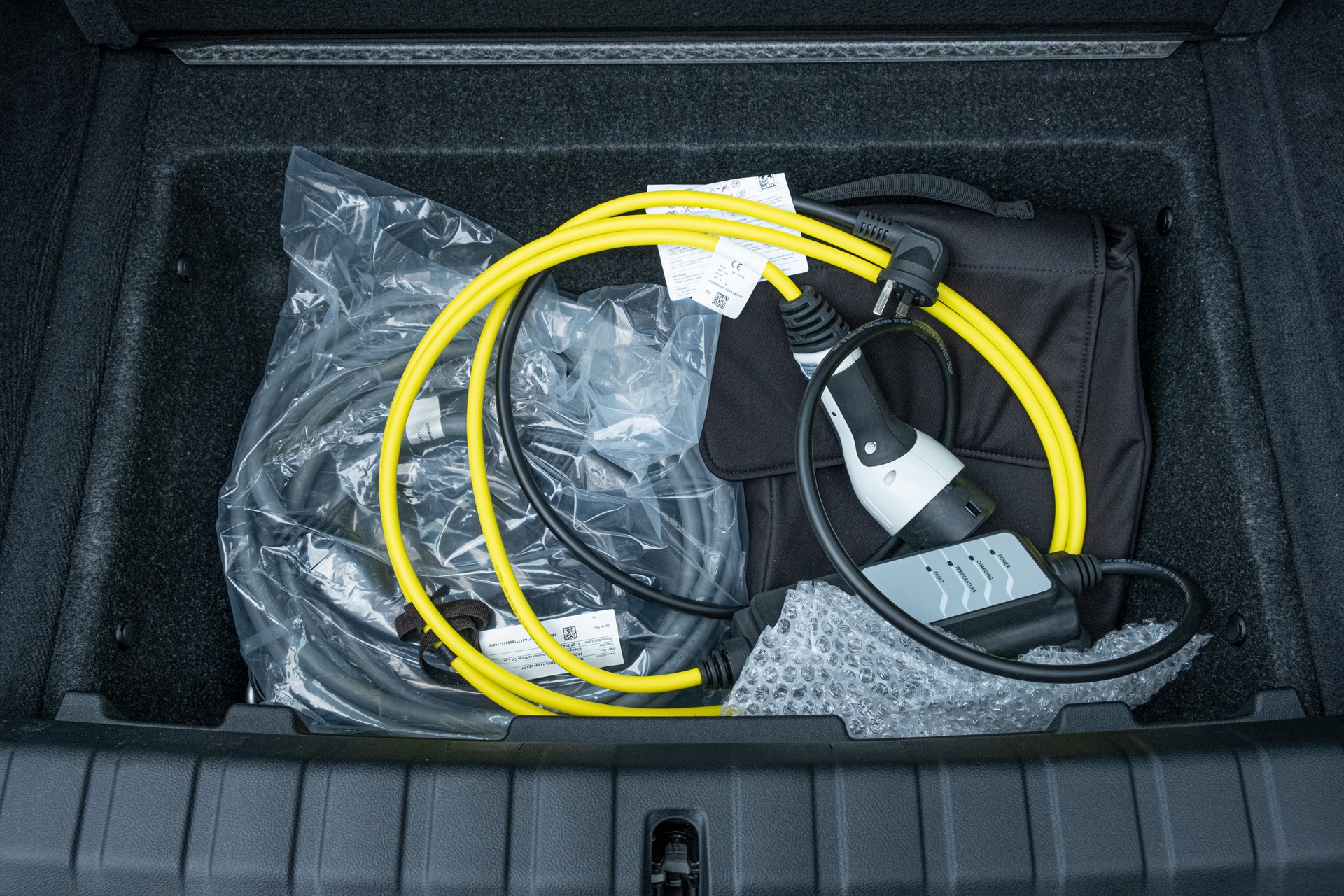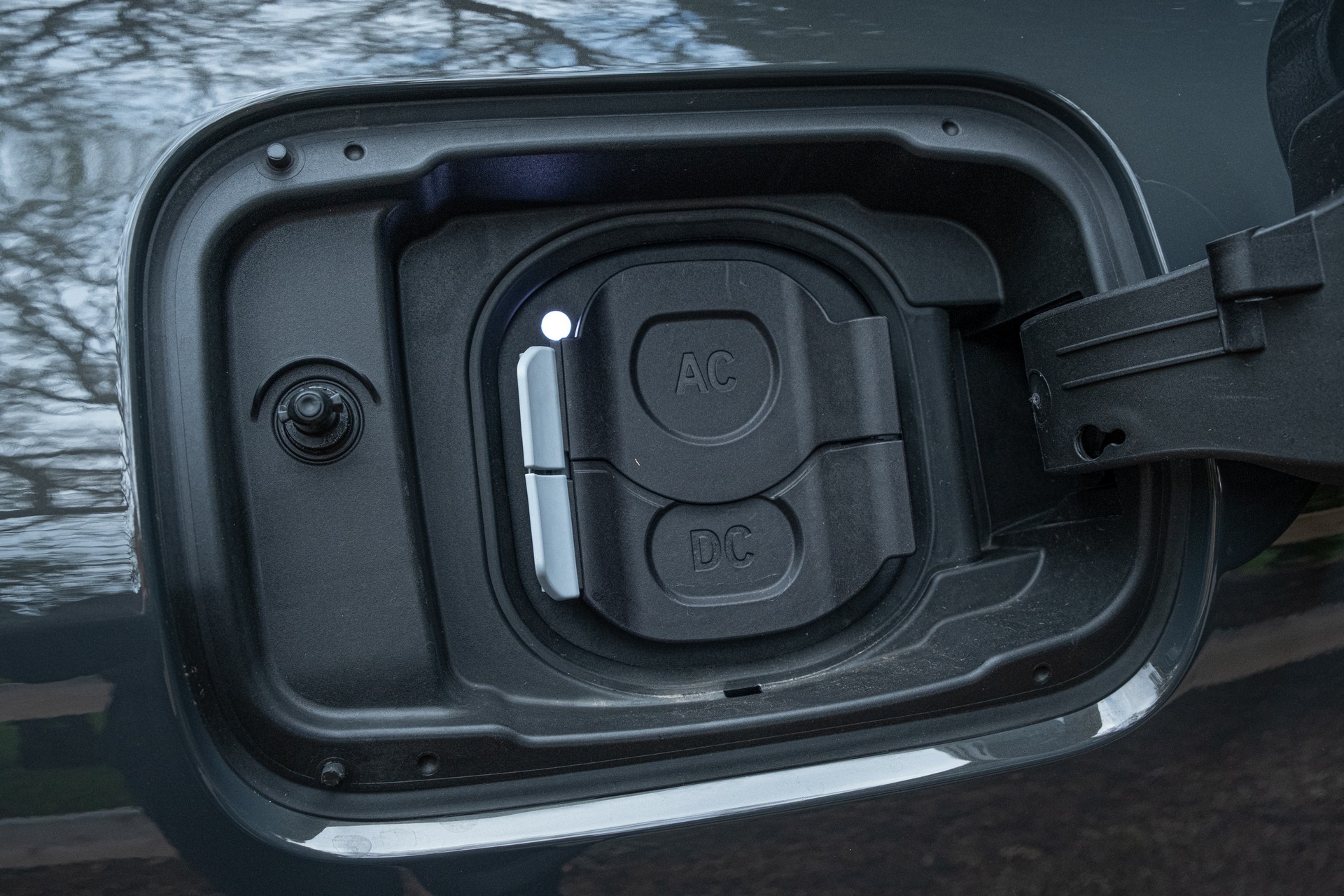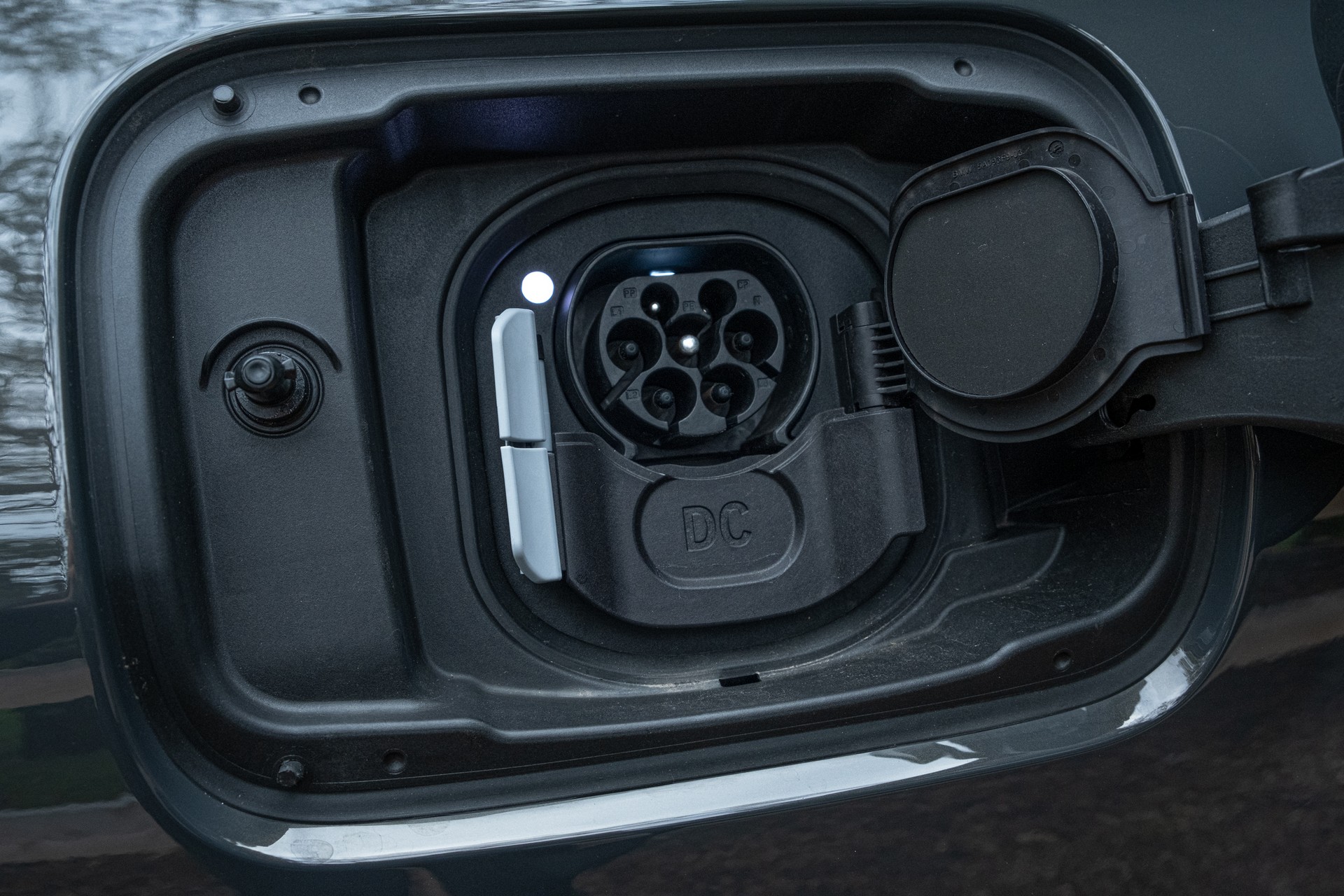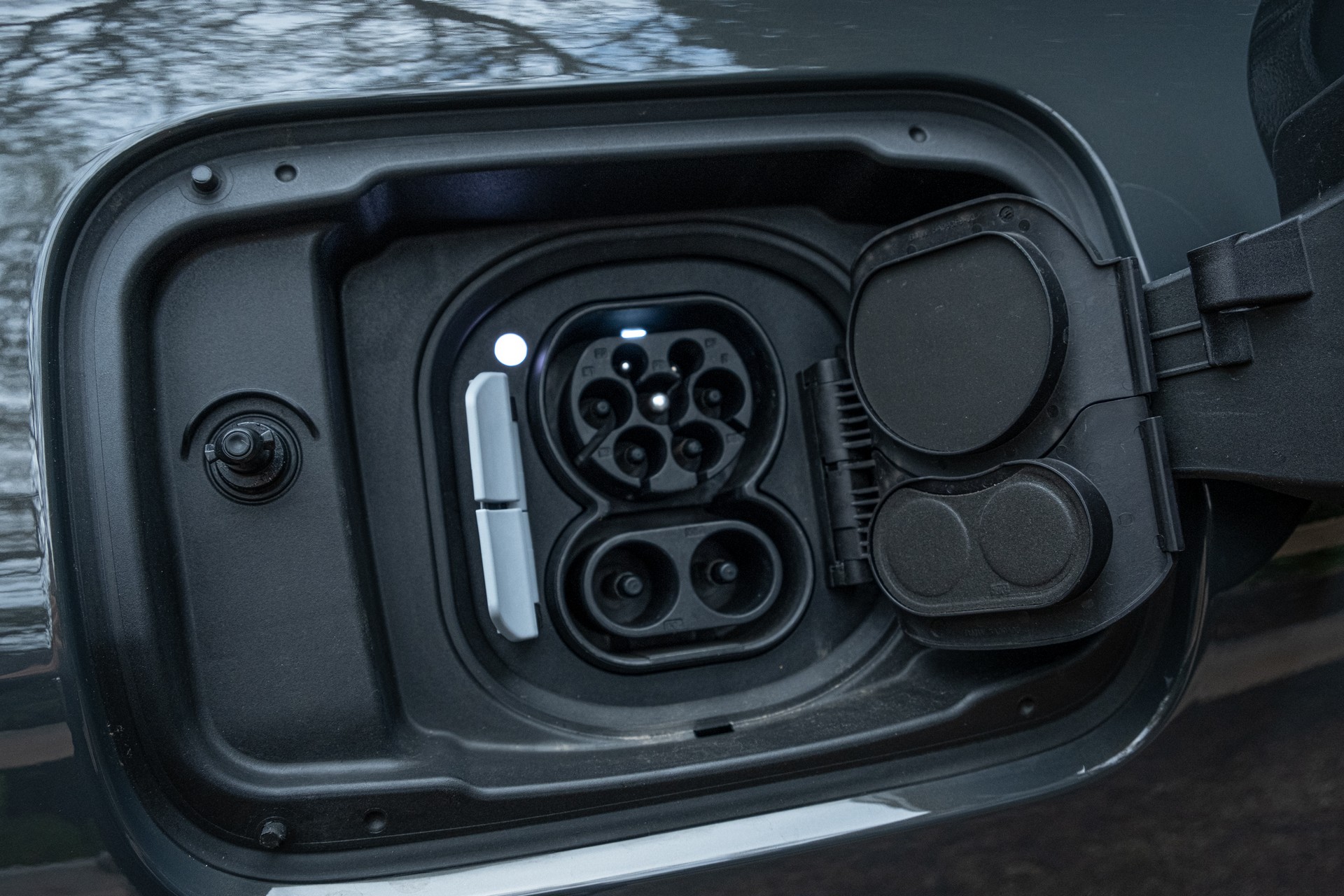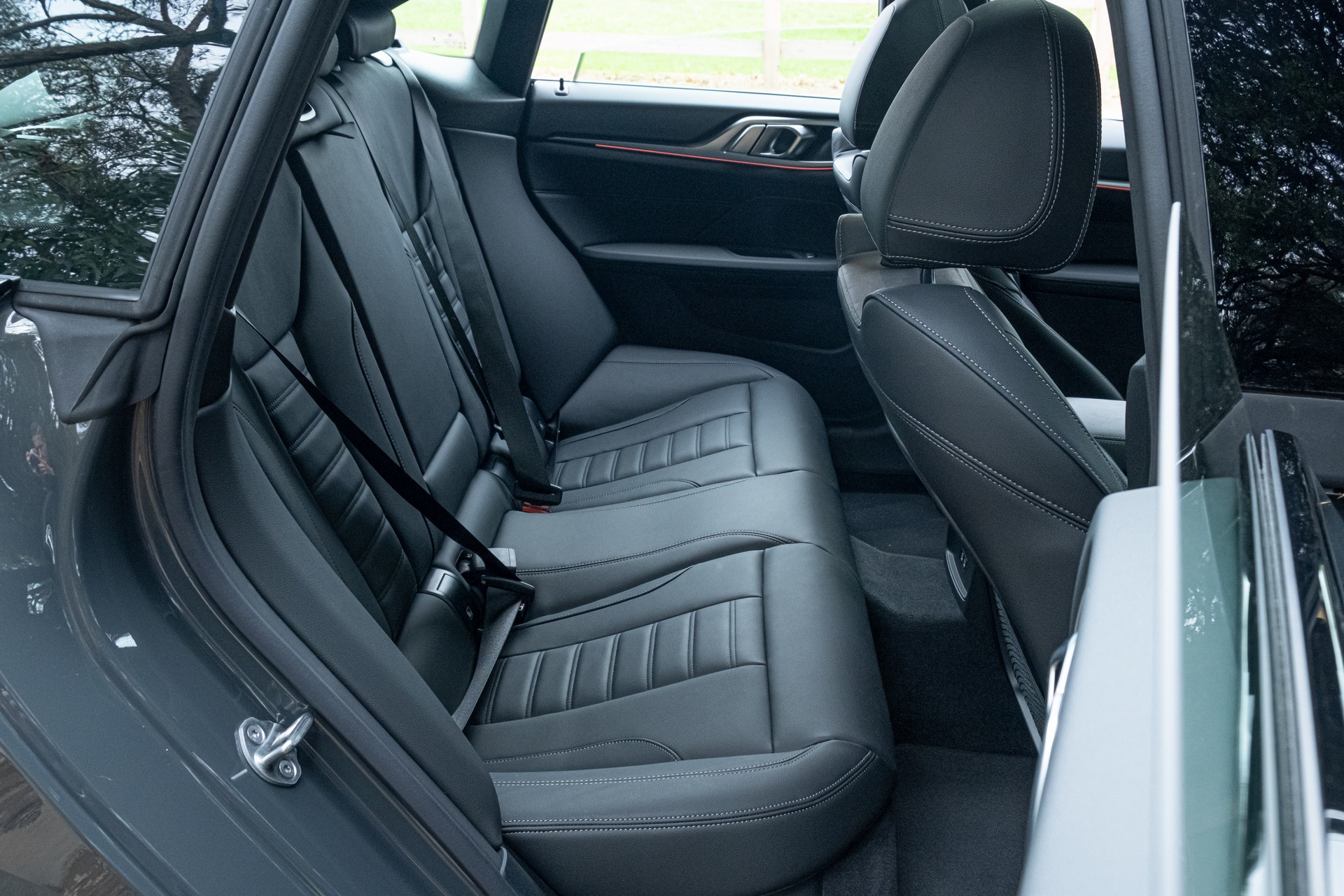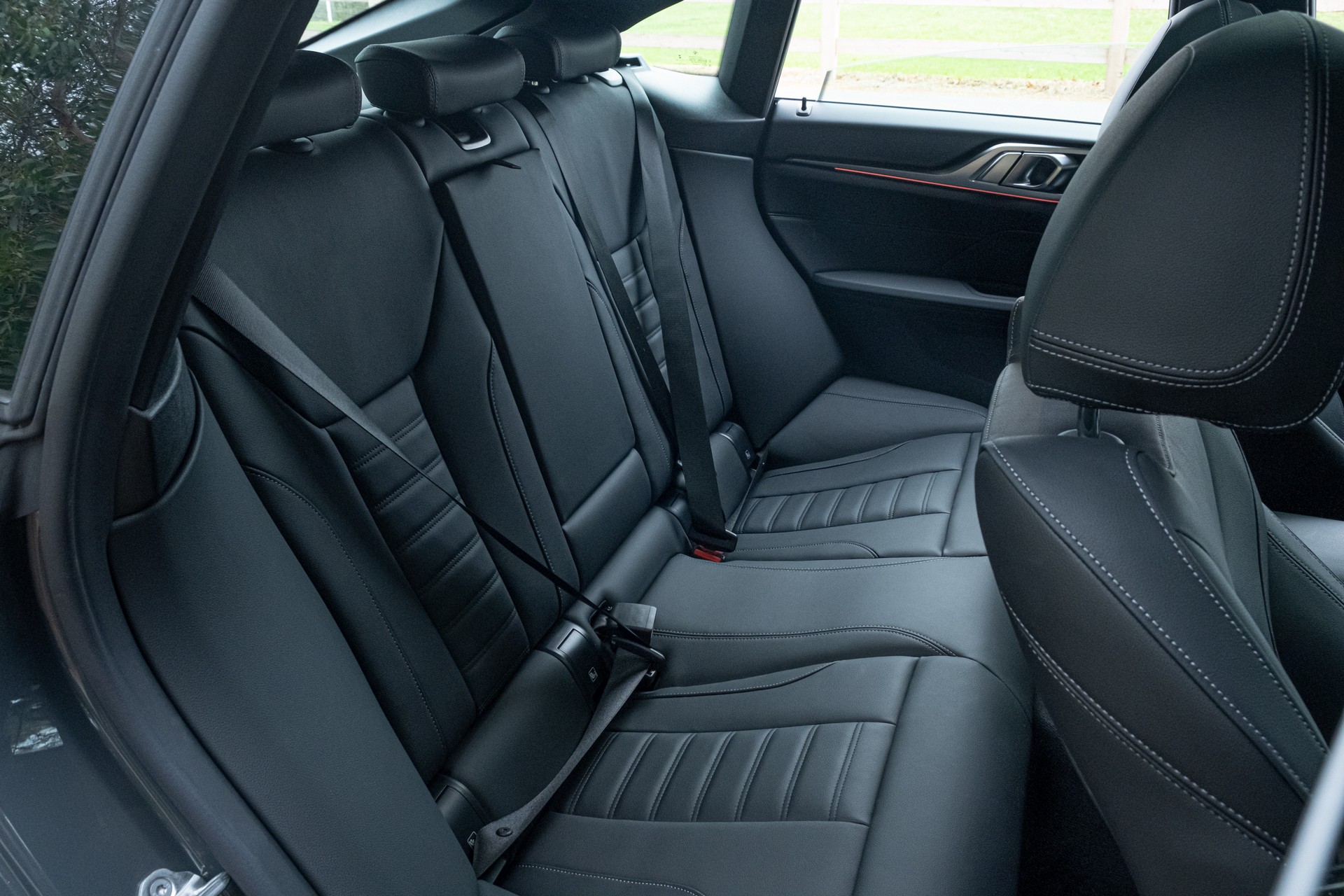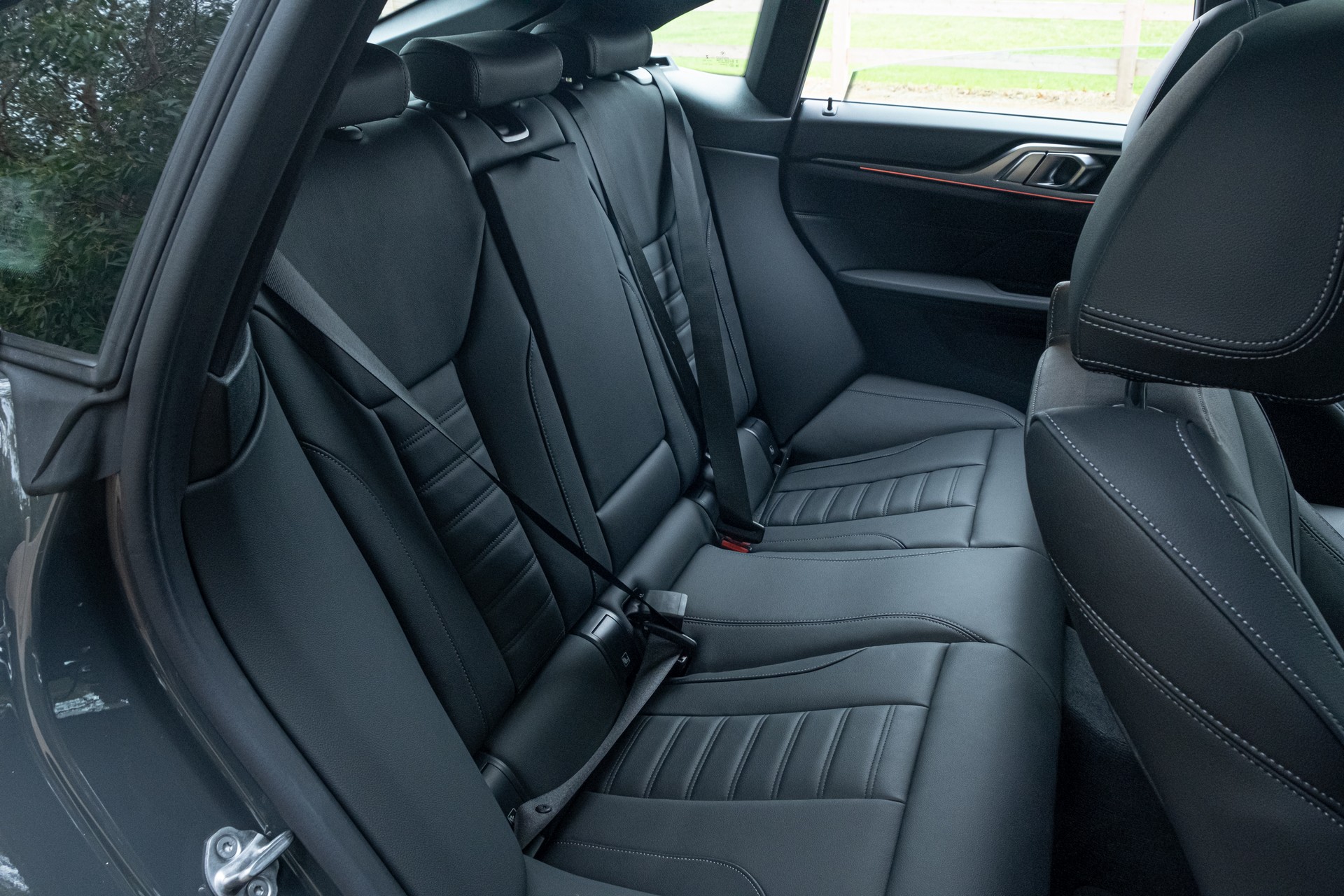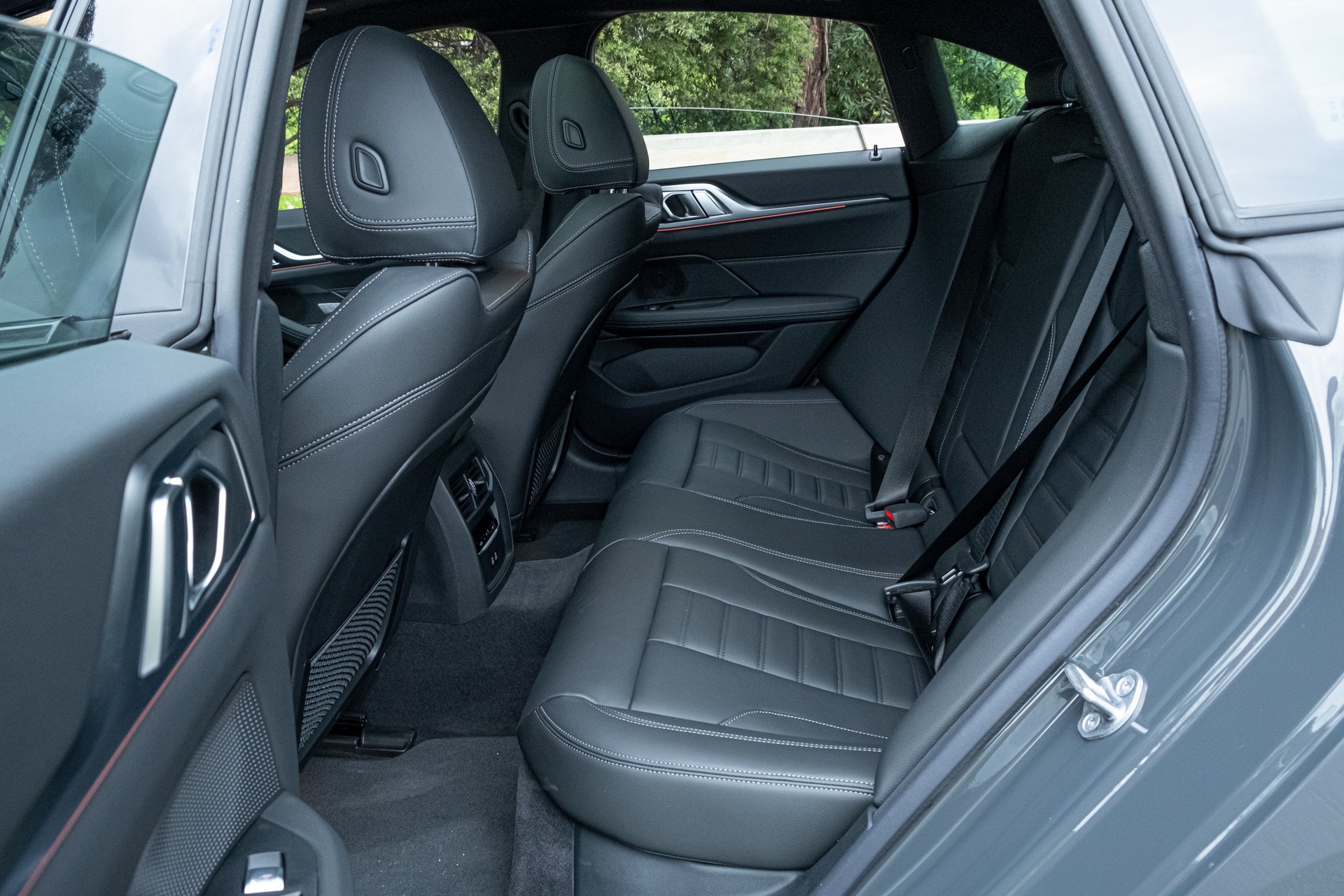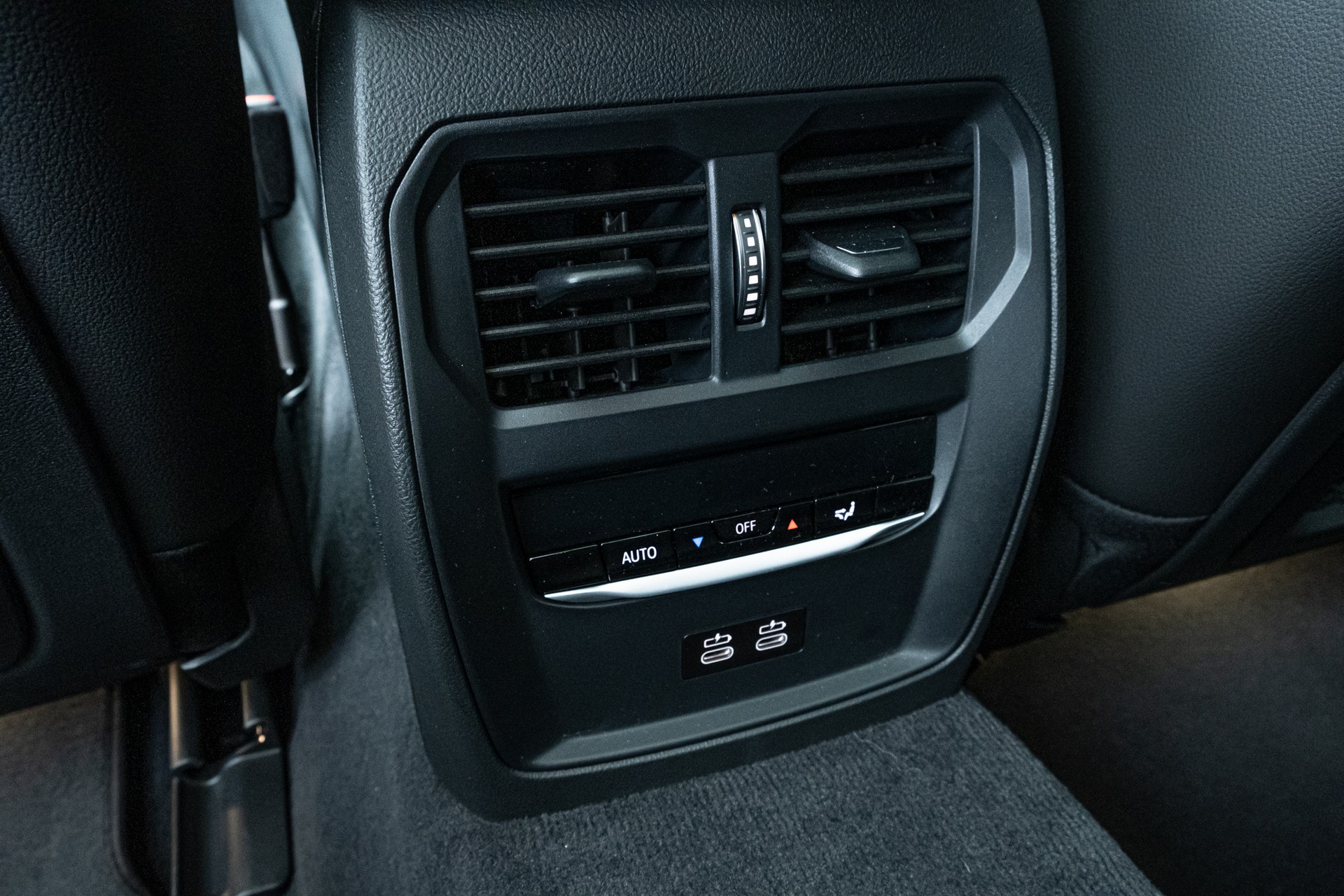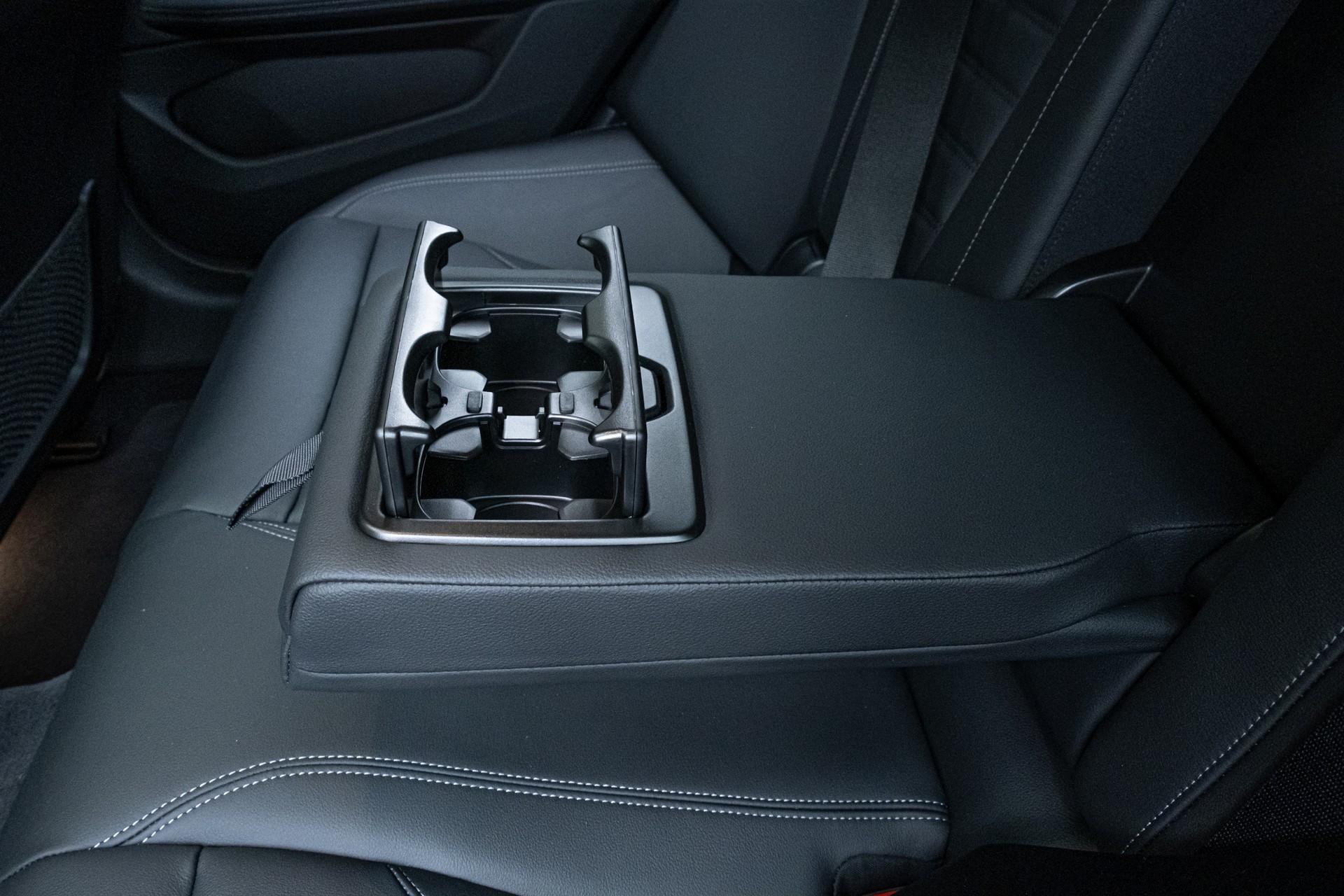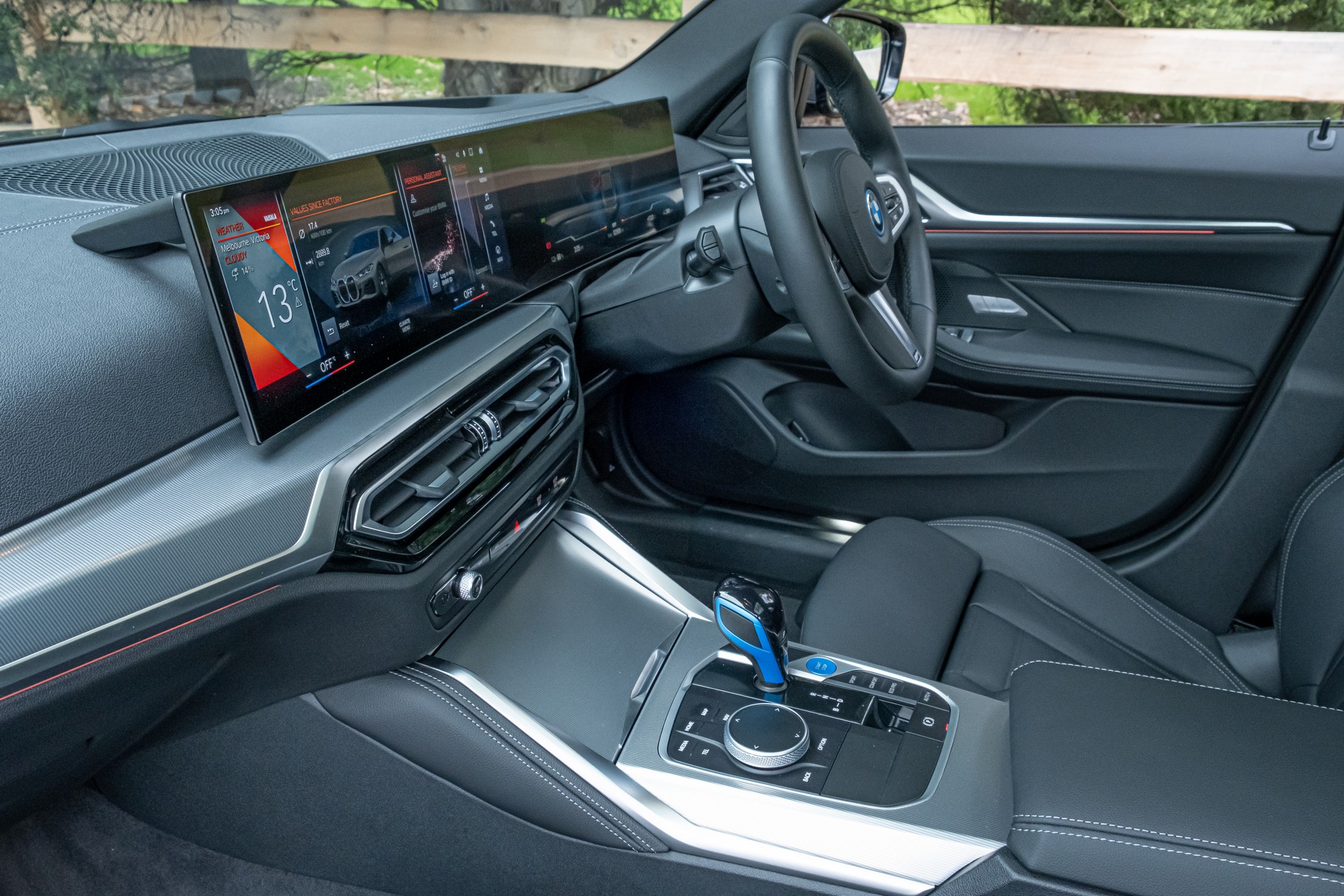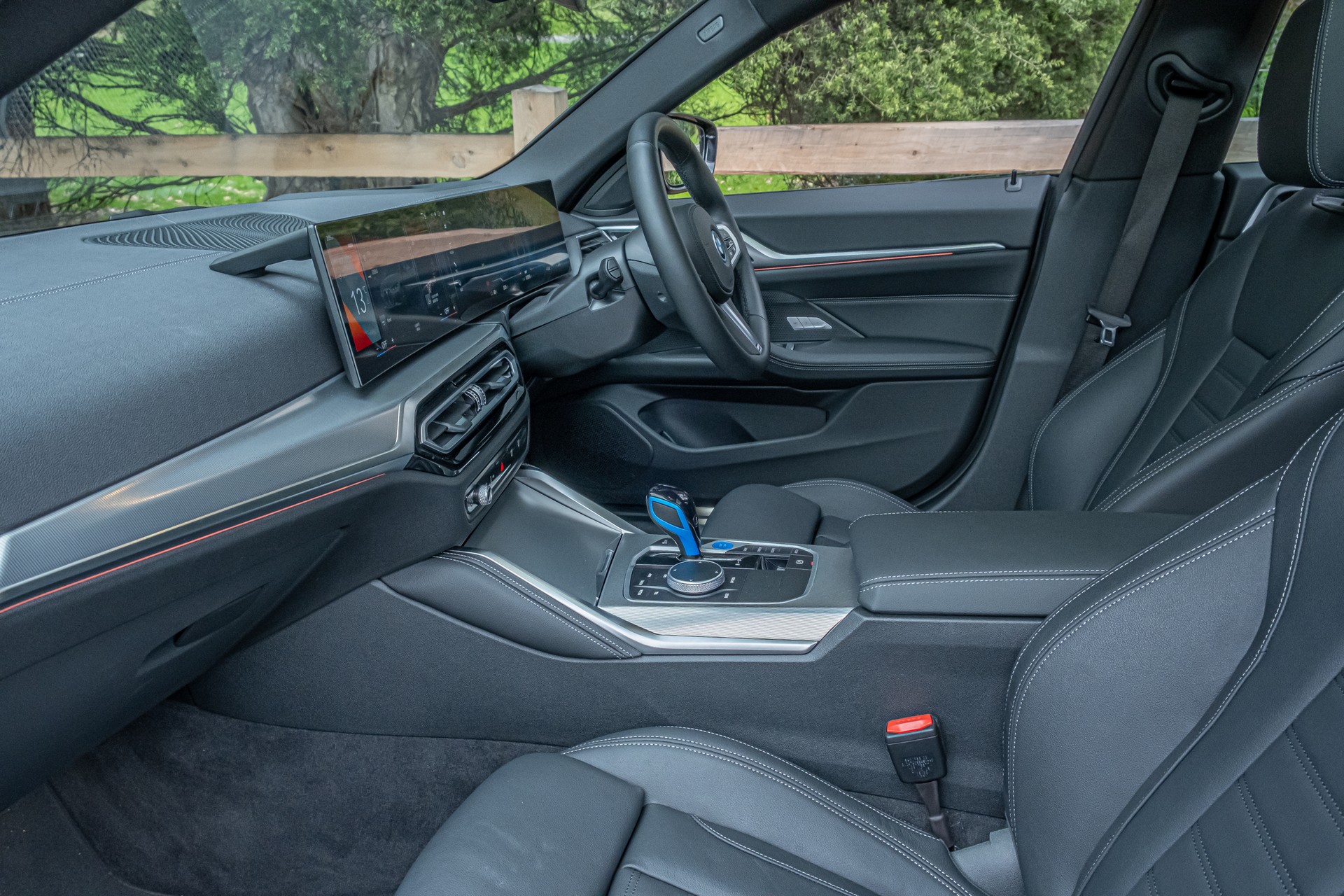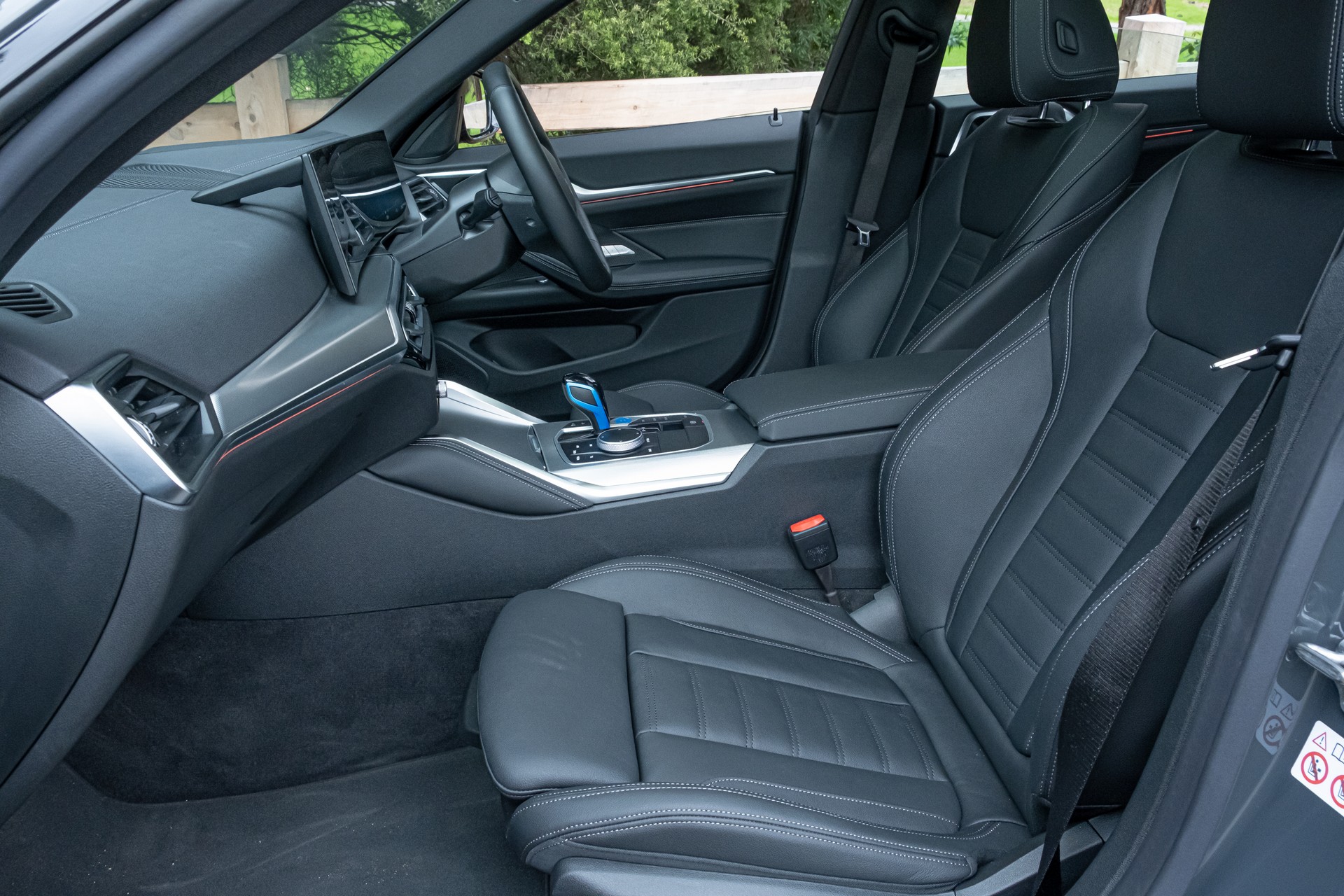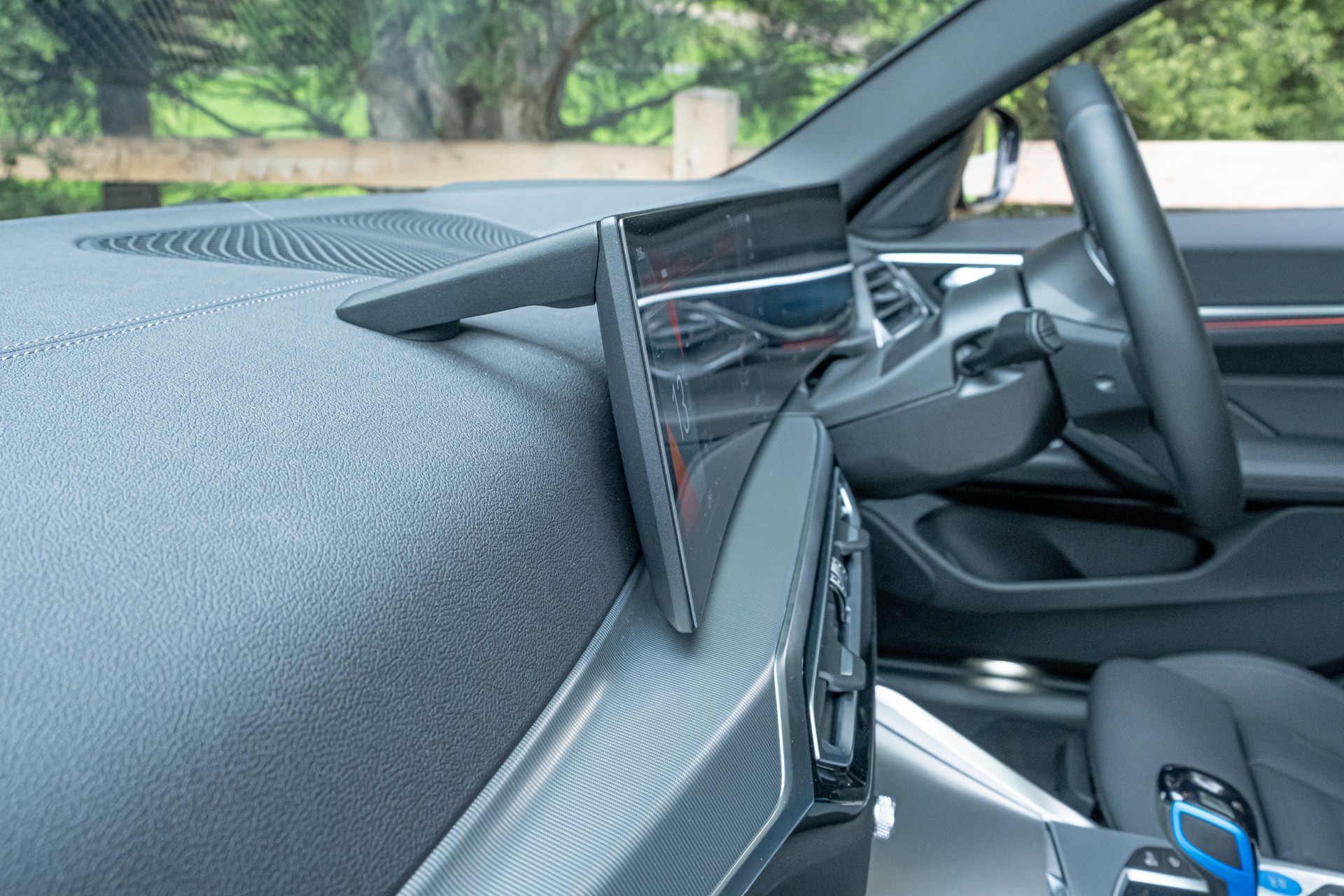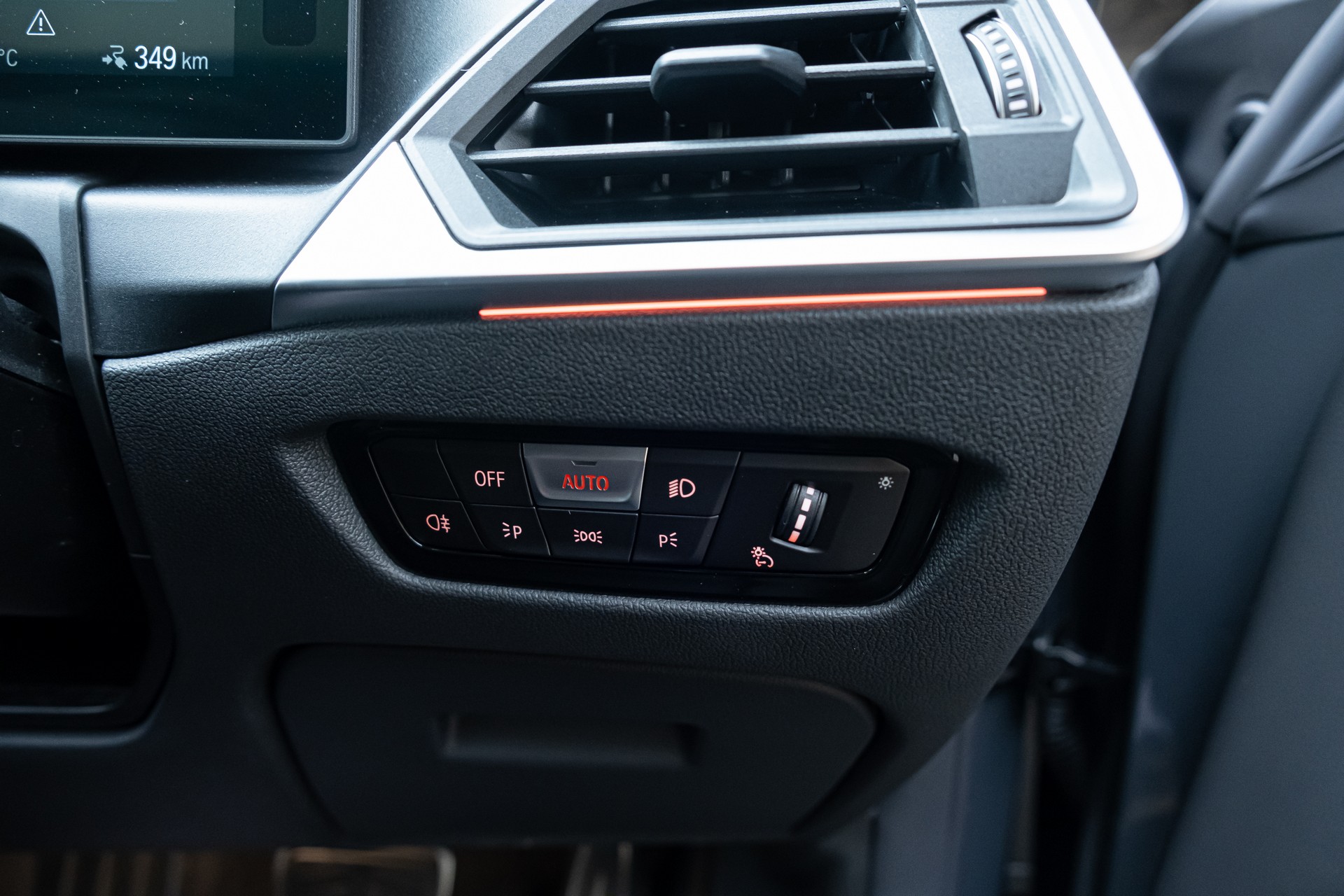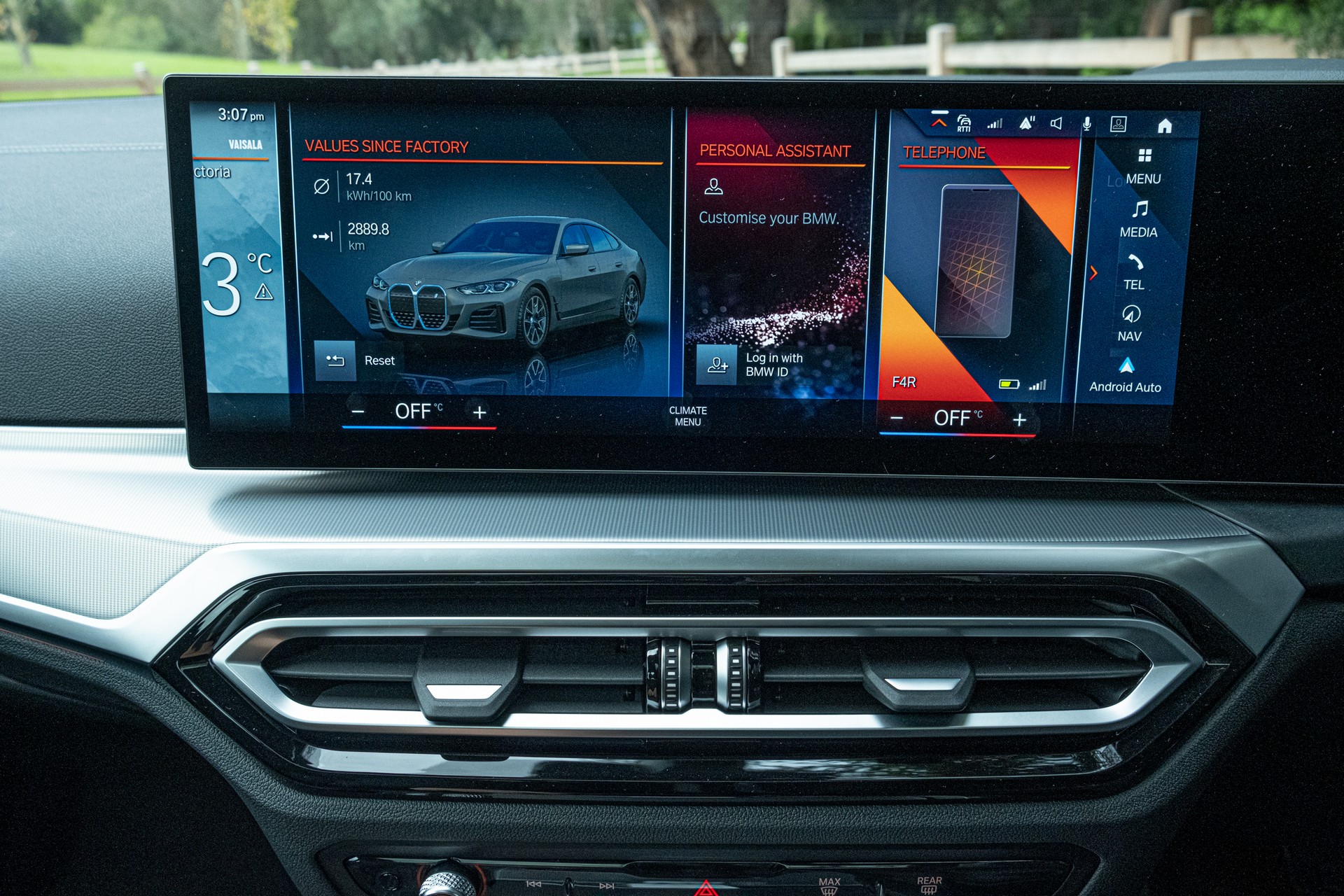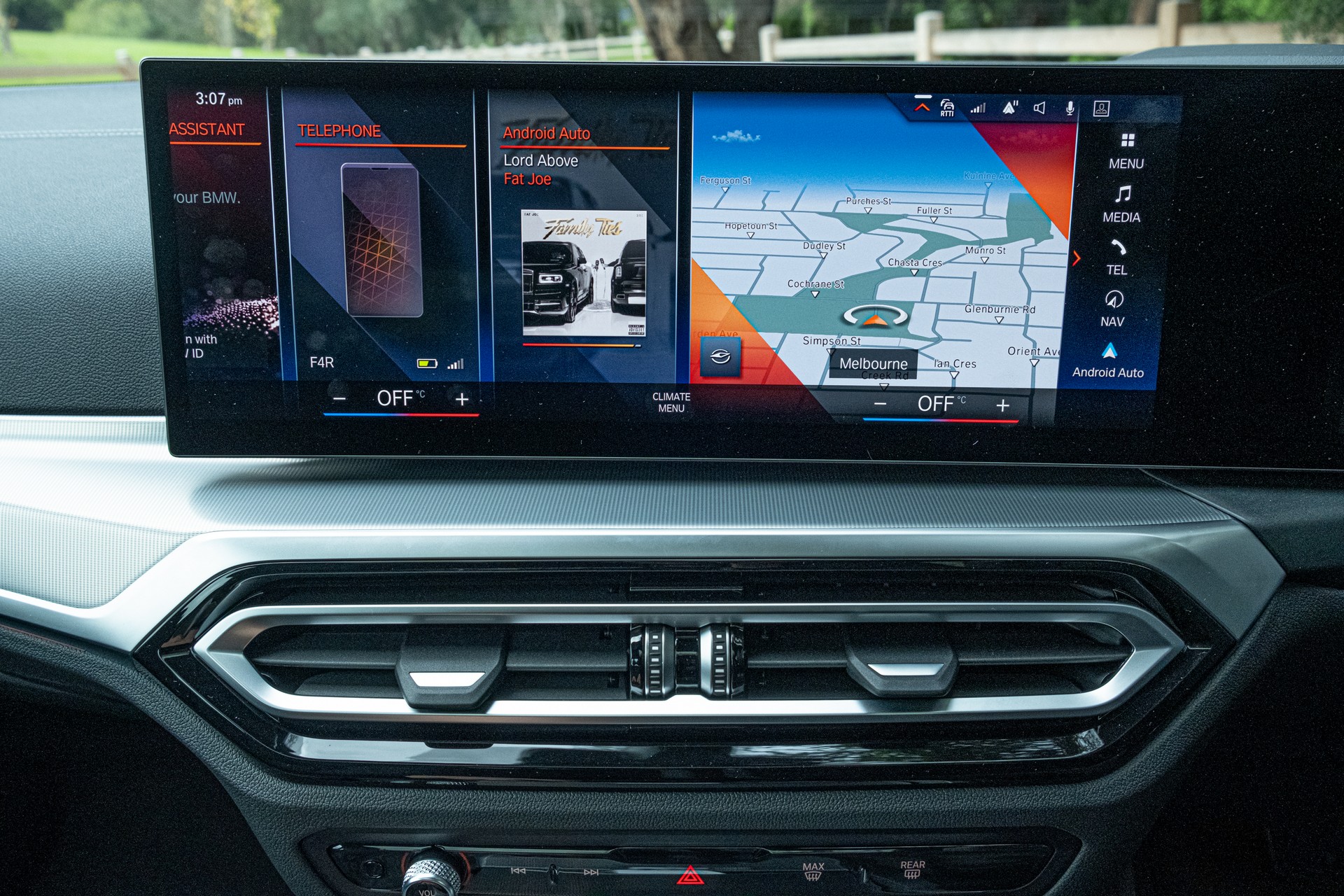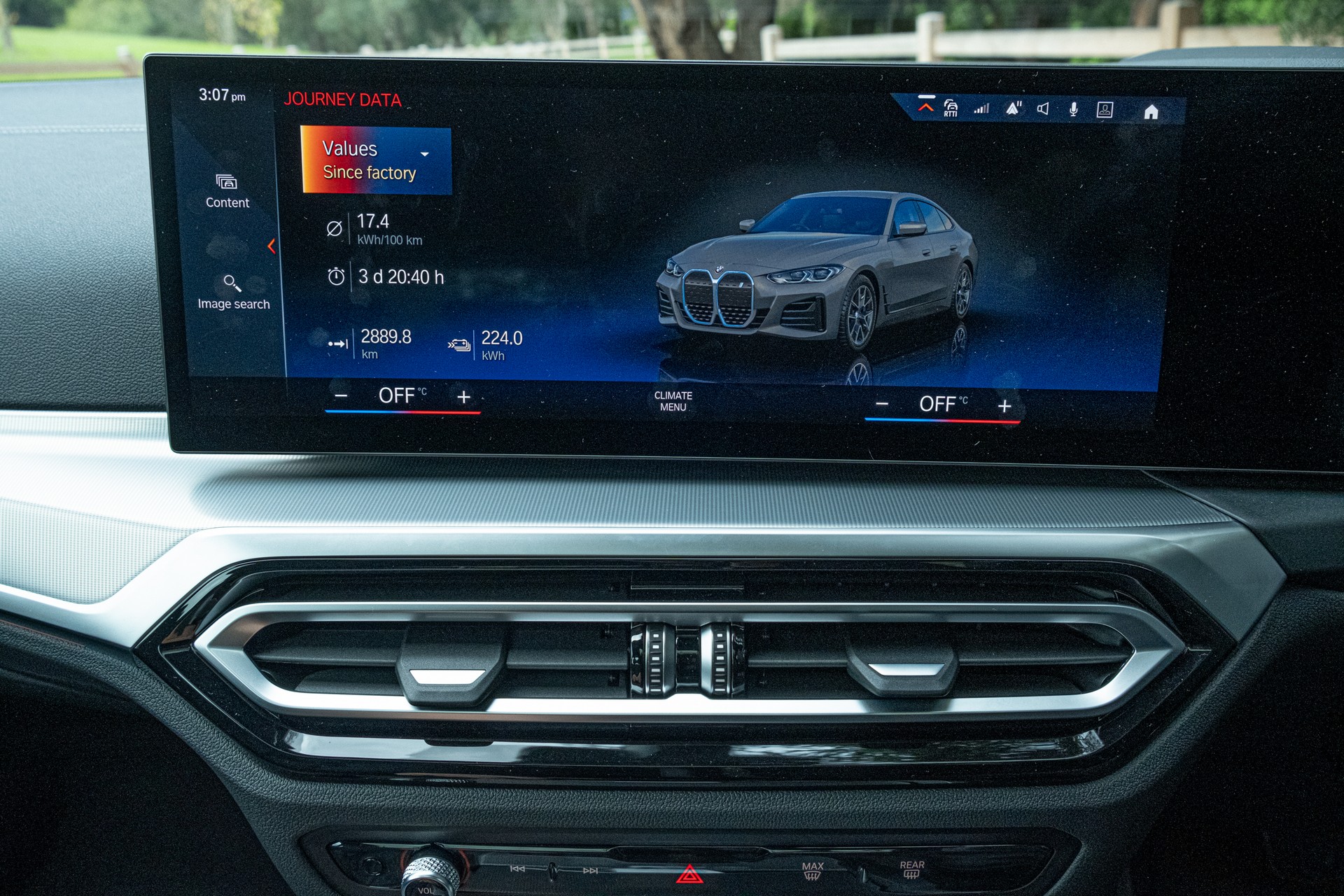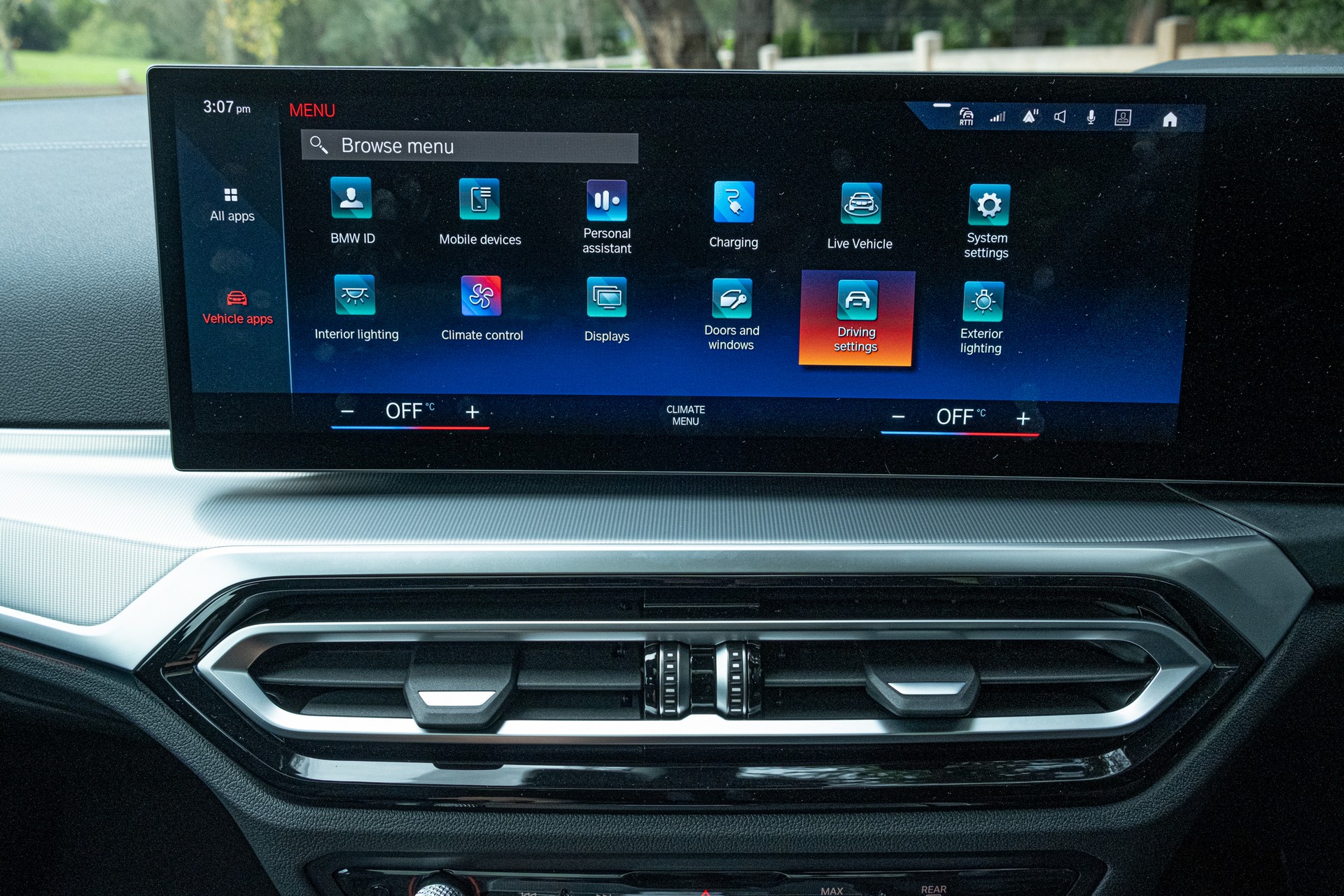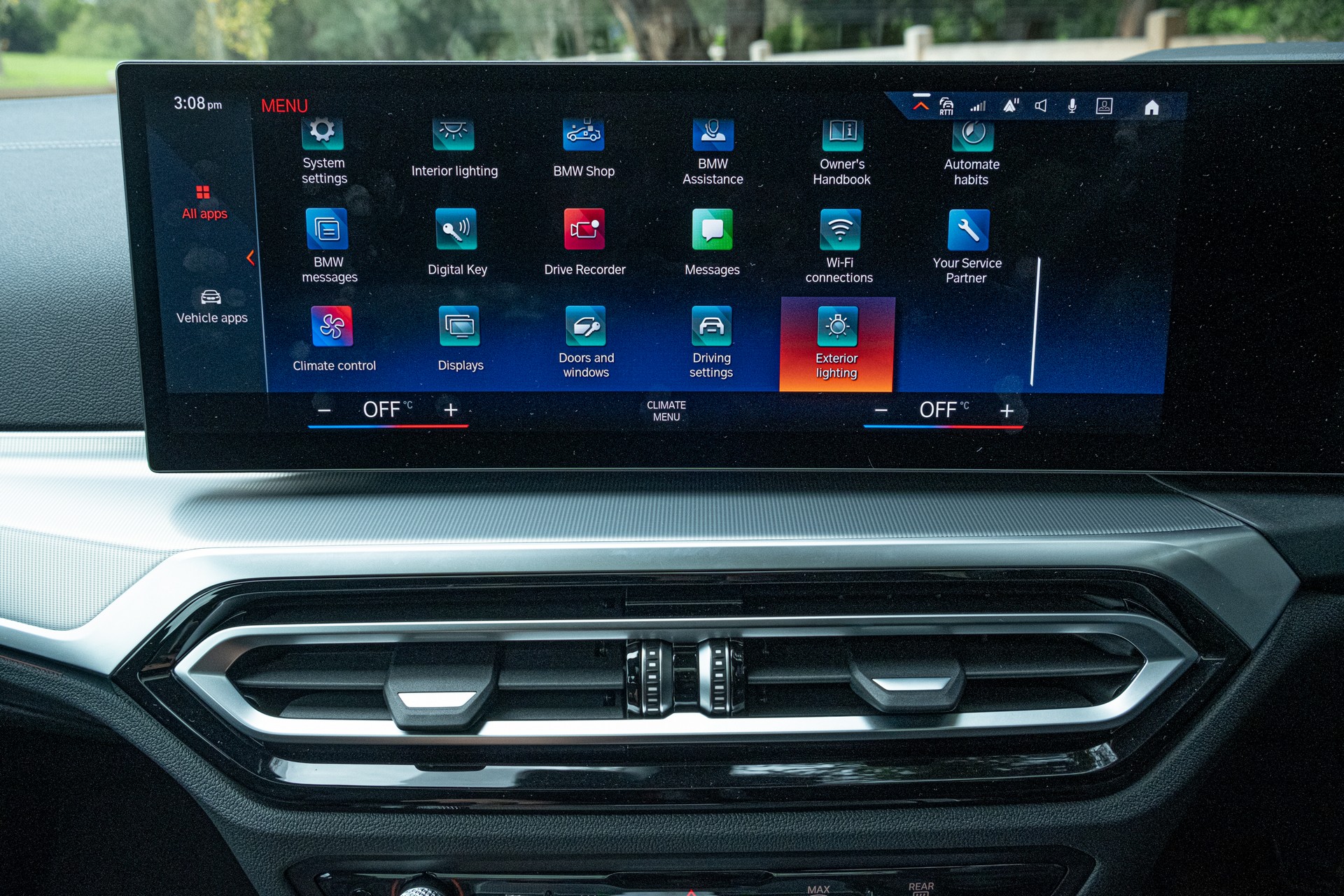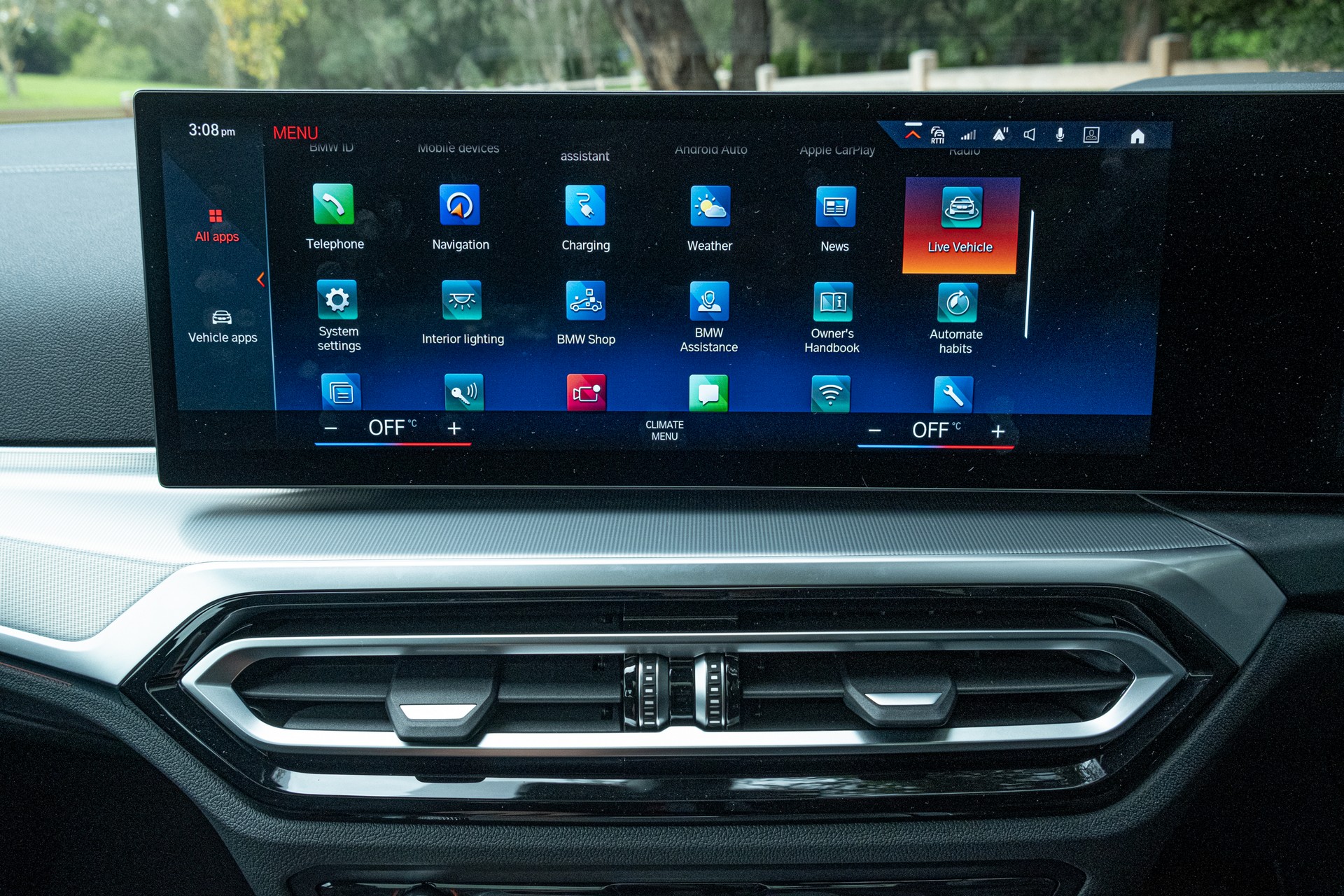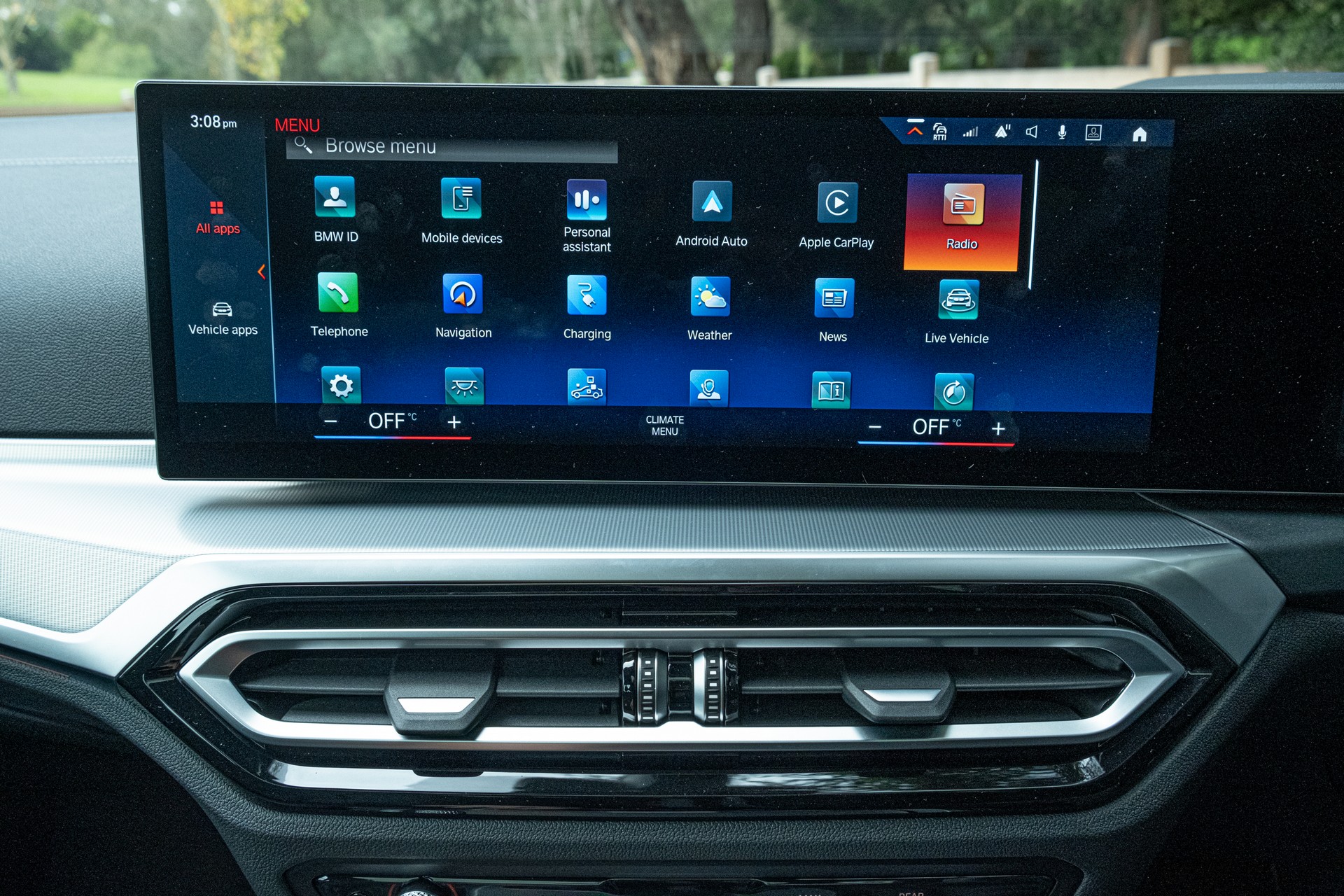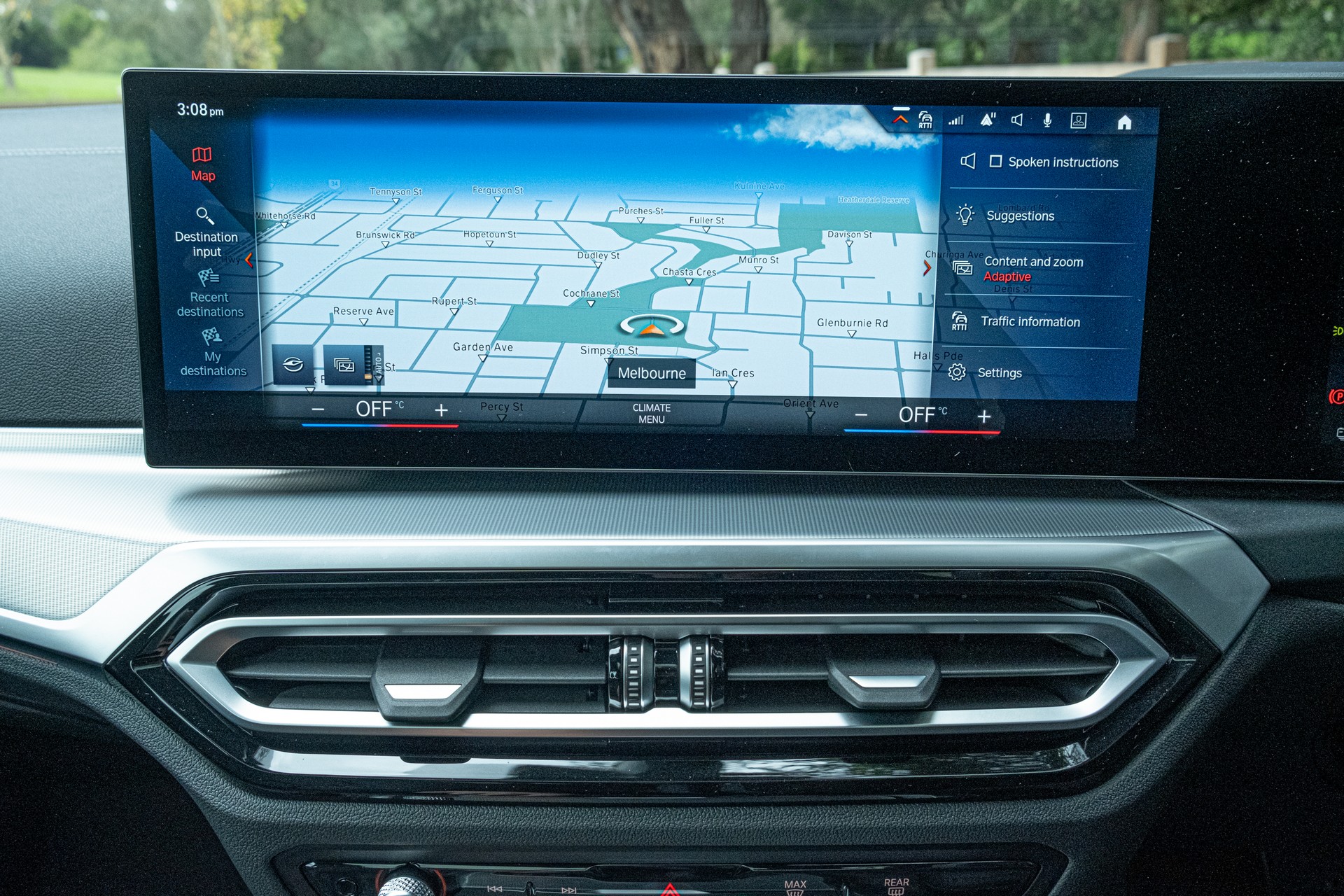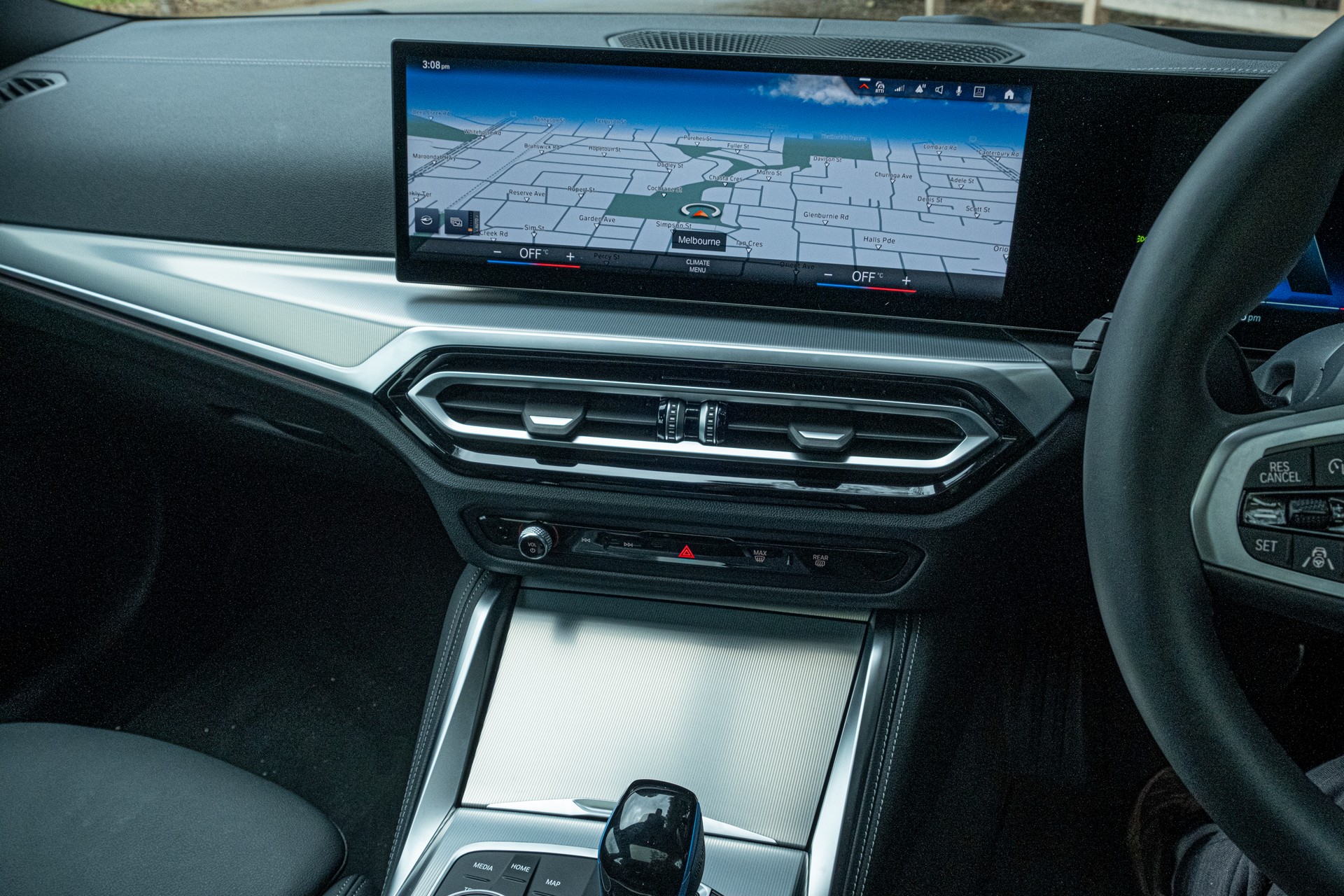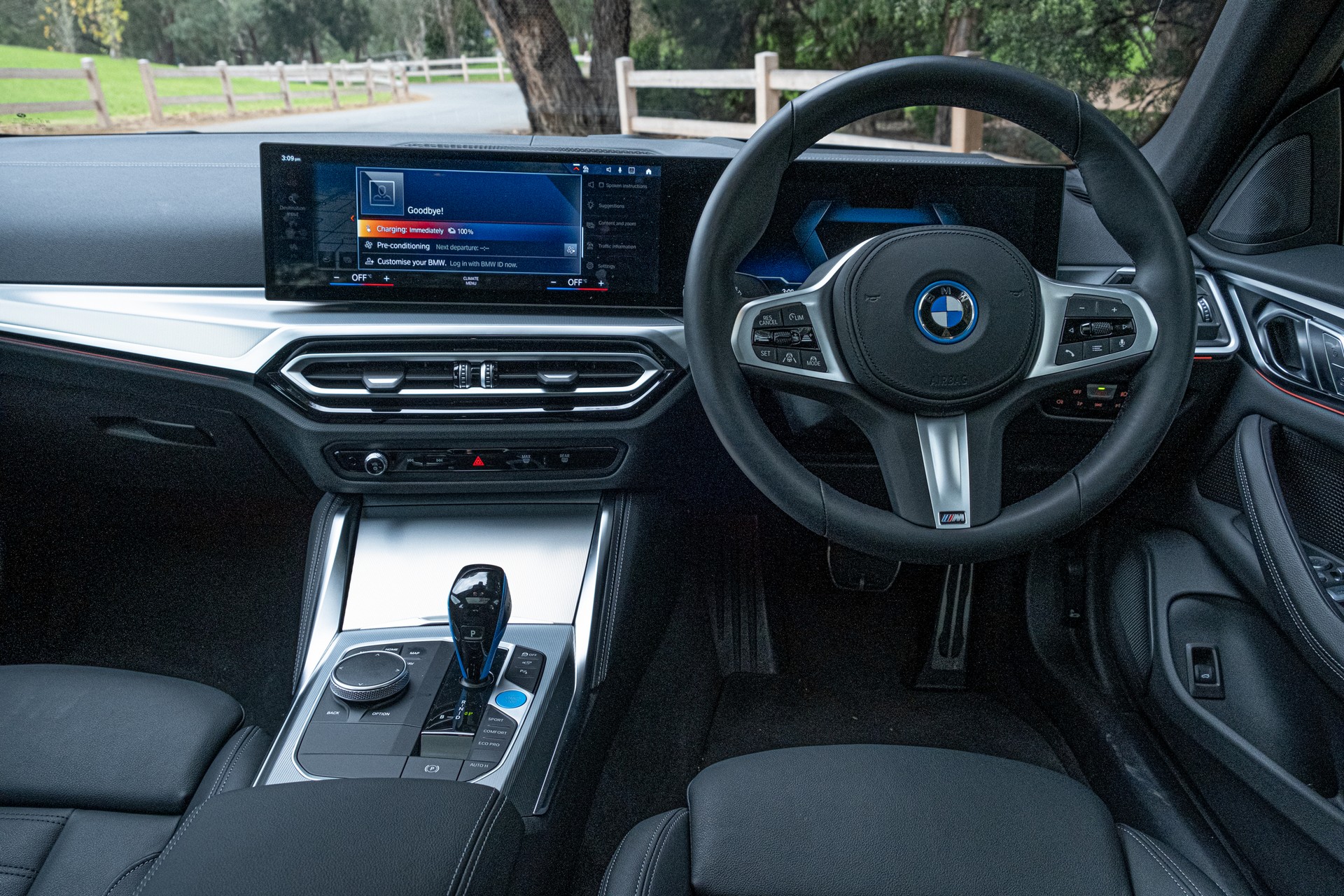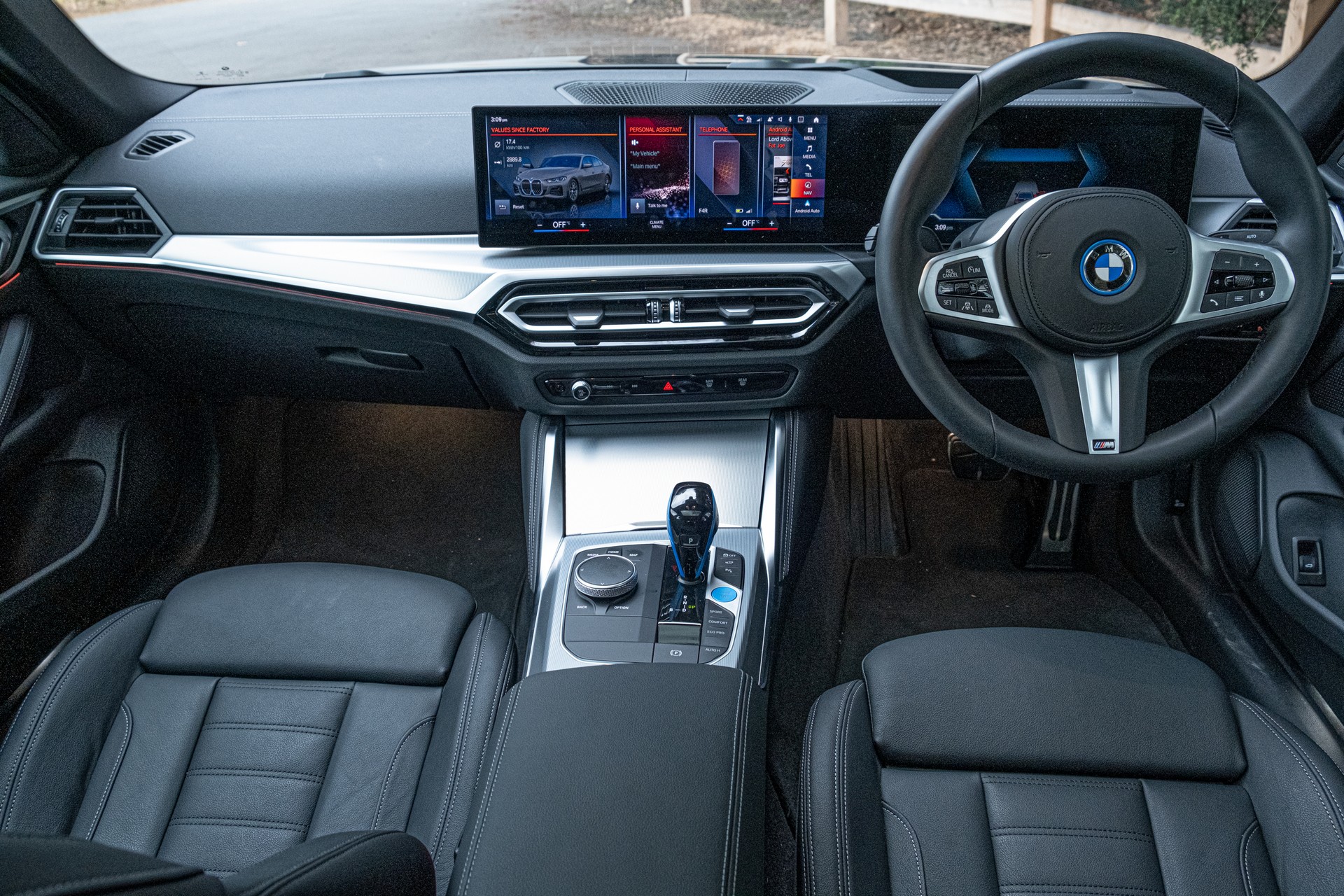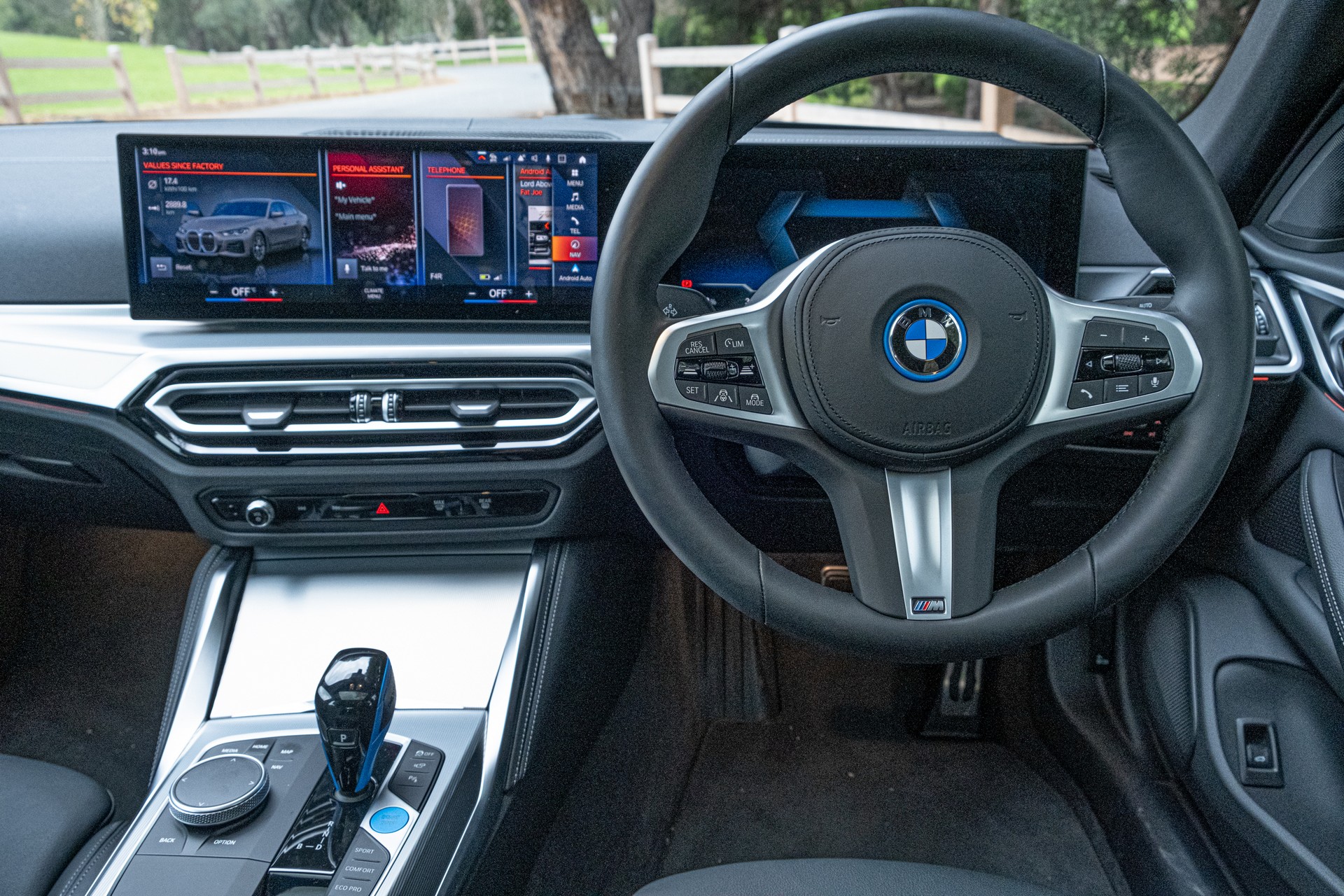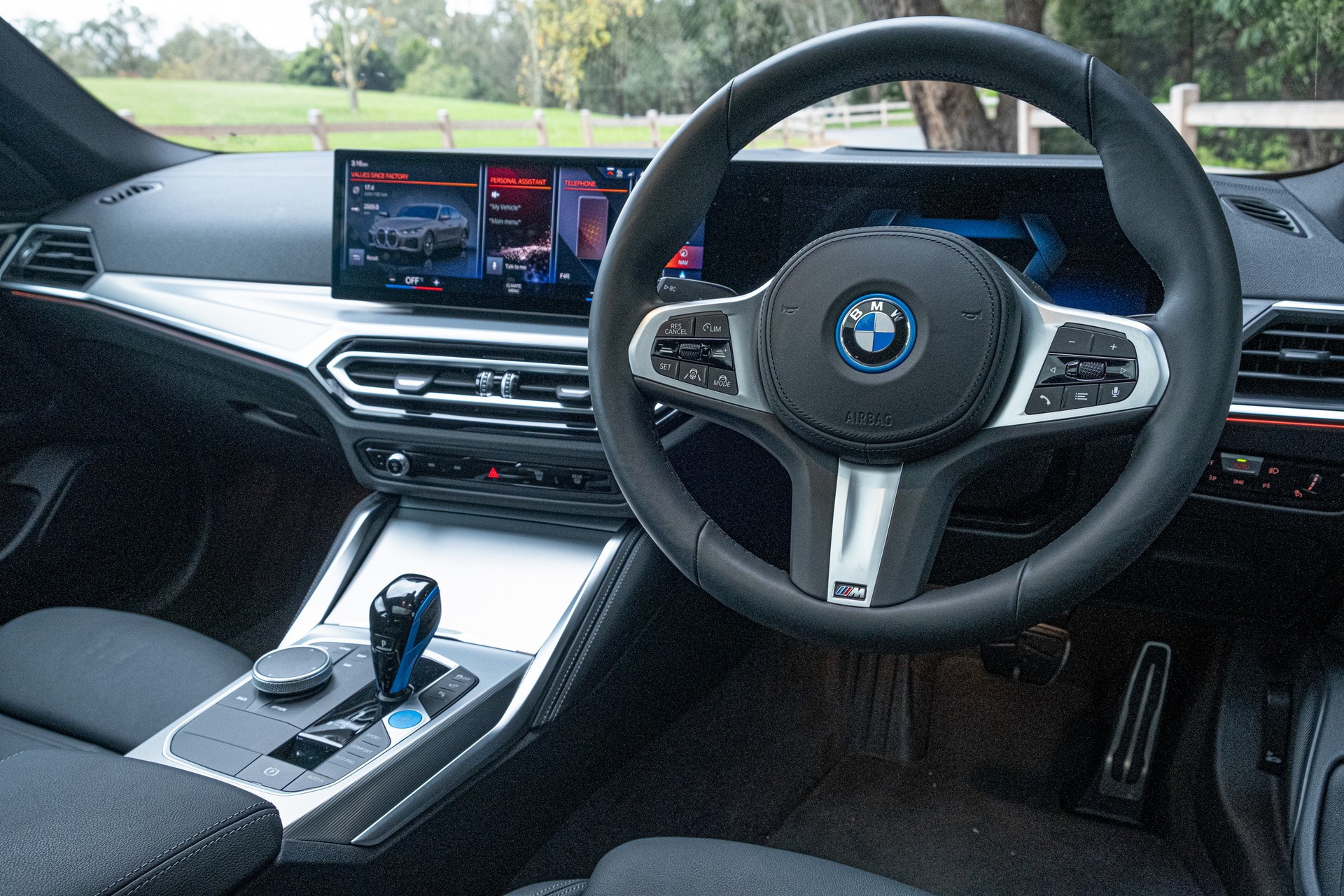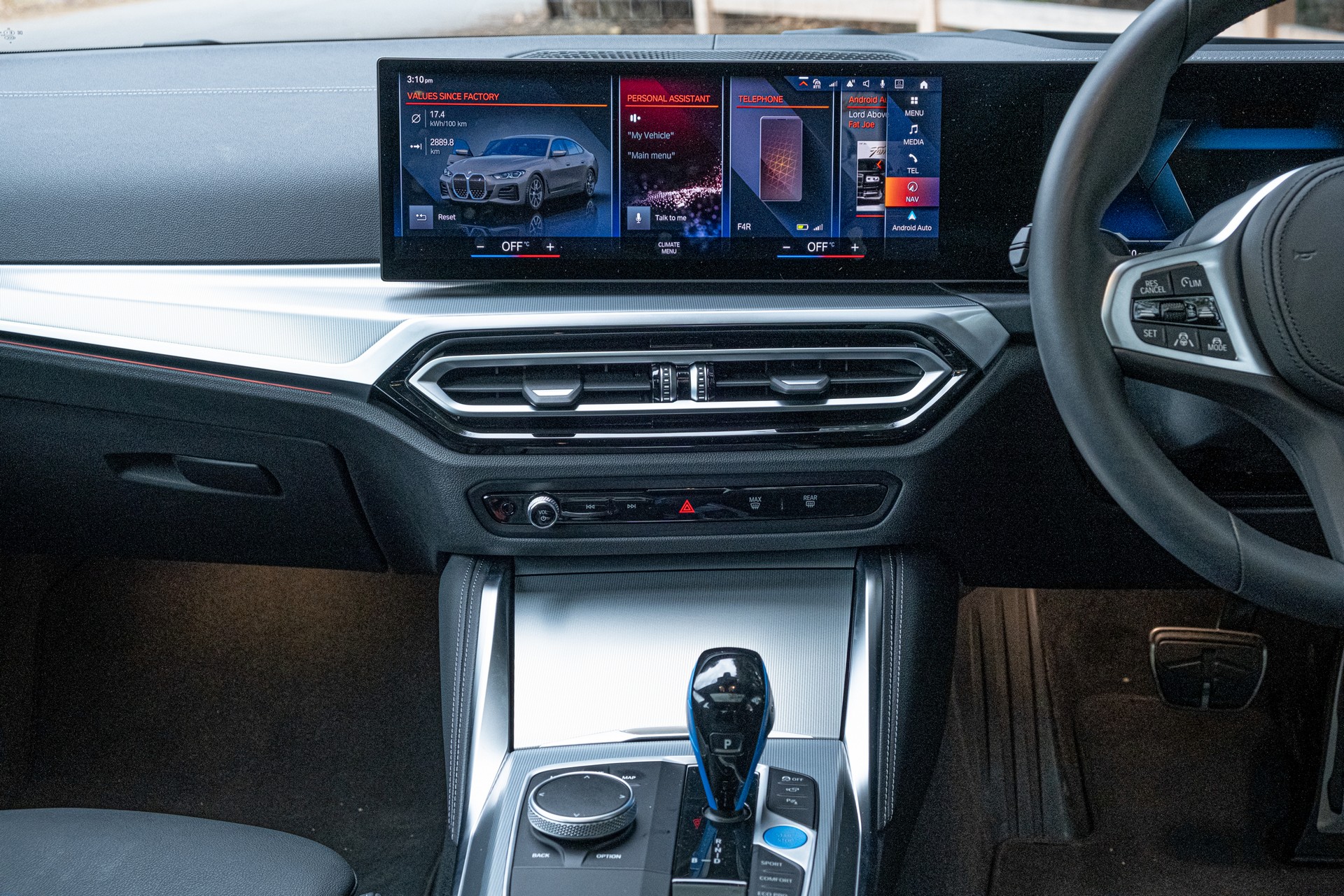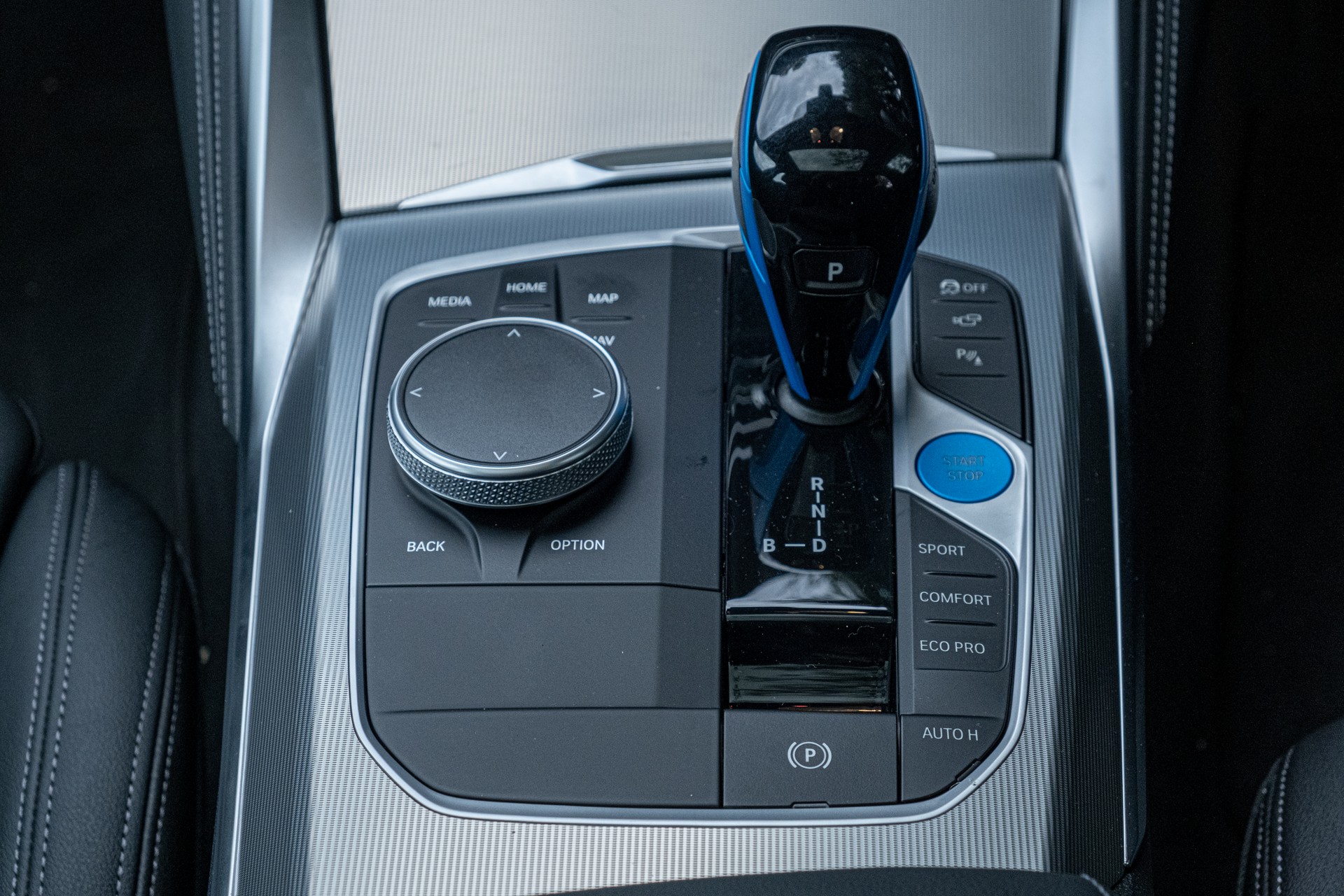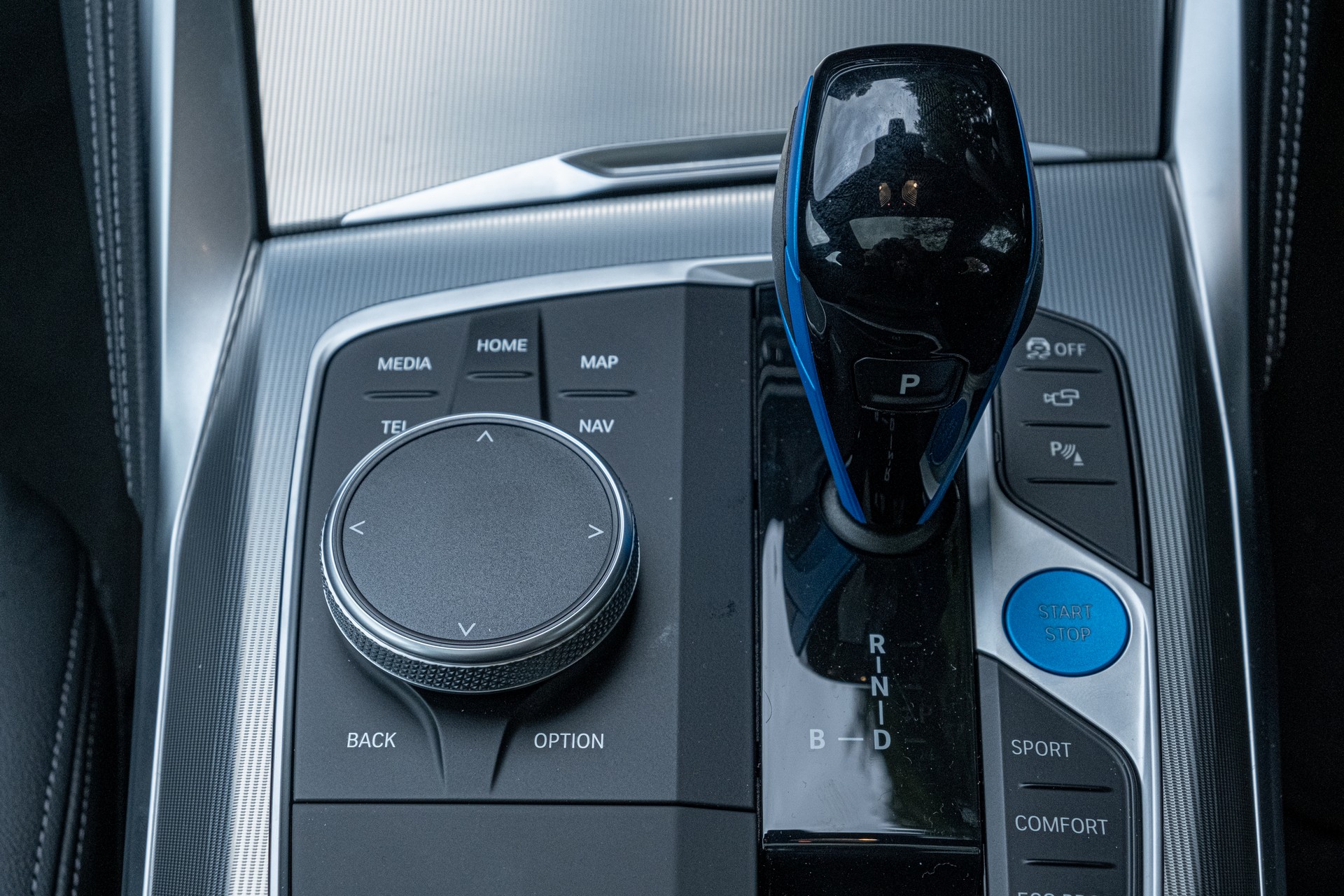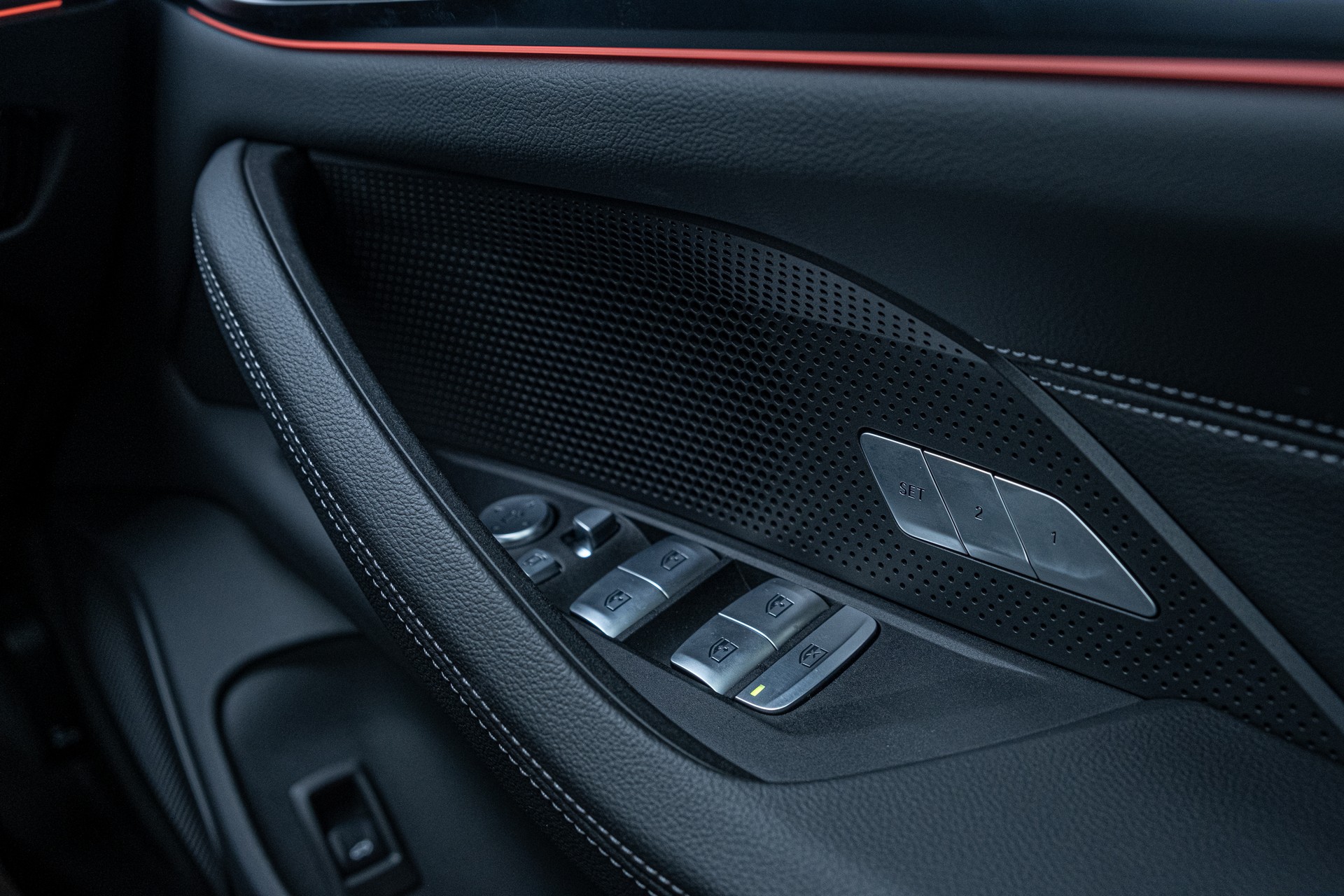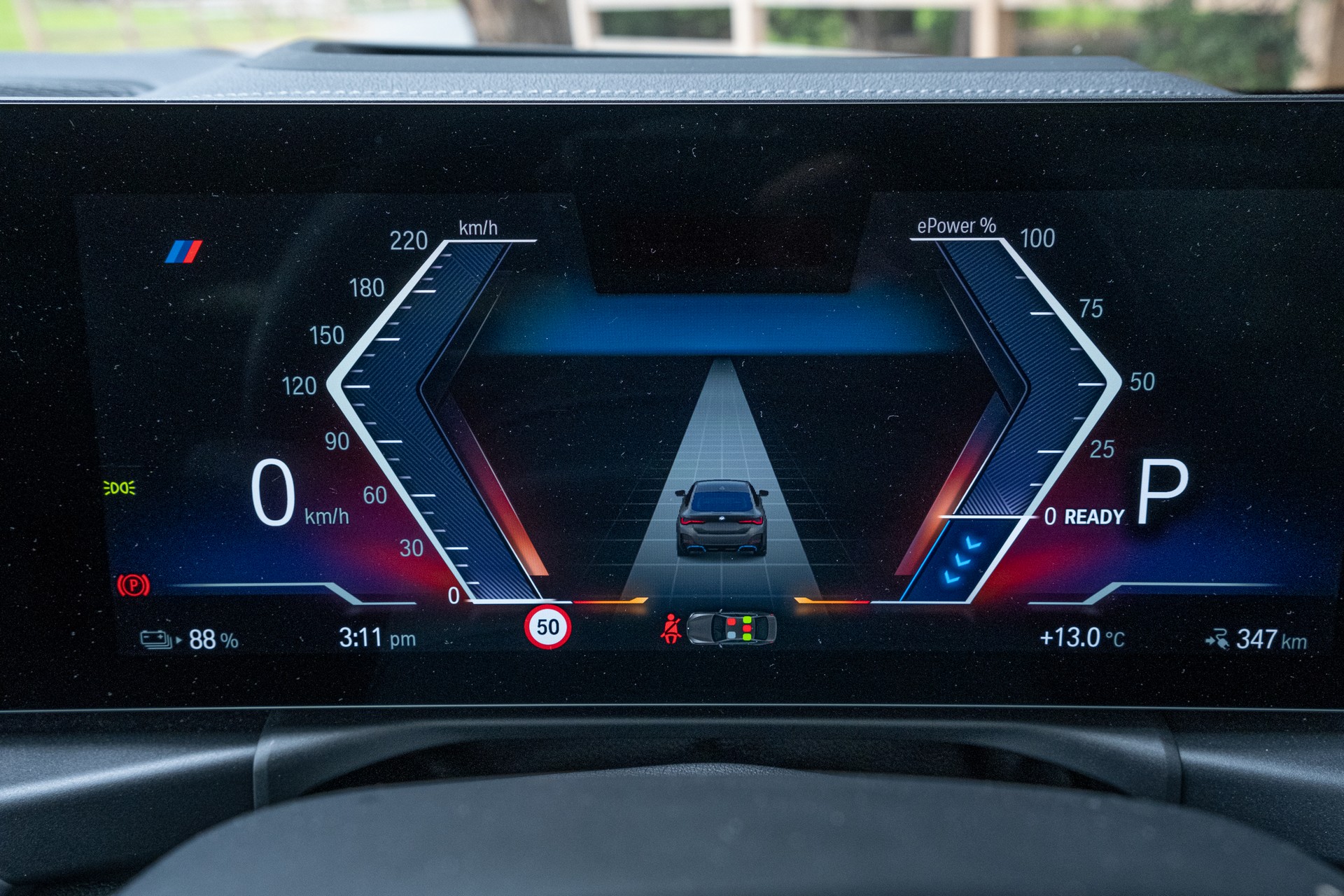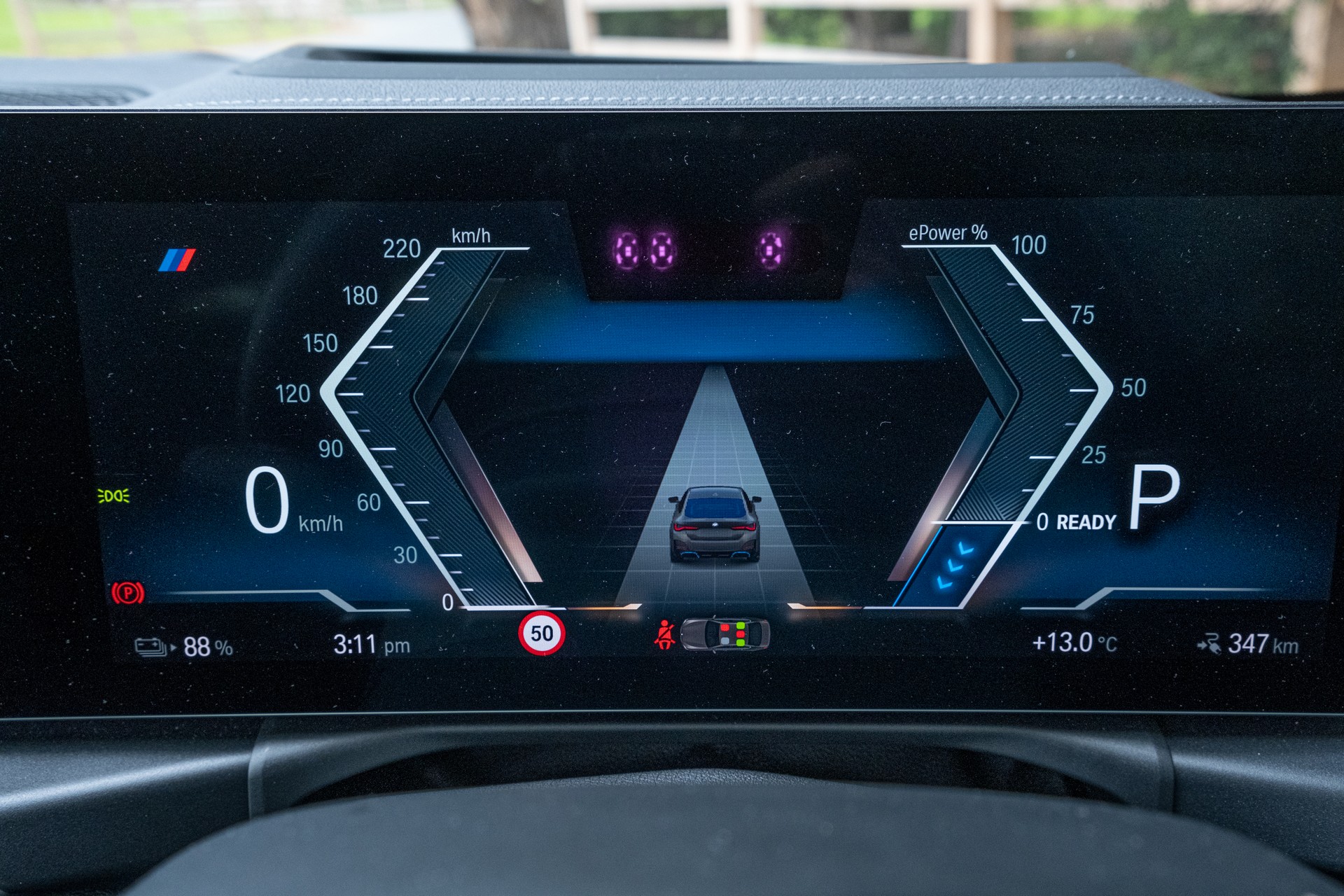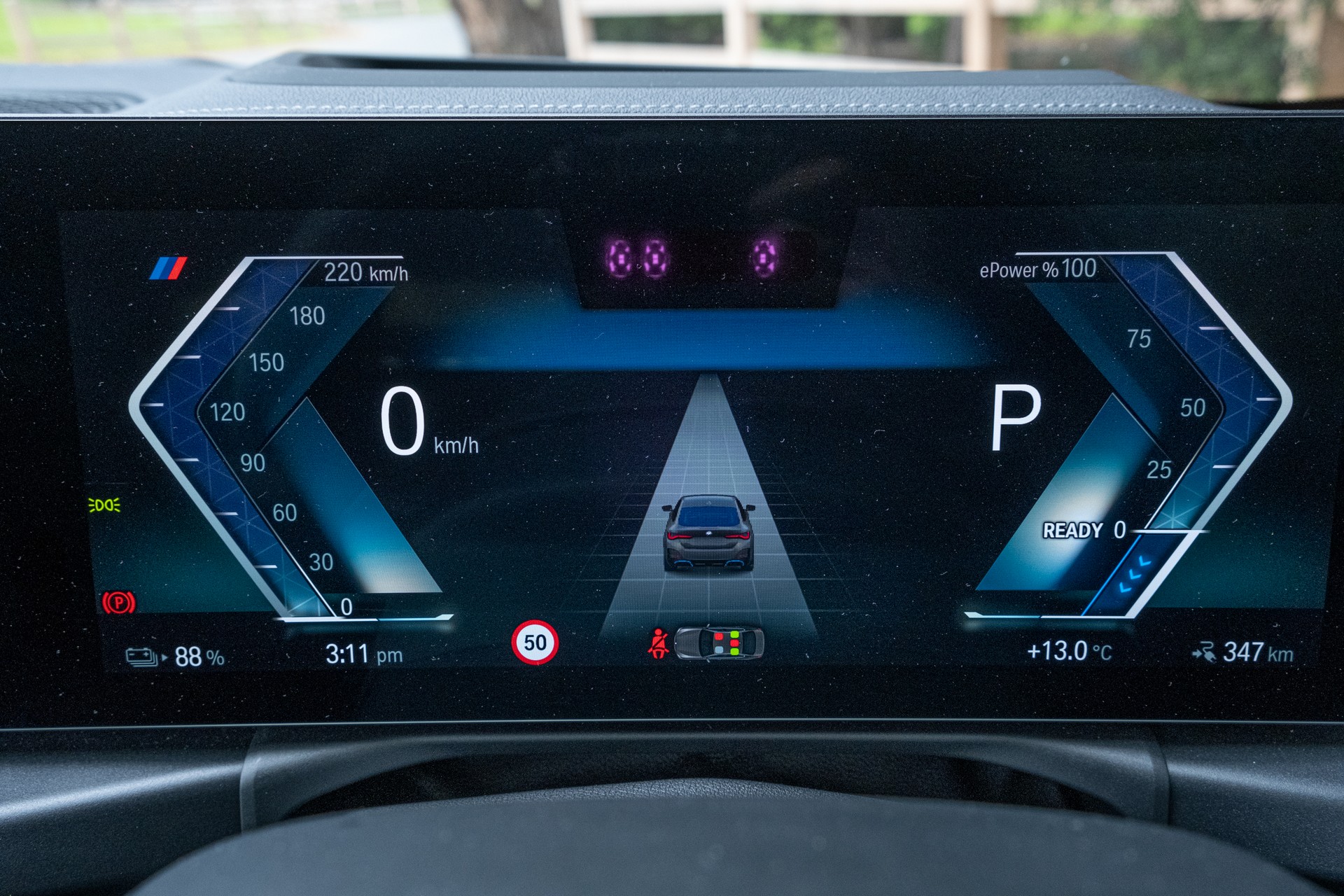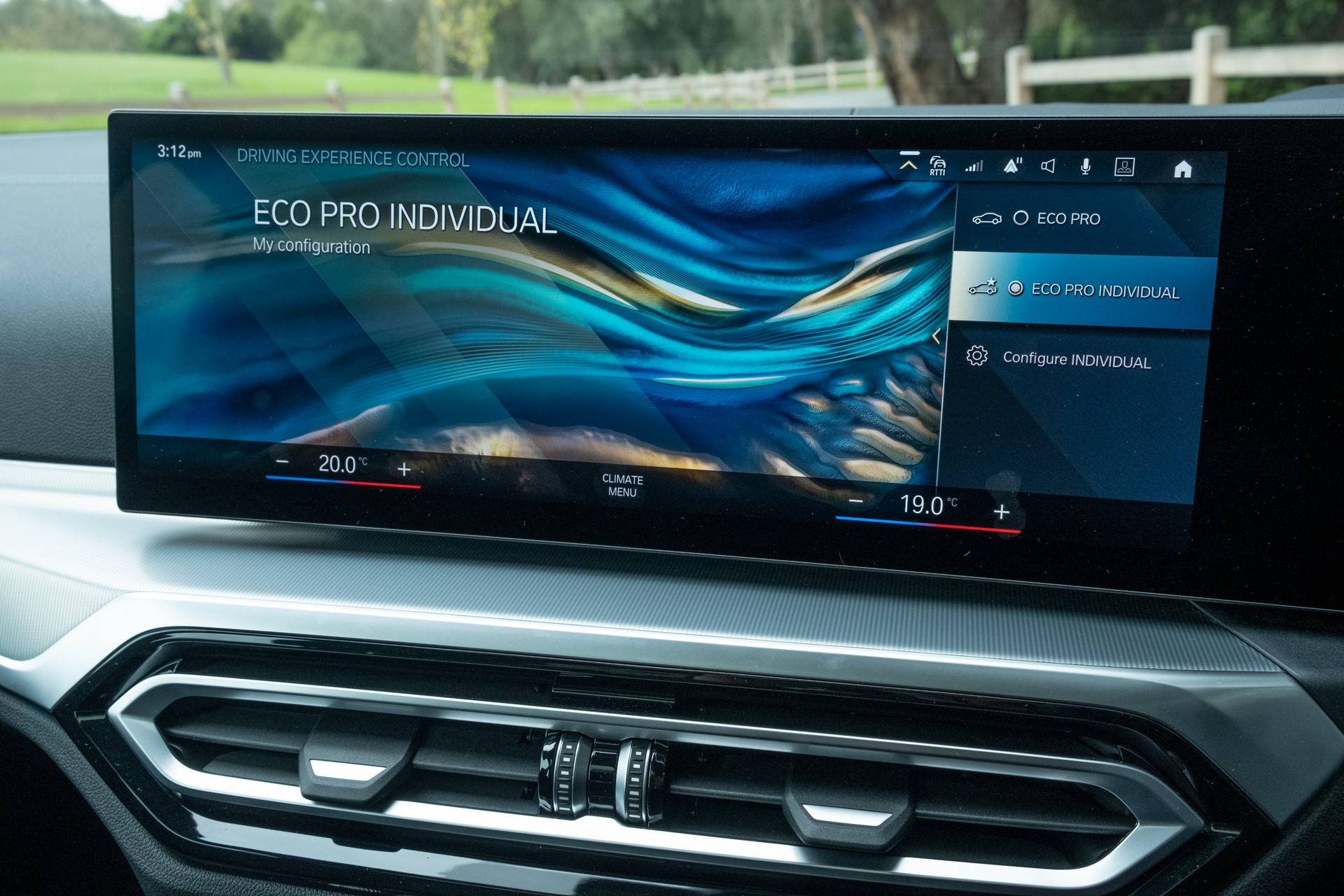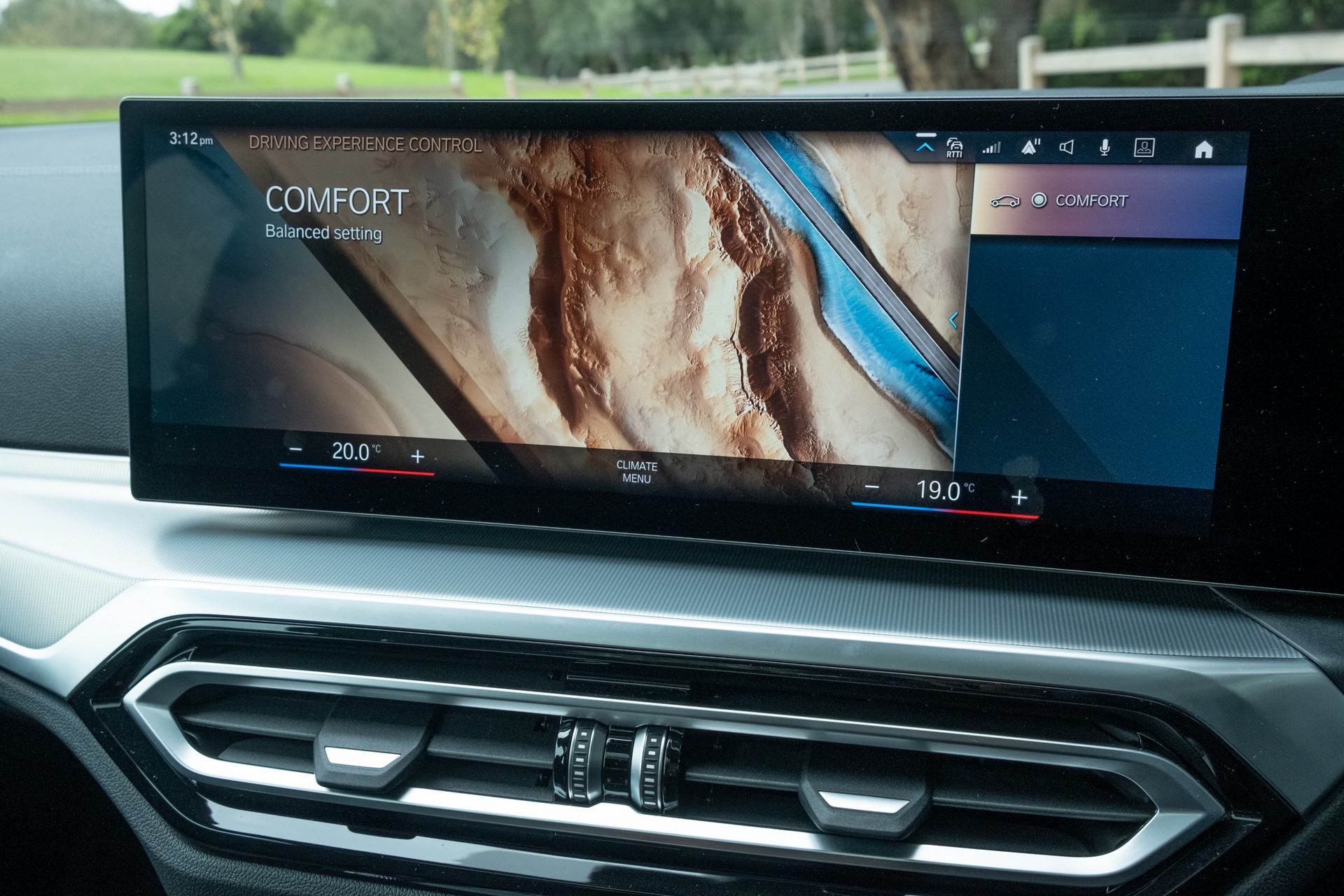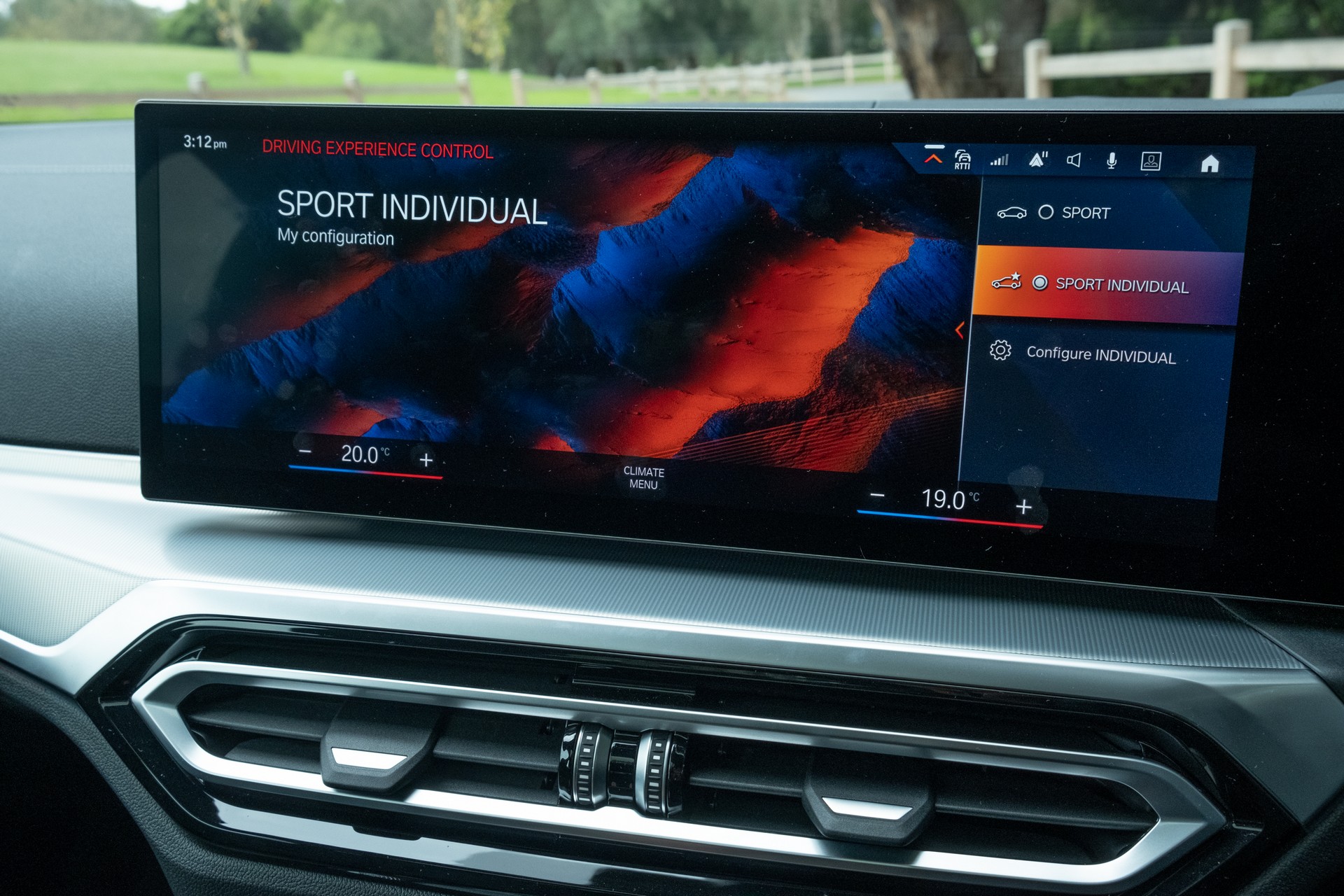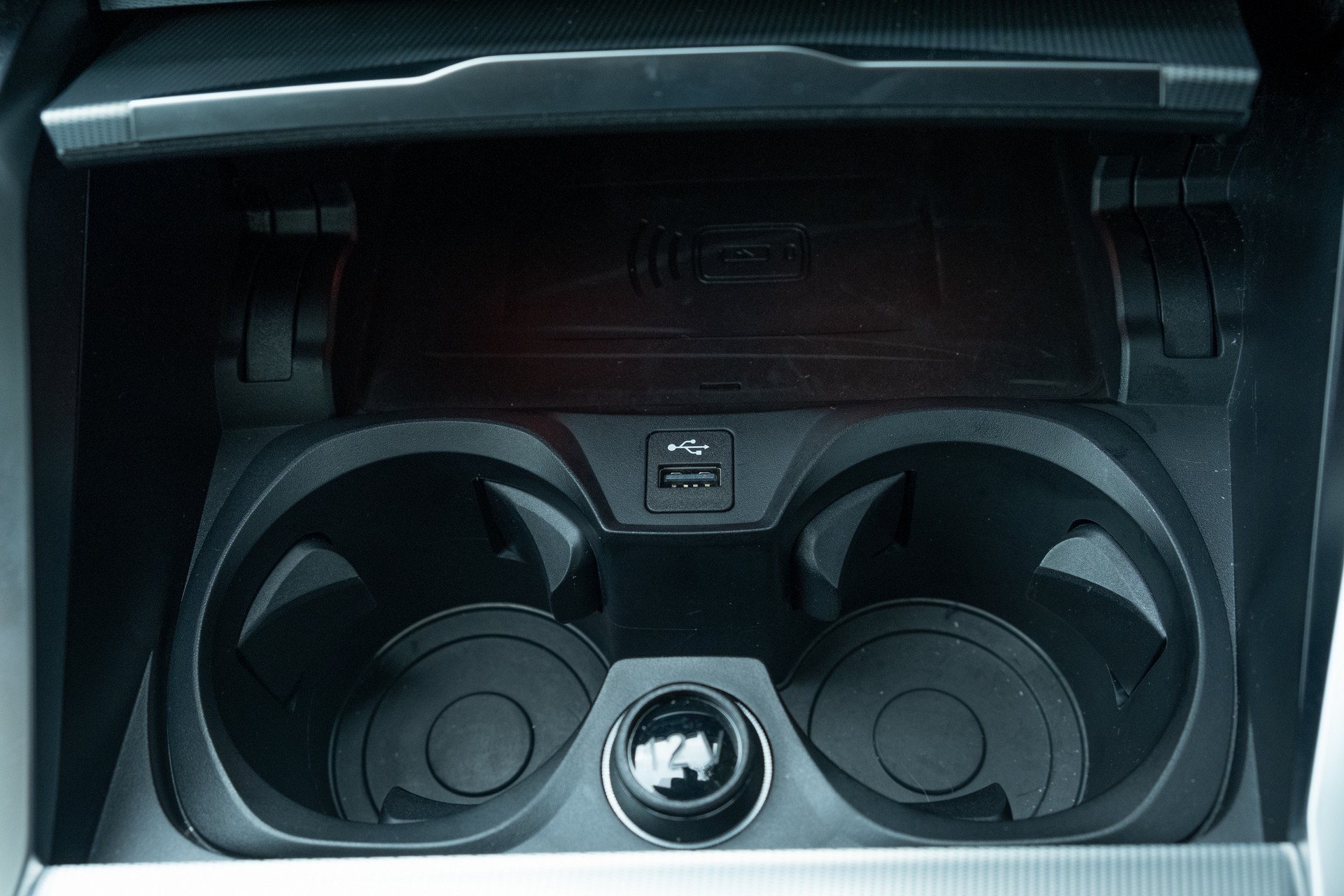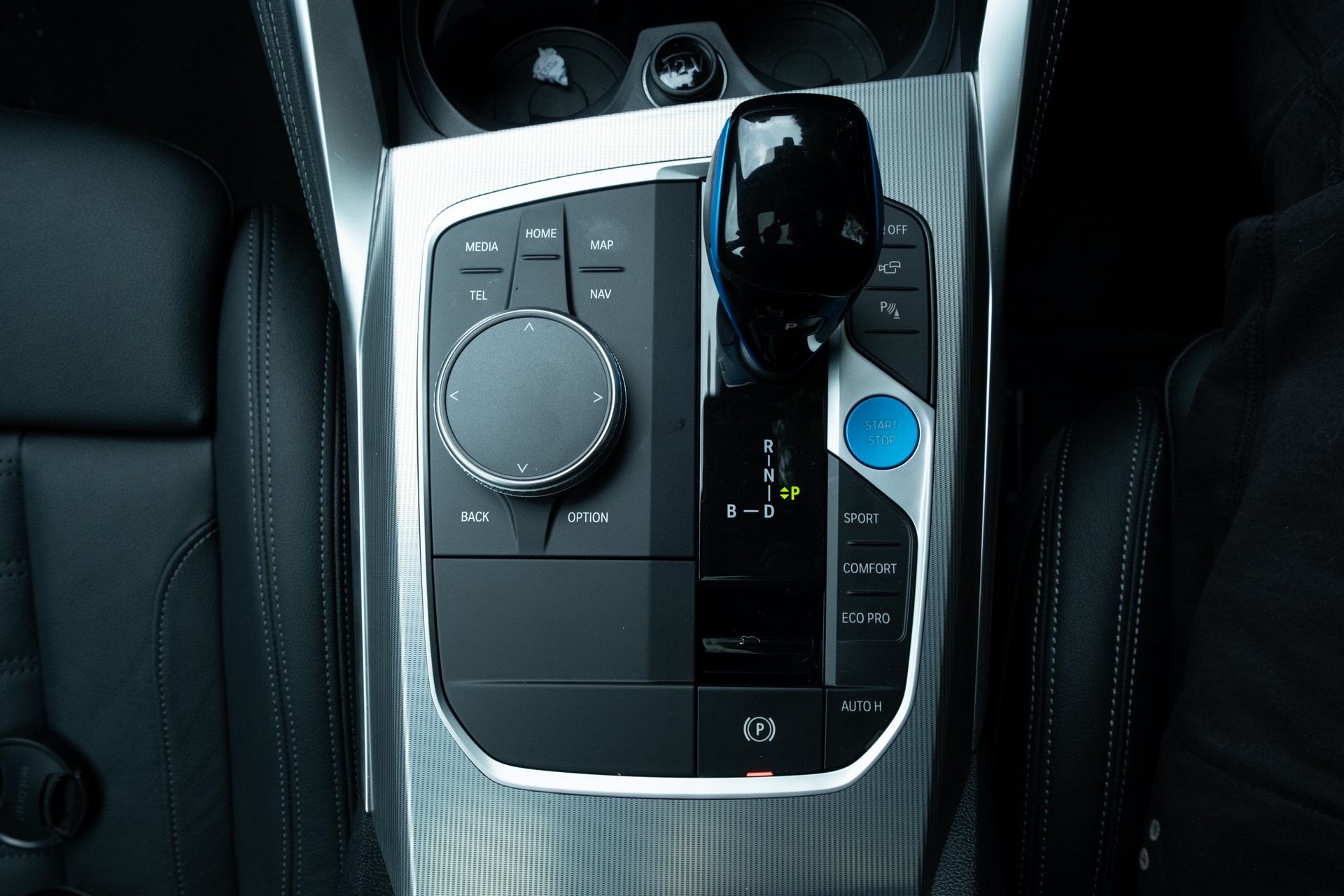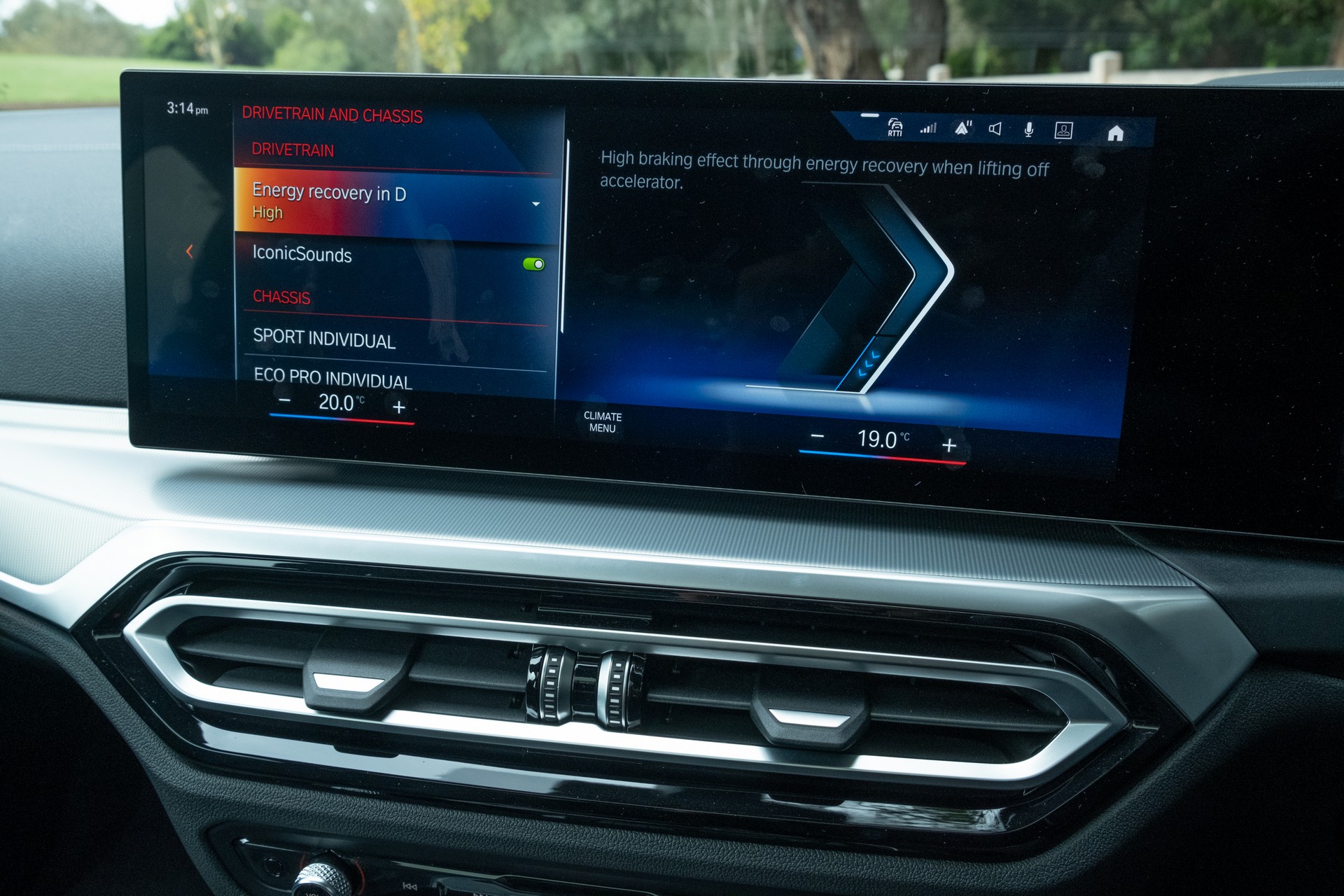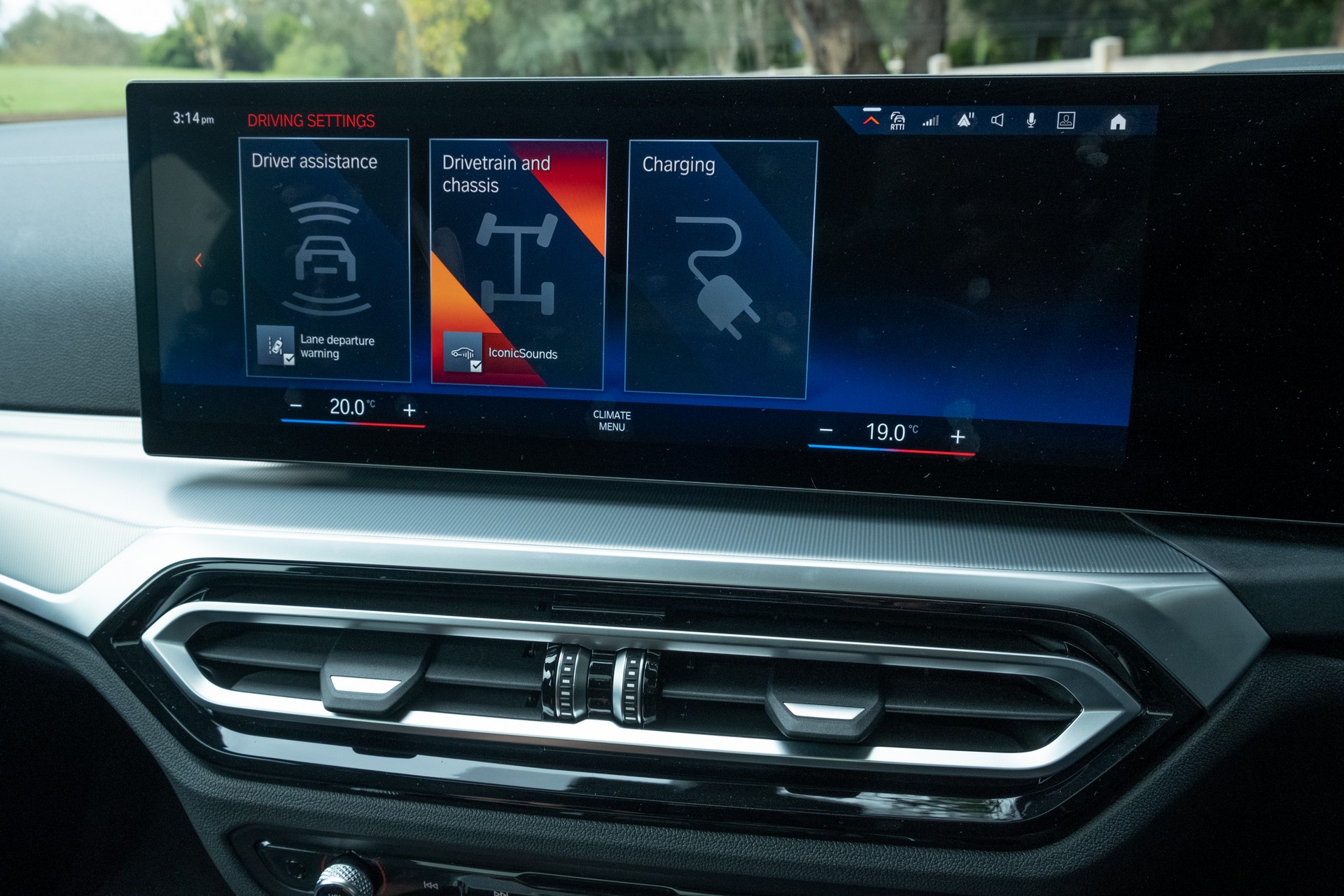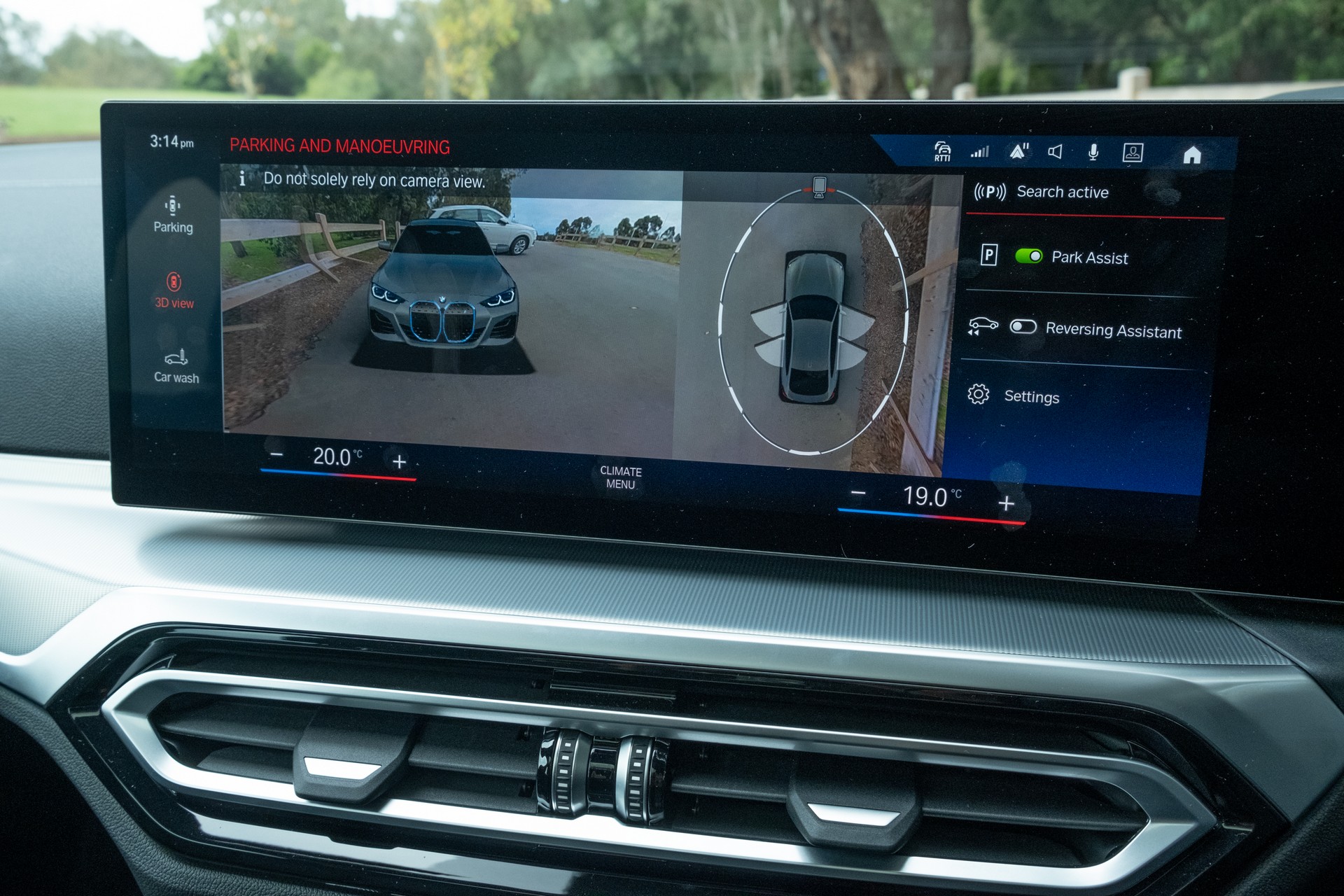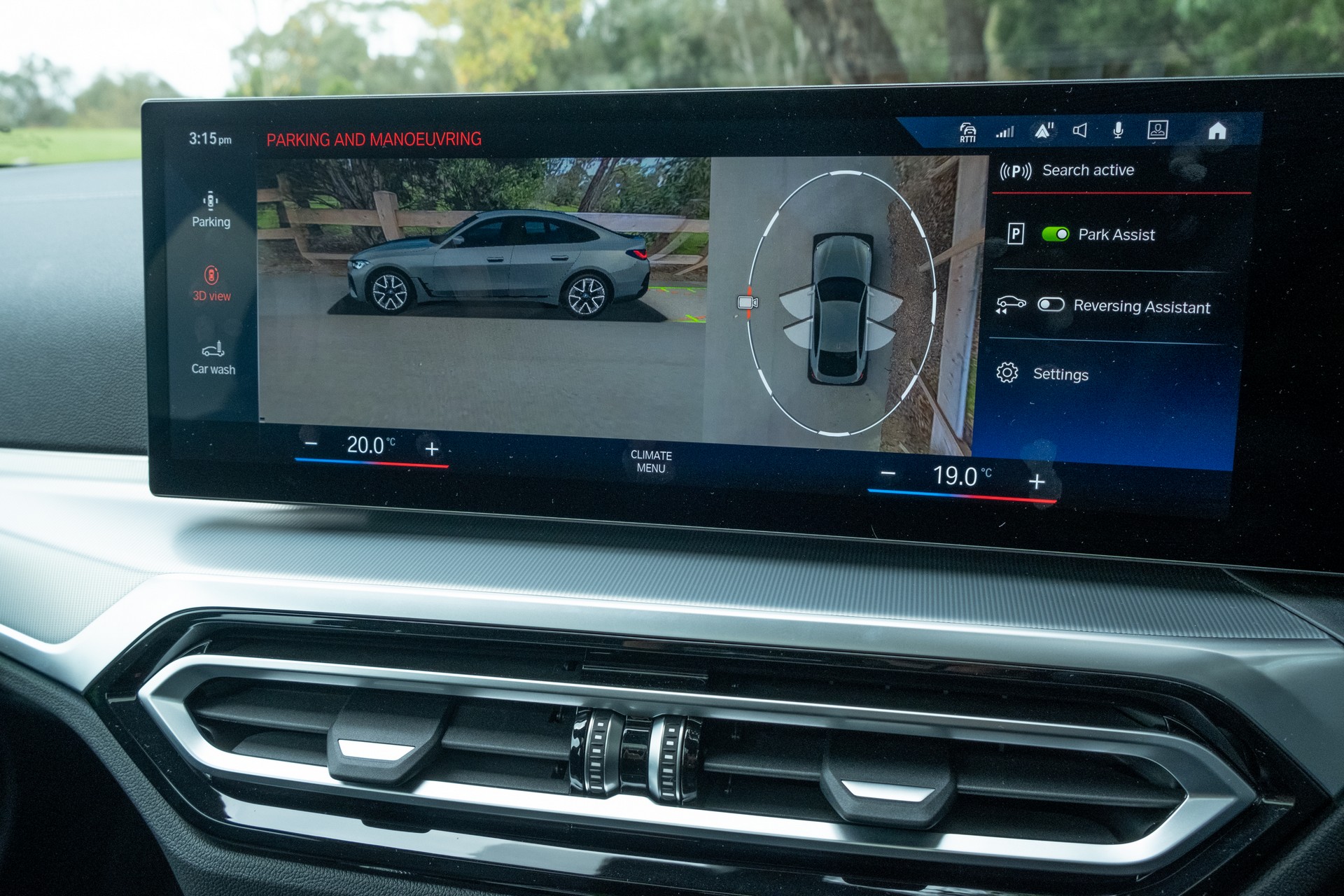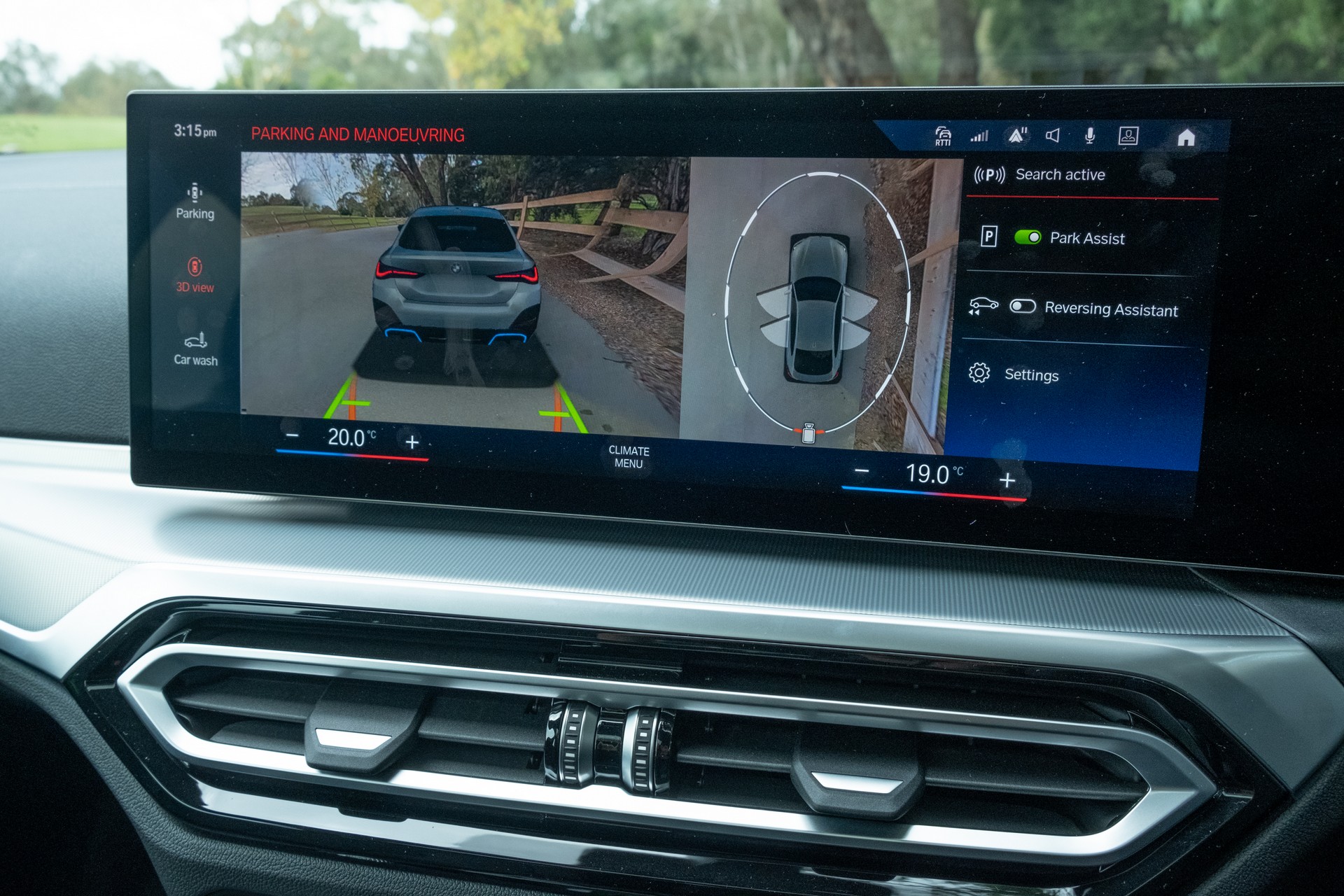Sedan sales may have fallen off a cliff in recent years but when BMW decided it needed a Tesla rival and it needed it fast, it opted for the 4-Series Gran Coupe as its base and targeted squarely at the Model 3. Has this decision paid off?
While the i4 isn’t the first all-electric vehicle from BMW, it is arguably the one with the most mass-market appeal, even though it does sit firmly in a premium section of the market and is more expensive than its key rivals.
The first thing to note about the i4 is that it isn’t underpinned by an all-electric platform and as mentioned, is based around the ICE 4-Series Gran Coupe. Most automakers are moving away from this and using dedicated architectures for their electric models, such as Hyundai, Kia, and Genesis with the recent Ioniq 5, EV6, and GV60. This doesn’t mean the i4 isn’t a compelling EV, however.
The spec sheet reads well
Tested here is the i4 eDrive40, the entry-level variant sold in Australia and fitted with an 80.7 kWh battery pack that drives an electric motor at the rear wheels with 250 kW (335 hp) and 430 Nm (317 lb-ft) of torque. Those figures may not be earth-shattering in the world of EVs but they are nothing to be sneezed at, especially when you consider that the entry-level ICE 420i Gran Coupe is rated at 135 kW (181 hp) and 300 Nm (221 lb-ft).
The i4 eDrive40 is good for a 0-100 km/h (0-62 mph) time of 5.7 seconds and will continue through to a 190 km/h (118 mph) top speed, figures which are more than enough for most buyers.
Of more importance are range and charging speeds. These are two areas where the BMW also performs well. It has a claimed range of 520 km (323 miles) on Australia’s combined testing cycle and accepts DC fast charging at speeds of up to 205 kW. That’s enough to charge the battery from 10-80 per cent in 31 minutes, approximately 12 minutes longer than the Ioniq 5, EV6, and GV60 but still decent. A home-installed 11 kW wall box can fully charge the battery in a touch over 8 hours.
On paper then, the i4’s ICE underpinnings don’t seem to impede its ability to be a good EV. But what about the interior?
It’s a BMW, of course it’s nice
The first thing those familiar with BMWs will notice is just how ‘normal’ the interior is. BMW hasn’t followed the lead of some of its EV rivals by adopting a spaceship-like design with the cabin of the i4 and instead, the majority of its components are shared with the regular 4-Series Gran Coupe. That’s no bad thing.
When we tested the 4-Series Gran Coupe a few months ago, we were very impressed with its cabin. The i4 improves on it even further with a host of welcome updates.
The most notable change is the implementation of BMW’s Curved Display consisting of a 12.3-inch digital instrument cluster and a 14.9-inch infotainment screen. These displays are a sight to behold and house all of the car’s important functions. Prior to spending a week with the i4, we were concerned about how the cluster would perform in sunny conditions without a traditional binnacle shrouding it. The screen performed flawlessly and we never noticed any glare.
Driven: 2022 BMW 420i Gran Coupe Has Style And Suave
BMW has also moved away from the traditional climate control buttons found in the regular 4-Series Gran Coupe and shifted functionality to the infotainment screen. We’re not so fond of this change as the new climate settings aren’t particularly intuitive. The other two notable changes to the i4 include a new black and blue shifter and a blue Start/Stop button. Other than these components, most of the cabin is shared with the ICE model and that includes the transmission tunnel.
BMW’s Curved Display runs the latest BMW Operating System 8. This software is a significant improvement from those used by older models. It is easy to understand and the screen itself is very responsive to the touch. Wireless Apple CarPlay and Android Auto are nice inclusions.
Space in the rear is limited. The floor of the i4 eDrive40e is quite high and the roof is low, meaning taller passengers will feel cramped. However, the Model 3 isn’t any better in the headroom stakes due to its panoramic glass roof. Luggage space is respectable at 470 liters (16.59 cubic-feet) and 1,290 liters (45.5 cubic-feet) with the rear seats folded flat.
Plenty of safety features come standard on the base i4. These include six air bags, blind-spot warning, rear cross-traffic alert, lane-keeping assist, high- and low-speed autonomous emergency braking, a 360-camera, and front and rear parking sensors.
Refined and smooth
As is so often the case with electric vehicles, it is the straight-line performance of the i4 eDrive40 that first strikes you.
BMW quotes a 0-100 km/h (62 mph) time of 5.7 seconds but to those unfamiliar with performance EVs, it can feel a touch quicker given the instant torque and response that it provides. The lack of gear changes also adds to the feeling of speed.
When the road gets twisty, the i4 eDrive40 is a joy to drive but it does weigh in at a hefty 2,125 kg (4,684 lbs) and that weight is quite noticeable. The sharpness of the turn-in is comparable to the standard 4-Series Gran Coupe but as you negotiate a corner, the car does start to feel quite heavy. The rear end is also very happy to rotate just like any good sports sedan of this kind.
Our test car was equipped with Hankook Ventus S1 evo3 tires measuring both 245/40R19 all around. These tires perform brilliantly in all conditions and are considered by most to be comparable to the likes of the new Michelin Pilot Sport 5 and Goodyear Eagle F1 Asymmetric 6.
Those who experience the i4 eDrive40 may also be pleasantly surprised by just how serene the car is to drive on a highway. With the driver-assistance features enabled and cruise control set, there is very little road noise that comes from the tires or from the wind. However, if you do want some sound, BMW’s IconicSounds system developed by Hans Zimmer does just that. This can be turned on or off through the settings and varies the soundscape depending on what driving mode you’re in. We really enjoyed it when driving the i4 in Sport mode as it makes it sound like a spaceship when you’re accelerating. Sure, it’s a gimmick, but it beats accelerating with no sound or emotion at all.
A regenerative braking system also comes standard on the car, offering ‘High’, ‘Medium’, ‘Low’, and ‘Adaptive’ settings. The system works well and the transition between the regenerative brakes and the mechanical brakes is near seamless. Unfortunately, the regenerative braking system cannot be completely disabled like in some rivals and the ‘Adaptive’ setting is quite unpredictable. There is also no one-pedal driving mode and it’s a shame that the settings for the regenerative brakes are buried in the menus.
We averaged 23 kWh/100 km during our week with the i4 including a mix of city and highway driving. Since our test car left the factory, however, it had averaged 17.8 kWh/100 km over roughly 3,100 km (1,926 lbs) of driving.
Is it worth the premium over cheaper alternatives?
Prices for the BMW i4 eDrive40 start at AU$99,900 ($70,834) plus on-road costs. That’s a lot of money and approximately AU$16,000 ($11,344) more than a 430i Gran Coupe that offers similar levels of performance. It is also pricier than its electric rivals.
Like many other countries, the Tesla Model 3 remains Australia’s best-selling EV. The entry-level rear-wheel drive model doesn’t pack quite the same punch as the i4 eDrive40 but is significantly cheaper, starting at AU$63,900 ($45,308) before on-road costs. The flagship Model 3 Performance is available from AU$88,900 ($63,034) before on-road costs whereas the flagship i4 M50i starts at AU$124,900 ($88,560). The price discrepancy between the Model 3 and i4 is significant but there’s no doubt the BMW feels like the more premium and refined car with a far superior interior.
It’s also worth comparing the i4 eDrive40 to the Hyundai Ioniq 5 and Kia EV6 on price, even though they are larger crossovers. The Hyundai starts at AU$71,900 ($50,980) for the rear-wheel drive model and AU$75,900 ($53,816) for the all-wheel drive variant. Meanwhile, the EV6 range starts at AU$67,990 ($48,208) and tops out at AU$82,990 ($58,844). Local pricing for the Genesis GV60 has not been announced.
Then there’s the Polestar 2, starting at AU$59,900 ($42,472) and rising to AU$64,900 ($46,017) for the Long Range single motor version and AU$69,900 ($49,562) for the Long Range dual motor one.
There’s no denying that the BMW i4 eDrive40 is a good EV. It will feel very familiar to pre-existing BMW owners and those looking for a vehicle in this segment. Will the high price, however, impact sales? Only time will tell.



